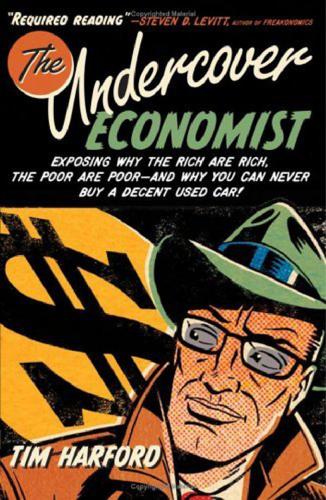
The Undercover Economist: Exposing Why the Rich Are Rich, the Poor Are Poor, and Why You Can Never Buy a Decent Used Car
by
Tim Harford
Published 15 Mar 2006
In the case of congestion charging, the truth is striking: in the United Kingdom, poor people do not drive—they bicycle, walk, or take the bus. The poorest tenth of the population spends almost seven times less on fuel than the richest tenth, as a percentage of their much smaller income. The total spending on fuel by the richest 10 percent is at least thirty times more than by the poorest 10 percent. The conclusion is that congestion charging not only improves efficiency, it also redistributes money by raising more tax from the rich. That’s nice for the defenders of congestion charging in Britain, but useless in the United States, where the poor still drive a lot and so pay larger amounts of tax as a percentage of their incomes.
…
What we know is that whatever society decides about the seriousness of the externality, externality charges are the most efficient way to deal with it. Well-designed congestion charges, for instance, are the most efficient way to achieve any given reduction of road use. How much of a reduction is desirable is an open question, but congestion charging can deliver no matter what the answer is. There are alternatives to congestion charging which stop short of the extreme of an outright ban on driving. The trouble is, they don’t work as well. For instance, the government could give everybody vouchers, which allow them to drive up to twenty miles per week.
…
That’s nice for the defenders of congestion charging in Britain, but useless in the United States, where the poor still drive a lot and so pay larger amounts of tax as a percentage of their incomes. But this needn’t be an impossible objection, because externality charges can be designed not to redistribute very much. In the case of roads, the government could scrap the vehicle ex-cise duty, which is a large up-front tax, while starting to levy congestion charges on each trip. This would capture the efficiency benefits of a congestion charge without having major effects on distribution. It is possible to neutralize much of the redistribution caused by the externality charge, while keeping its efficiency-boosting effects. This is a variant of the lump-sum tax on Tiger Woods proposed in chapter 3: we can use lump-sum taxes to redistribute without destroying efficiency.
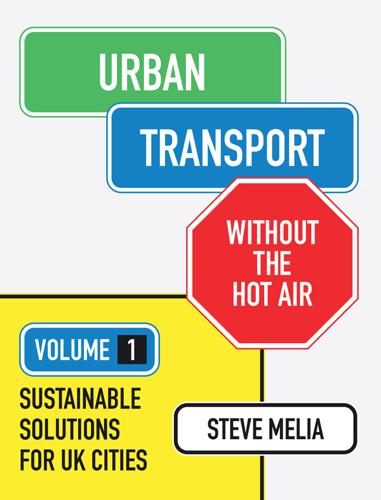
Urban Transport Without the Hot Air, Volume 1
by
Steve Melia
Another study argued that the congestion had little impact on modal shift, most of which came from improvements to bus services. It also pointed out that Birmingham achieved similar traffic reductions in its city centre without a congestion charge (though the increase in Birmingham’s population has not been so rapid).361 Traffic in London’s congestion charge zone is a very small proportion of the total, so its direct impact on London as a whole was never going to be very great. The cost of transport in London The ‘tried and tested’ technology chosen for the London congestion charge was expensive to operate. In the early years the net revenue made very little contribution to the expensive subsidized buses, but that has gradually changed, as costs have been controlled, and bus fares raised.
…
Table 7.4. 357 From the 1991, 2001 and 2011 censuses – Table KS17 358 Melia, S., Barton, H. and Parkhurst, G. (2013) ‘Potential for carfree development in the UK’. Urban Design and Planning. 166 (2), pp. 136-145. On: eprints.uwe.ac.uk/ 359 TfL (2008) ‘Congestion charging impacts monitoring’. Report: 6.Transport for London. 360 Buckingham, C., Doherty, A. R., Hawkett, D. C. L., Vitouladiti, S. (2010) ‘Central London congestion charging: understanding its impacts’. Proceedings of the ICE - Transport, 163 (2) 1 June pp. 73–83 361 Givoni, M. (2011) ‘Re-assessing the results of the London congestion charging scheme’. Urban Studies. 362 TfL (2013) ‘Annual report and statement of accounts 2012/13’. On: www.tfl.gov.uk 363 TfL (2013) ‘Annual report and statement of accounts 2012/13’.
…
Crossrail would provide London with an east–west suburban rail line in a tunnel, similar to the RER line A, which opened in 1977 in Paris. It was one of many transport projects at different stages of planning or implementation when Johnson took over from Livingstone in 2008. The London congestion charge The most controversial transport policy initiated by Livingstone was the congestion charge, a daily charge for vehicles entering central London. As he points out in his autobiography, the idea came from the political right. For neoliberal economists the logic is straightforward: a scarce resource should be allocated to those who pay for it.
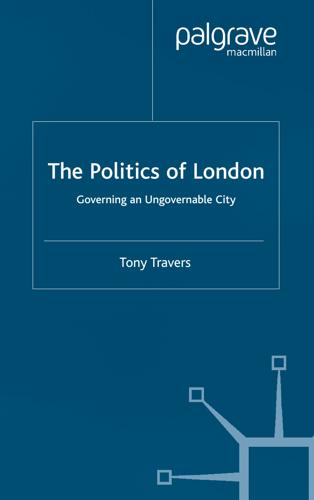
The politics of London: governing an ungovernable city
by
Tony Travers
Published 15 Dec 2004
The development of the Mayors’s congestion charging policy provides a good case study. A consultation paper was worked up and published by the late summer of 2000 by a small number of GLA and TfL staff tightly controlled by the mayor’s closest advisers. The consultation paper was published before the board of TfL had seen or approved it. Subsequent development work was undertaken within TfL by officials working closely with the mayor. Neither the TfL board nor the overwhelming majority of GLA staff were involved in the propagation and early implementation of congestion charging. Similarly, when the mayor – as chair of TfL – decided to change key TfL staff, such as the original head of street management and the equivalent bus director, he did so operating through his office not via the board.
…
The major reports during 2000 to 2003 were skewed towards the environment (topics included graffiti; the mayor’s waste strategy; the mayor’s green spaces policy; the transportation of nuclear waste; recycling; and the mayor’s air quality strategy) and transport (including: congestion charging (twice); buses in outer London; safer routes home; bus services more generally; and the mayor’s transport strategy). There were also reports on regeneration funding, London weighting, housing for key workers; the GLA elections; future priorities for the Underground and the organization of major events. This issue is further considered in Chapter 8. Clearly some of the assembly’s work was driven by the need to consider mayoral initiatives (such as congestion charging) or policies (such as the strategies). Scrutiny was also possible at question time with the mayor and in other forums.
…
Finally, there was clearly a reasonable amount of goodwill within the assembly towards the mayor who clearly had a complex job in setting up the new authority. Scrutiny committees that concentrated on published mayoral policy such as congestion charging and the draft transport policy found it easier to challenge the mayor and his functional bodies than those that undertook more general inquiries. The scrutiny of congestion charging had the advantage of massive expertise in its appointment of external adviser (it chose Martin Richards, who had been managing director of a company that had specialized in official research projects about road pricing).
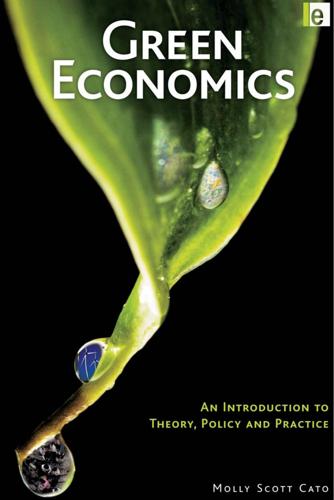
Green Economics: An Introduction to Theory, Policy and Practice
by
Molly Scott Cato
Published 16 Dec 2008
GREEN TAXATION 163 BOX 10.1 THE LONDON CONGESTION CHARGE The congestion charge in London was motivated more by irritation at the slow pace of traffic in the city than by environmental concern, but it has none the less been an important example of how traffic can be reduced in one of the world’s largest cities. By the 1990s traffic was moving more slowly in the UK’s capital than it had been at the beginning of the 20th century before cars had been invented! Following his election as mayor in 2000, Ken Livingstone launched an 18-month period of public consultation and the outcome was a decision to introduce a congestion charge based on area licensing rather than parking levies.
…
The reduction in vehicle usage within the charging zone was greater than expected, leading to less revenue than had been predicted. The London Congestion Charge appears to have been a political and environmental success. It has encouraged changes in behaviour towards less polluting forms of transport, reducing CO2 emissions. It is also an example of a tax which is flexible, since the rate can be increased or decreased depending on the relative balance of traffic and public transport desired by the city’s residents. Table 10.2 Impact of the congestion charge on traffic in London Type of vehicle Cars Vans Trucks Taxis Buses Motorcycles Bicycles All vehicles % change -34 -5 -7 +22 +21 +6 +28 -12 Source: J.
…
Table 10.2 Impact of the congestion charge on traffic in London Type of vehicle Cars Vans Trucks Taxis Buses Motorcycles Bicycles All vehicles % change -34 -5 -7 +22 +21 +6 +28 -12 Source: J. Leape (2006) ‘The London congestion charge’, Journal of Economic Perspectives, 20/4: 157–76. Robertson’s calculation for the potential revenue from site-value tax on land in the UK was between £50 billion and £90 billion annually in 1994.17 Other taxes in the green economist’s knapsack can be justified on the basis of being taxes on commons. For example the streets of a thriving city belong to all; if only a few choose to use them for private transport then that right can be charged for and the proceeds shared with others through a congestion charge. By a similar argument the right to pollute the Earth’s atmosphere with greenhouse gases, causing economic disaster for others, should be paid for with a carbon tax. 164 GREEN ECONOMICS A carbon tax can be considered a ‘commons tax’, since it attempts to reduce behaviour that adds to the amount of CO2 pollution in the atmosphere, which is a shared commons.
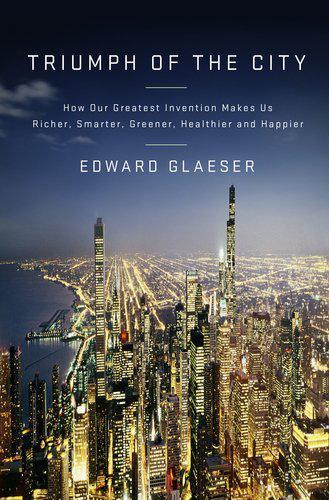
Triumph of the City: How Our Greatest Invention Makes Us Richer, Smarter, Greener, Healthier, and Happier
by
Edward L. Glaeser
Published 1 Jan 2011
He initially required all drivers to pay £5 each time they entered an inner corridor of London; the charge later rose to £8. For forty years since William Vickrey introduced the idea, congestion charging has appealed to economists who think that people should pay for the social costs of their actions. One person’s driving creates congestion for everyone, so a tax on driving is a good way to use roads more wisely. Ken Livingstone was fearless, as usual, and congestion charges appealed to him for reasons beyond the economists’ customary love of efficiency. Livingstone saw congestion charging as a means of helping the environment by moving people out of cars and into subways. He also saw it as progressive legislation, as drivers tend to be rich and bus riders tend to be poor.
…
Decades before E-ZPass, Vickrey recommended an electronic system for imposing these congestion charges, and he suggested that charges rise during rush hours, when congestion is worse. Decades of experience have proven Vickrey right. Building more roads almost never eliminates traffic delays, but congestion pricing does. In 1975, Singapore adopted a simple form of congestion pricing, charging motorists more for driving in the central city. Now the system is electronic and sophisticated and keeps that city traffic-jam free. In 2003, London adopted its own congestion charge and also saw traffic drop significantly. So why is congestion pricing so rare in the United States?
…
Van Wyck Dies in Paris Home: First Mayor of Greater New York Had Lived Abroad for 12 Years; He Was Croker’s ‘Choice,’ His Administration Marked by So-Called Ice Trust, Ramapo Water Steal, and Police Scandals,” New York Times, Nov. 16, 1918, p. 13, ProQuest Historical Newspapers, Document ID: 97044205. 103 corruption decreases as education levels rise: Glaeser and Saks, “Corruption In America.” 103 The old model of machine politics ... became the age of the bureaucrat: Wallis et al., “Politics, Relief, and Reform.” 104 vehicle miles traveled increases: Duranton and Turner, “Fundamental Law of Road Congestion.” 104 The best way to reduce traffic congestion: Columbia University, “Practical Economic Solutions.” 105 “users of private cars ... their use imposes”: Vickrey, “New York’s Subway Fare Structure.” 105 congestion pricing ... traffic-jam free: Goh, “Congestion Management.” 105 London adopted its own congestion charge: Leape, “London Congestion Charge.” 106 first modern police force: Schivelbusch, “Policing of Street Lighting.” 106 filled with violent disorder: In 1650, Paris was the fourth-largest city in the world and the largest in Europe. Chandler, Four Thousand Years of Urban Growth, 534. 106 vast street-lighting project: Schivelbusch, “Policing of Street Lighting.” 106 “where the money is”: Federal Bureau of Investigation, Famous Cases, “Willie Sutton.” 106 more than 20 percent of people ... people were victims: Glaeser, “Are Cities Dying?”
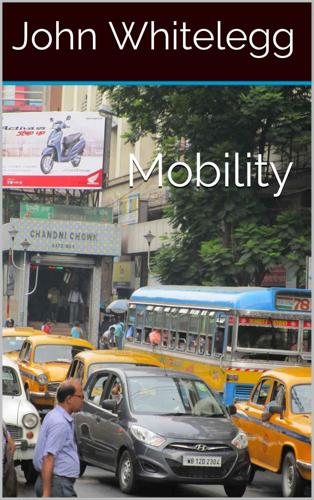
Mobility: A New Urban Design and Transport Planning Philosophy for a Sustainable Future
by
John Whitelegg
Published 1 Sep 2015
All these alternatives to the car are much more efficient in terms of space use and it is desirable to encourage the more efficient space users and at the same time discourage the less efficient. This can be done by introducing a congestion charge. London introduced congestion charging in February 2003. It was introduced against a background of considerable controversy and media opposition by a strong mayor (Ken Livingstone) supported by an election victory in the mayoral race where congestion charging was a declared aim. It is now regarded as a great success and is currently being implemented in Stockholm. The recently published three-year review of the congestion charge provides evidence of the main results. Congestion levels are down by 30% when the 2004/5 situation is compared with 2002.
…
Congestion is a problem that can be managed and the model for effective intervention is London. The recommendation That Beijing and Delhi adopt a London-style congesting charging regime as soon as possible and that this be then rolled out to the largest 5 cities in each country. The rationale Congestion is largely the result of an increase in demand for an underpriced resource. In this case the resource is road space. It is also the result of public policy that produces large allocations of public finance for road space, e.g. Beijing’s 5 ring roads. A congestion charge or road pricing regime acts as a price signal to encourage a different pattern of use of road space.
…
Higher levels of mobility do confer benefits but it can never be acceptable to promote the interest of the mobile above all other interests regardless of the consequences. A second case study illustrates the same point. Congestion in London is a major headache for businesses, motorists and the Mayor of London who quite understandably wants to be associated with alleviating such a serious problem. The London congestion charge has made a difference and reduced vehicle numbers and congestion but congestion is creeping up again and giving the Mayor severe reputational problems. His response has been to reduce crossing times for pedestrians at over 500 traffic light controlled pedestrian crossings: “Green Man time has been reduced at 568 crossings across London since 2010.
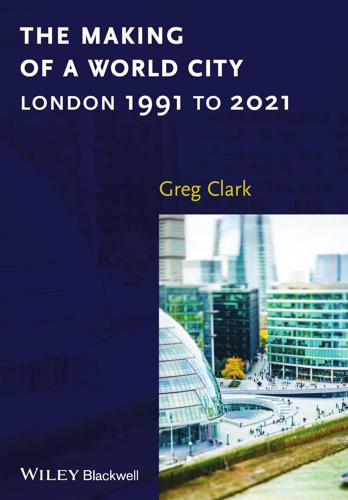
The Making of a World City: London 1991 to 2021
by
Greg Clark
Published 31 Dec 2014
Swedish firm Ericsson has recently found that London is the third most ICT mature city of 25 world cities, and the third most successful at commercialising this ICT infrastructure, behind only New York and Stockholm (Ericsson, 2012). The city’s electronic Oyster card system and the congestion charge zone are widely praised in international studies for being positive examples of transport-led innovation. Beyond Europe, the congestion charge in particular continues to be viewed as an inspiring example of a major city trying to enforce a behaviour-changing mechanism (Clark and Moonen, 2010). As detailed in Chapter 9, London now offers strong air and rail connections to clients and markets throughout the UK, Europe and the rest of the world.
…
Urban Land Institute, PricewaterhouseCoopers (2013). Emerging Trends in Real Estate® Europe 2013. Washington, D.C.: Urban Land Institute. US News and World Report (1994). Easing gridlock, European style. Sep 12. Vol. 117. p. 82–83. Valentine J (2013). Congestion charge after ten years: it’s time to be bolder. City A.M. Feb 18. Available at www.cityam.com/forum/congestion-charge-after-ten-years-its-time-be-bolder. Accessed 2013 Feb 24. Wall R (2009). Netscape: Cities and Global Corporate Networks. PhD submitted to the Erasmus Research Institute of Management. Available at http:// repub.eur.nl/res/pub/16013/EPS2009169ORG9058922076Wall.pdf.
…
Under the GLA Group, London’s business credentials and economic development agendas have been vigorously promoted. Less than 25 years ago London: World City regretted London’s inability to “act as ambassador in the global urban community” (LPAC, 1991: 192). Today, the London Mayor provides a globally recognised focus for London, with powerful tools to effect internationally acclaimed changes, from the Congestion Charge Zone, Tech City and South Bank revival, to the regeneration of East London and creation of the Olympic Park. But just as London has secured a degree of metropolitan authority and autonomy, other governance challenges persist that were unspecified in London: World City. The report did not identify the absence or need for a joined-up strategic approach for the growing functional economic region of the Greater South East.
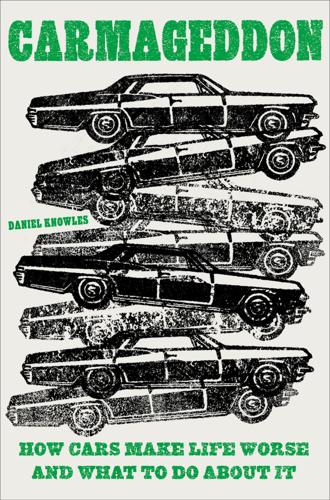
Carmageddon: How Cars Make Life Worse and What to Do About It
by
Daniel Knowles
Published 27 Mar 2023
And making space for the car means the entire design of the city is sinking it. “I think if Harvey hit Houston today, it would be worse,” says Brody. If you live somewhere like central London or Manhattan, what is happening in Houston may feel, well, thousands of miles away. In those cities car lanes are being taken away from roads to build cycle lanes, and congestion charges are spreading. It is easy to find stories about new urban advancements. The socialist mayor of Paris, Anne Hidalgo, has promised to wage war on the car, scrapping street parking to make space for bike lanes. Amsterdam has been pedestrianizing main roads since the 1970s. But in fact, such stories are interesting because they are rare.
…
In Britain, on average, the richest 20 percent of people drive 7,500 miles per year each, whereas the poorest 20 percent drive only about 2,800. Richer people also tend to have more political power. And they vote and lobby for policies that help cars. The power of rich drivers is why, when Boris Johnson became mayor of London in 2008, the first thing he did was scrap the extension of the congestion charge to west London. It is also why in Westminster, the center of London, where space is at a premium, resident car owners can still get a car parking permit that entitles them to a patch of land to leave their vehicle on for the grand sum of £155. To rent 180 square feet of office space in the West End costs around £18,000 a year.
…
From 2009 to the start of 2020, just before the pandemic knocked much of what life was left out of public transport, the number of bus journeys taken annually in Britain declined by 17 percent. Since 1982, the figure is down 12 percent. The discrepancy is slightly caused by the fact that in London and London alone, the buses boomed during the early part of the 2000s, probably due to the creation of the congestion charge. That, together with rising gasoline prices, helped briefly send the cost of driving back up, and in turn reduced some of the congestion that made using the buses so painful. Since around 2012, however, even that progress has been undone, and the number of journeys by bus in London has been falling as fast as in the rest of the country.
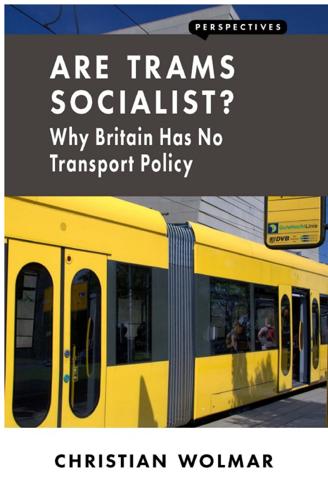
Are Trams Socialist?: Why Britain Has No Transport Policy
by
Christian Wolmar
Published 19 May 2016
The technology that has allowed the creation of Uber has therefore led to a sharp increase in traffic in central London as Uber drivers, who are exempt from the congestion charge, hang about, like prostitutes in Amsterdam doorways, waiting for business and cluttering up the streets, reversing a trend that has seen traffic in central London steadily decline or remain static in most of the years since the introduction of the congestion charge in 2003. So while Uber may have brought down fares somewhat, it has also caused major disruption. And if the taxi trade were to be wiped out by the newcomer, would those fares remain low?
…
Yet the most obvious use of this technology would be for road pricing. Roads are a scarce resource, which, as mentioned previously, are free at the point of use: a practice that makes any self-respecting economist tear their hair out. There are exceptions, of course, such as the London and Stockholm congestion charge zones, motorways in countries like Italy and France, various bridges and tunnels, and even the odd turnpike in the US, but they represent a tiny fraction of the world’s road network. However, for the most part, roads suffer from the tragedy of the commons. Rationing is by congestion rather than price.
…
It already had a fantastic network of transport infrastructure, but thanks to devolution and being given control over its finances (plus the added advantage of being able to bully national politicians by arguing that London is a great growth generator and that transport is vital to that growth), it has, since the mayoralty was created in 2000, created a new network of railways (London Overground), massively improved bus services, imposed a congestion charge to help finance improvements, established a large network of hire bikes, created a series of ‘cycle superhighways’, obtained a promise to be given control of much of the suburban rail network, and has two massive rail investment schemes due to be completed before the end of the decade (Thameslink and Crossrail).

Streetfight: Handbook for an Urban Revolution
by
Janette Sadik-Khan
Published 8 Mar 2016
pageID=mayor_press_release&catID=1194&doc_name=http%3A%2F%2Fwww.nyc.gov%2Fhtml%2Fom%2Fhtml%2F2007a%2Fpr120-07.html&cc=unused1978&rc=1194&ndi=1. estimated 30 percent: Transport for London, Central London Congestion Charging: Impacts Monitoring, Fourth Annual Report, June 2006, 2, accessed August 6, 2015, https://tfl.gov.uk/cdn/static/cms/documents/fourthannualreportfinal.pdf. decreased greenhouse gases: C40, “London’s Congestion Charge Cuts CO2 Emissions by 16%,” November 3, 2011, accessed August 6, 2015, www.c40.org/case_studies/londons-congestion-charge-cuts-co2-emissions-by-16. in increasing numbers: Todd Litman, Victoria Policy Institute, London Congestion Pricing: Implications for Other Cities, November 24, 2011, 5, accessed August 12, 2015, www.vtpi.org/london.pdf.
…
“Cities without plans tend to be politically disenfranchised with fragmented governments,” says Transport for London’s commissioner, Sir Peter Hendy, knighted in part for his success managing the city’s transportation plan during the 2012 Summer Olympics. “As a result, they don’t have any long-term purpose, don’t have any long-term plan, and haven’t done much. Whereas [in London] we have this massive population and economic growth, and it’s fueled by all sorts of policies being executed alongside congestion charging—cycling, renewal of the subway—which then make the plan work. I think that is an incredible lesson here and for the rest of the world.” One of the first urban planning frameworks in the United States was established in Oregon more than forty years ago, and it has served as a great model and impressive success story.
…
To reduce congestion and vehicle emissions, London officials in 2003 introduced a fee for drivers coming into the city center on weekdays. By 2006 the plan reduced congestion within the zone by an estimated 30 percent and decreased greenhouse gases by 16 percent. Meanwhile, Londoners walked and took buses in increasing numbers. Stockholm, Sweden, introduced a pilot congestion charge program, one that it made permanent in 2006, within months of PlaNYC’s launch. Again, traffic decreased. From my first day in office I was thrust into this, the most controversial issue in the city. Joined frequently by Bruce Schaller and Rit Aggarwala, I became one of the public faces of the battle at public hearings and testimony in front of the Metropolitan Transportation Authority, the city council, and other public meetings required before a policy can take effect.
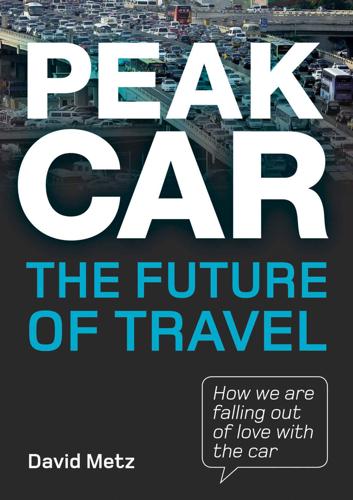
Peak Car: The Future of Travel
by
David Metz
Published 21 Jan 2014
In fact, bus and cycle lanes and pedestrian areas have reduced space for cars; parking controls in both in the inner suburbs and central area constrain car use since you can’t drive unless you’re sure of somewhere to park at the end—which makes supermarkets with parking attractive for the weekly shop; and in central London a pioneering congestion charging zone levies a fixed fee for entry during working hours. So despite increasing numbers of people and rising incomes, the net result is that number of car trips in London has held steady at about ten million a day over the past twenty years. And because the population has increased, this means that the proportion or share of all trips that are by car has declined from 50 per cent in the early 1990s to 38 per cent in 2011.
…
Accordingly, it is generally accepted that to ‘lock in’ the traffic reduction arising from smarter choices initiatives, it is necessary to put in place some ‘hard’ measures, the effect of which cannot be avoided, such as reduction in road space for cars through more pavement for pedestrians or more lanes for buses and bicycles. Other possibilities are adjusting traffic signals to constrain traffic, and congestion charging, as in central London. Of course, if you reduce road space for cars you don’t get the benefit of congestion reduction, although you do achieve reduced carbon emissions. Whatever measures adopted to lock in the traffic reduction, the question that remains is why bother with the ‘soft’ smarter choice measures, given it is the ‘hard’ constraints that do the job?
…
The Newbury Bypass, built in 1995‑98 after vigorous resistance by protestors, was probably the last new major road to be constructed across greenfield land. So the philosophy then changed to ‘demand management’. We could not build our way out of congestion, it was generally agreed, so we would need to manage demand for road travel (more on this in Chapter 6). The main idea for achieving this is ‘road pricing’, also known as ‘congestion charging’ and implemented in central London. By charging for use of road space, particularly when congested with traffic, some people decide not to travel, or to travel at others times, leaving more room for those who travel needs are more pressing. Air travel already uses something like demand management to set fares—known as ‘yield management’, the now familiar flexible pricing introduced by the budget airlines and adopted generally for short‑haul flights.

Cities Are Good for You: The Genius of the Metropolis
by
Leo Hollis
Published 31 Mar 2013
This will certainly clear some of the congestion, yet it is the cost of driving itself that will dissuade people from bringing their cars into the city in the first place. Congestion charging is also a way of hitting drivers where it most hurts. The first such urban scheme was in Singapore in 1975 and was one of the first policies used to develop the city state as the business capital of the Far East. The effects were dramatic. Before the scheme, in June 1975, 32,000 vehicles were registered as entering the city each day, a figure which dropped to 7,700 as soon as the congestion charge was imposed. Similar schemes have been introduced into other cities including Rome, Stockholm, Milan and, in 2003, London.
…
In 2011 it was estimated that £2–4 billion in revenue was being lost every year because of traffic. In addition, air pollution was getting worse. At least 4,000 deaths a year are said to be attributable, at least in part, to the city’s poor air quality. Congestion charging cannot work by itself, for while cost might dissuade some drivers from getting into their cars, the city cannot function unless people can travel freely, get to work or home at every time of the day. As a strategy for getting cars off the road, the congestion charge affects the poor more than the rich, and becomes an issue about the right to the city. As a green policy, for improving air quality and pollution levels, the jury is still out.
…
In addition, the transfer of the traditional yellow cabs to green fuel is moving apace, with 30 per cent of the total fleet running on biofuels. A new fleet of 18,000 apple-green cabs – Boro Taxis – will be able to pick up passengers outside Manhattan. There have also been attempts to combat congestion. Mayor Bloomberg first announced in 2007 that he would promote congestion charging and the news was welcomed by many groups, businesses and residents on the island. Reports were written, feasability tests made, proposals put forward for an $8 levy to be raised on any private vehicle, and a map was drawn up introducing a cordon across South Manhattan between 6 am and 6 pm on weekdays.
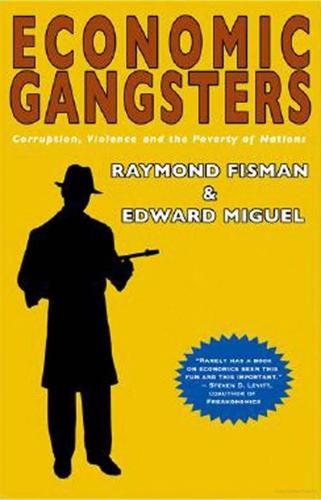
Economic Gangsters: Corruption, Violence, and the Poverty of Nations
by
Raymond Fisman
and
Edward Miguel
Published 14 Apr 2008
But here, one recent example is not so reassuring. Since 2003, London has levied a modest “congestion charge” on vehicles driving into the central business district. The idea is to pare traffic and boost use of public transportation. Under the Geneva Conventions governing diplomatic immunity that also gave us our parking tickets data, diplomats are not obliged to pay this charge, but most diplomats in London do so, nonetheless. One major exception is the U.S. diplomatic corps, which has the dubious honor of accumulating the greatest number of outstanding fines for nonpayment of the congestion charge—a cumulative total far exceeding $1 million since 2003.
…
One major exception is the U.S. diplomatic corps, which has the dubious honor of accumulating the greatest number of outstanding fines for nonpayment of the congestion charge—a cumulative total far exceeding $1 million since 2003. And which countries are the United States’s peers in the game of dodging the congestion charge? Nigeria, Angola, and Sudan—all high-corruption countries that fall in the top fifteen in New York City parking tickets. U.S. diplomats do even worse than the Kuwaitis in London. Perhaps Canada is not the right comparison country after all . . . Sticking It to Uncle Sam at the Parking Meter The fact that diplomats from so many countries—and particularly those with low-corruption governments—garner so few parking tickets in New York flies in the face of standard economic assumptions. Clearly, emotions, norms, and psychology do govern a lot of what we do.8 We were already venturing into the domain of psychology when we talked before about social norms and the culture of corruption.
…
See also under Darfur Suharto, Bambang, 23 Suharto, Mandala Putra (Tommy), 22–24; Bimantara Citra and, 33–36; Lamborghini and, 40–41 Suharto, President, 22, 33–36, 40 Suharto, Tutut, 23 Tanzania, 139–46 tariffs: China and, 60–64, 221n4, 221n6; dispersion of, 72–73; smuggling and, 58–64, 220n3; United States and, 73–74 Tehelka, 21 Tilford, Earl, 169 Transparency International, 18, 66, 66b, 81, 216n11 Tuareg, 126–27 Udry, Chris, 126 Uganda, 115–16, 142, 175, 208 United Kingdom, political connections in, value of, 48–49 239 I N DEX United States: attitudes towards, 96–100; Canada and, 94–95; Civil War and, 173–74, 230n12; Defense Security Cooperation Agency, 164–65; global warming and, 127–29; London congestion charge and, 96; political connections in, value of, 49–52, 219n15, 219n17; smuggling and, 73–75; Vietnam bombing and, 159–61, 164–70 Vietnam, 159–74; literacy and, 171; postwar recovery and, 167–73, 229n7; U.S. bombing of, 159–61, 164–70, 228n3. See also Quang Tri (Vietnam) West End Corporation (WEC), 21, 26–27 White Man’s Burden (Easterly), 13–14 witch killing, 139–46; economic factors and, 141–46; elderly women and, 139; pensions and, 144–45; South Africa and, 144, 227n10; traditional healers and, 145–46; young children and, 142–43 Wizard of the Crow (Ngugi), 1 Wolfowitz, Paul, 102, 157, 197 World Bank, 197; Chad and, 156–58; corruption index of, 84, 87–89 Yang, Dean, 199–200 Wei, Shang-Jin, 61–62 Weinstein, David, 162 Zoellick, Robert, 197 240

Lonely Planet London City Guide
by
Tom Masters
,
Steve Fallon
and
Vesna Maric
Published 31 Jan 2010
When leaving tube stations, you must also touch the card on a reader, so the system knows your journey was only, say, a zone 1 and 2 journey. Regular commuters can also store weekly or monthly Travelcards on their Oyster cards. * * * CONGESTION CHARGE London was the world’s first major city to introduce a congestion charge to reduce the flow of traffic into its centre from Monday to Friday. While the traffic entering the ‘congestion zone’ has fallen as a result, driving in London can still be very slow work. The original congestion charge zone (Euston Rd, Pentonville Rd, Tower Bridge, Elephant & Castle, Vauxhall Bridge Rd, Park Lane and Marylebone Rd) has been extended to encompass Bayswater, Notting Hill, High St Kensington, North and South Kensington, Knightsbridge, Chelsea, Belgravia and Pimlico.
…
Londoners were incensed at Blair’s attempts to parachute his close ally Frank Dobson into the position, and when Livingstone stood as an independent candidate he stormed the contest. However, realising that this was a man too significant to have outside the tent, Blair’s savvy and pragmatic Labour machine quickly brought Livingstone into the party fold. For London, this meant great change. Livingstone introduced a very successful congestion charge and began tackling the mammoth task of bringing London’s chronically backward public transport network into the 21st century. London’s resurgence as a great world city seemed to be going from strength to strength, culminating with the announcement on 6 July 2005 that the International Olympic Committee had awarded London the 2012 games, making it the first triple Olympic city in history.
…
Employing his ‘zone 5 strategy’ (campaigning in suburban London and largely ignoring the inner city where Livingstone’s traditional support lay), amassing a £1.5 million campaign fund and exploiting fears about Livingstone’s rumoured cronyism, Johnson shocked everyone by sailing past the incumbent to become the first Conservative mayor of London. While many left-wing Londoners were worried about Johnson as mayor, the disastrous scenarios they predicted have not come true. While disagreeing with Livingstone on many things, Johnson has actually continued to support several of his predecessor’s policies, including the congestion charge and the expansion of bicycle lanes, albeit with a cut budget for the latter. Johnson, a keen cyclist himself, has pledged to replace Livingstone’s beloved ‘bendy buses’, though this is proving a more problematic campaign promise to keep for financial reasons. * * * THE BORIS PHENOMENON When Boris Johnson, the Conservative MP then best known for a high-profile extramarital affair and regular appearances on the popular news quiz Have I Got News For You, was elected mayor of London in 2008 the country at large was stunned.
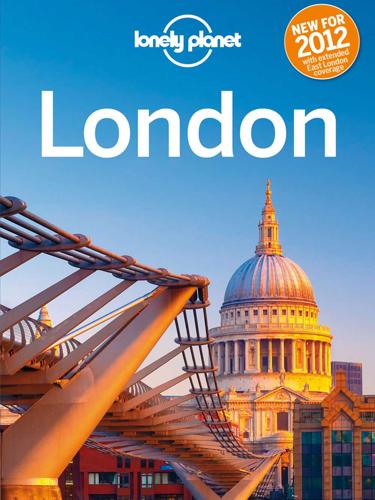
Lonely Planet London
by
Lonely Planet
Published 22 Apr 2012
Driving Road Rules » Get a copy of Highway Code , available at Automobile Association (AA) and Royal Automobile Club (RAC) outlets, as well as some bookshops and tourist offices. » A foreign driving licence is valid in Britain for up to 12 months from the time of your last entry into the country. » If you bring a car from Europe, make sure you’re adequately insured. » All drivers and passengers must wear seatbelts, and motorcyclists must wear a helmet. Congestion Charge London was the world’s first major city to introduce a congestion charge to reduce the flow of traffic into its centre. For full details log on to www.tfl.gov.uk/roadusers/congestioncharging. » The congestion charge zone encompasses Euston Rd, Pentonville Rd, Tower Bridge, Elephant & Castle, Vauxhall Bridge Rd, Marylebone Rd and Park Lane. » As you enter the zone, you will see a large letter ‘C’ in a red circle. » If you enter the zone between 7am and 6pm Monday to Friday (excluding public holidays), you must pay the £10 charge (payable in advance or on the day) or £12 on the first charging day after travel to avoid receiving a fine (£120 or £60 if paid within two weeks). » You can pay online, at newsagents, petrol stations or any shop displaying the ‘C’ sign, by telephone on 0845 900 1234 and even by text message/SMS once you’ve registered online.
…
Taxi Black cabs can be hailed on the street when the yellow light is lit. Boat Good for such destinations as Hampton Court Palace and Kew Gardens, but slow. Walking A lot of central sightseeing is best done on foot. Car hire It’s generally better to use a combination of the above; if you drive, beware the congestion charge (Click here). For much more on Getting Around, Click here. Sleeping Hanging your hat in London can be expensive and as the city is busy at the best of times, you’ll need to book your room well in advance to secure your top choice. Decent, centrally located hostels are easy enough to find and also offer reasonably priced double rooms.
…
Most importantly for London, Labour recognised the legitimate demand the City had for local government, and created the London Assembly and the post of mayor. Former leader of the GLC Ken Livingstone stood as an independent candidate and stormed the contest. For London, this meant big change. Livingstone introduced a successful congestion charge and sought to bring London’s backward public transport network into the 21st century. Championed by Tony Blair as a 'triumph of confidence over cynicism, boldness over blandness, excellence over mediocrity', the Millennium Dome on the Greenwich Peninsula failed to match the hype when it opened in 2000.
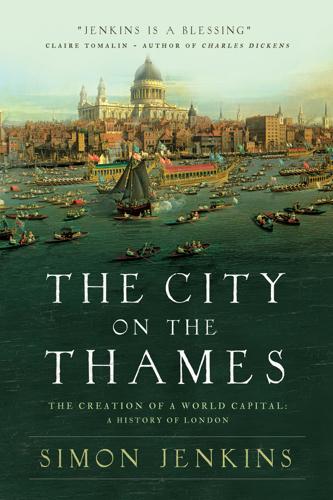
The City on the Thames
by
Simon Jenkins
Published 31 Aug 2020
He introduced a travel pass, the digital Oyster card, and began to replace the double-decker Routemaster buses with an articulated and single-decker ‘bendy’ version. He also initiated an electronic congestion charge for private vehicles entering a central zone. Since barely 12 per cent of vehicles in the central area were private cars, it had little impact on congestion. Livingstone was unable to end a much-deplored legacy of Thatcher’s direct rule, the deregulation of London roadworks. Their ubiquity undid any benefit from the congestion charge and cursed London’s traffic, in noticeable contrast to the more disciplined streets of Paris and New York. The property boom returns to vertical Livingstone had one other policy priority, and its impact was noticeable and permanent.
…
G., High Rise 301 Baltic Exchange 131, 215; bombing (1992) 290 Bangladeshi immigrants 275 Bank of England 162, 175, 214; buildings 146, 221, 290; foundation 92, 93 bank holidays, introduction of 182 Bank station 167, 194, 236, 295 banking and financial services industry 92–3, 98, 115, 175, 239, 275, 293–7, 306, 315 Bankside power station 284, 303 Banqueting House (Whitehall) 59, 66, 85, 86 Baptists 66, 84, 136 Barbican 11, 13, 243; estate 253–5, 269, 280, 283, 307, 310; see also Museum of London Barbon, Nicholas 84–5 Barbon, Praise-God 84 Barkers of Kensington (department store) 181 Barking 206, 270 Barlow Commission 232, 240 Barnard’s Inn Hall (Holborn) 49 Barnes 210, 276 Barnett, Dame Henrietta 209 Barons’ War (13th century) 29, 30, 31 baroque architecture 81, 95, 105, 198; revival 198, 199–200, 221–2 Barratt, Nick, Greater London 242 Barry, Sir Charles 146, 153–4 Bartholomew Fair 37 Bart’s see St Bartholomew’s Hospital Basildon 300 Bath House 147 baths and washhouses, public: 19th century 189; 20th century 201, 213; Roman era 11, 12, 13–14, 338 Battersea 8, 17, 136, 165, 272; Arding & Hobbs (department store) 181; power station 284, 327–8 Battersea Fields/Park 183 Bauhaus 232 Baynard’s Castle 26–7 Bayswater 141, 165, 181, 194, 250; Leinster Terrace 141; Porchester Terrace 141; see also Lancaster Gate Bayswater Road 249 Bazalgette, Sir Joseph 164, 168, 176, 177 BBC 299, 329, 334; Broadcasting House 222; Bush House 221 Beatles (band) 261 Beck, Harry 229 Becontree housing estate 223, 228, 252, 269 Bede the Venerable, St 15 Bedford, John Russell, 1st Earl of 45 Bedford, Francis Russell, 4th Earl of 61–2, 70, 83 Bedford, John Russell, 6th Duke of 139 Bedford, Herbrand Russell, 11th Duke of 220 Bedford estate 100, 101, 139, 178, 227, 250, 282 Bedford Park 179 Bedford Square 103, 123 beer see brewing and beer Beijing (Peking) 173, 174 Belgravia 72, 100–101, 139–41, 156; Belgrave Square 73, 230; Chester Square 140, 153; churches 137, 153; Eaton Square 137, 153; Wilton Crescent 140; Wilton Place 153 Belsize Park 142 Bentham, Jeremy 145 Bentinck, Hans Willem (later 1st Earl of Portland) 89, 103 Berkeley, George, 1st Earl of 84, 100, 103 Berkeley, Randal, 8th Earl of 220 Berkeley Square 73, 103–4, 123, 220–21, 259, 334 Berkhamsted 24 Berlin 3, 193, 240, 241, 313 Bermondsey 17, 95, 137, 185, 206, 216, 225, 307, 339; abbey 28, 42, 46; see also Shard Bermuda 94 Berners estate 102 Besant, Annie 177 Besant, Sir Walter 2–3, 207–8, 208 Bethnal Green 137, 151, 185, 219, 305; council housing estates 202, 223, 265–6 Betjeman, Sir John 81, 231–2 Bevan, Aneurin 240 Beveridge, William, 1st Baron, report on welfare reform (1942) 240 Bevis Marks (street) 67 Bexley 230 bicycles see cycling Biddle, Martin 15 Big Bang (financial markets deregulation) 293–4, 295–6 Big Ben (bell/clock tower) 154, 179 Bill, Peter 310 Bill Haley and the Comets (band) 248 Bill of Rights (1689) 91 Billingsgate 14, 39, 81; market 163, 284 Birch, John 78 birching (corporal punishment), outlawing 260 Birdcage Walk 197 Birmingham 148, 149, 161, 188, 190, 270, 278, 318; railways 156, 157, 165, 168; town hall 188 Birt, William 209 bishopric of London 17–18 Bishopsgate 11, 27, 49, 310; Pinnacle (22 Bishopsgate) 310, 312 Bismarck, Otto von 176 Black Death (14th-century plague) 33–4, 35, 40, 66 Black Monday (stock market crash, 1987) 296 black population 118, 261, 271, 275, 299 Blackfriars 11, 177; Apothecaries Hall 337; Black Friar pub 27; monastery 27; station 165, 166, 167; theatres 52, 57 Blackfriars Bridge 114, 120 Blackheath 39, 68, 183, 210 Blackwall Docks 131 Blackwall Tunnel 280 Blair, Tony 302–6, 308, 314, 316 Blemond, William de 72 Blériot, Louis 200 Blitz (1940–41) 3, 77, 227, 234–8, 239, 245, 262 Bloomberg Centre (office building) 10, 14 Bloomsbury 72, 100, 101, 123, 139, 172, 250, 284; Bedford Square 103, 123; Bloomsbury Square 72, 100, 139; Brunswick Centre 268; Brunswick Square 125; Friends Meeting House 230; Gordon Square 139; Gower Street 178; Mecklenburgh Square 125; Russell Square 139, 179; St George’s Church 111; Tavistock Square 139; Torrington Square 284; University of London 227, 234, 250, 284; Woburn Square 284; see also British Museum Blore, Edward 146 Blow Up (film) 261 blue plaques scheme 265 Blue Stockings Society 103, 124 Boateng, Paul, Baron 299 Boccaccio, Giovanni 36 Boer War 195 Boleyn, Anne, Queen Consort 44, 46–7 bombing: Great War 216–17; Second World War 3, 77, 227, 234–8, 239, 245, 262; terrorism 290–91, 304–5 Bon, Christoph see Chamberlin, Powell and Bon (architectural practice) Bond, Sir Thomas 84 Bond Street 126, 199, 261, 339 Boodle’s (club) 137 Booth, Charles 184, 187, 208, 334 Boots (chemist) 277 Borough High Street 51, 311 Borough Market 257, 332 boroughs, establishment of 192, 201, 263, 264 Boston (Lincolnshire) 32 Boston (Massachusetts) 118 Boswell, James 107, 126–7 Bosworth Field, Battle of (1485) 39, 40 Boudicca (Celtic queen) 2, 10 Bovis (construction company) 269 Bow 171, 191, 251, 307; Abbey Mills pumping station 164; Bryant & May match factory 189 Bow Street, court 110 Bow Street Runners 112, 148 Bowen, Elizabeth 236 Boyle, Robert 70 Bracknell 251 Bradley, Mary Anne 132 Bradley, Simon 80, 179 Bradwell-on-Sea, St Cedd’s Monastery 18 Bramante, Donato 40 Brasilia 174 Breda, Declaration of (1660) 67 Brentford 125, 206 Brewer Street 338 brewing and beer 42, 96, 112, 206 Brexit (British exit from European Union) 13, 330–31 Brick Lane 261 Bridewell Palace 46, 55 bridges see Albert Bridge; Blackfriars Bridge; Hammersmith Bridge; London Bridge; Putney Bridge; Southwark Bridge; Tower Bridge; Vauxhall Bridge; Waterloo Bridge; Westminster Bridge Bridgewater House 147 Brighton 217; Grand Hotel bombing (1984) 290 Brighton Rock (film) 248 Bristol 40, 57, 131, 278, 318 Britain, Battle of (1940) 234 Britannia (Roman province) 10, 12–13 British Library 145, 250 British Museum 101, 104, 145, 172, 241, 250, 284 British Rail 283, 329 Brixham 89 Brixton 191, 208, 275; Loughborough estate 253; prison 219 Broadgate development 296 Broadwick Street 163 Bromley 230 Brompton Road 256 Bronze Age 8 Brown, George (later Baron George-Brown) 263 Brown, Gordon 314, 315 Brown, Lancelot ‘Capability’ 133 Brown’s Hotel 200 Brummell, Beau 138 Brunel, Isambard Kingdom 165, 175, 194 Brunelleschi, Filippo 40 Brunswick Centre 268 Brunswick Square 125 Brussels 26, 275, 296, 320 Brutus (legendary founder of London) 8 Brydges Place 338 Brydon, John 198, 199, 283 Brythonic people 16–17 Buchanan, Sir Colin, Traffic in Towns report 278–9, 280, 316 Bucharest 174, 326 Buckingham, George Villiers, 2nd Duke of 84–5 Buckingham and Normanby, John Sheffield, 1st Duke of 85 Buckingham House/Palace 84, 85, 97, 139, 144, 145, 146, 166, 196–7, 304 Buckingham Palace Road 199 Bucklersbury House (office building) 14 Buenos Aires 174 Building Act (1774) 121–2, 123, 135, 159, 188, 211 Bulstrode Park 103 Burbage, James 52 Burbage, Richard 52 Burdett-Coutts, Angela, 1st Baroness 187 Burghley, William Cecil, 1st Baron 47, 48 Burke, Edmund 118, 129, 130 Burlington, Richard Boyle, 1st Earl of 84, 102 Burlington, Richard Boyle, 3rd Earl of 105–6, 122 Burnham, Daniel 200 Burns, John 191 Burton, Decimus 135, 138 Burton, James 125, 135 Burton, Sir Montague 245 bus lanes 281 buses 144, 167, 177, 204, 205, 309, 317; double-decker 205, 309, 317; fares 288, 309; routes 23, 205 Bush, George W. 304 Bush, Irving T. 221 Bush House 221 Bute, John Stuart, 3rd Earl of 115–16 Byron, George, 6th Baron 127, 183 Byzantium 16, 21 CABE (Commission for Architecture and the Built Environment) 314 cable car (cross-Thames) 316 Cable Street 42, 131 Cadogan, Charles, 2nd Baron 104 Cadogan estate 104, 140 Cadogan Square 179 Cadwgan ap Elystan (Welsh warlord) 104 Calcutta 37 California 48, 320; gold rush 158; see also Los Angeles; San Francisco Callaghan, James, Baron Callaghan of Cardiff 276 Camberwell 125, 143, 171, 201, 210, 272 Cambridge University 266 Camden, Charles Pratt, 1st Baron 124, 125, 143 Camden, Borough of 264, 270, 330; council housing 268, 272 Camden Lock 330 Camden Town 143, 157, 160, 230, 257 Camelford House 220 Cameron, David 315, 319, 330 Campaign for Nuclear Disarmament (CND) 262, 291 Campbell, Colen 97, 103, 105 Canaletto 99, 206 Canary Wharf 293–5, 329, 338 cannabis 276–7, 305, 318 Cannes, MIPIM construction industry fair 313 Canning Town 313; Ronan Point 267, 273, 323 Cannon Street 7–8; station 7, 165 Canonbury 143 Canova, Antonio 145 Canterbury 17, 18, 35 Carausius (Roman military commander) 12 Carlton Club 192 Carlton House 132, 133, 134, 144 Carlton House Terrace 144, 283 Carnaby Street 261, 338–9 Caroline of Ansbach, Queen Consort 128 Carpaccio, Vittore, ‘Miracle of the True Cross’ 37–8 cars, motor 205, 211, 228, 239, 242, 278; accident rates 205; see also congestion charge zone; dual-carriage way roads; motorways Carshalton 8 Carter Lane 8, 337 Casanova, Giacomo 108, 110, 127, 206 Cassivellaunus (tribal chief) 9 Castlereagh, Robert Stewart, Viscount (later 2nd Marquess of Londonderry) 137 Catford 208, 230, 240 Catherine of Aragon, Queen Consort 42, 43, 44 Catherine of Braganza, Queen Consort 69, 87 Catherine of Medici, Queen Consort of France 48 Catholicism 17, 38, 44, 45, 47, 48, 61, 88–9, 105, 117; see also papacy Cavendish, Lady Margaret (later Duchess of Newcastle) 102 Cavendish Square 73, 102, 103, 123, 134 Caxton, William 41 Cecil Court 60 Cecil Hotel 177, 221 Cedd, Bishop of London 18 Celts 10, 16–17; language 7, 8, 17 censorship 98, 129, 260 Central Line 194, 204 Centre Point (New Oxford Street; skyscraper) 255–6, 257, 258, 265, 325 Chadwick, Sir Edwin 154–5, 156, 162, 163, 164, 166 Chalcot estate 142–3 Chamberlain, Joseph 190, 224 Chamberlain, Neville 223–4, 226, 232, 234, 240 Chamberlin, Powell and Bon (architectural practice) 253, 254 Chambers, Sir William 122, 123 Chandos, James Brydges, 1st Duke of 102, 106 Charing Cross 84; station 146, 165, 166, 203, 216 Charing Cross Road 177, 256 Charlemagne, Holy Roman Emperor 18, 24 Charles I, King 60–64, 65, 68; execution 66 Charles II, King 67–70, 73–4, 77, 78, 79–80, 81, 85–6, 87–8, 132 Charles V, Holy Roman Emperor 44 Charles, Prince of Wales 299 Charlotte Street 207; Schmidt’s restaurant 207 Charterhouse 45, 46 Chartists 161–2, 175, 192 Chatham, William Pitt, 1st Earl of 115, 116, 118 Chaucer, Geoffrey 36–8, 75, 106, 332; The Canterbury Tales 36–7 Cheapside 19, 31, 37, 51, 82, 126; St Mary-le-Bow Church 39, 161 Chelmsford 251, 300 Chelsea 171, 179; Albert Bridge 284; Cheyne Row 104; Cheyne Walk 104; King’s Road 140, 261, 323; Lots Road Power Station 203; Peter Jones (department store) 181; town hall 201; see also Kensington and Chelsea, Royal Borough of Chengdu 326 Chester Square 140; St Michael’s Church 153 Chesterfield, Philip Stanhope, 5th Earl of 126 Chesterfield House 126, 220 Chesterton, G.
…
K., The Napoleon of Notting Hill 192 Cheyne, Charles (later 1st Viscount Newhaven) 104 Cheyne, William (later 2nd Viscount Newhaven) 104 Chigwell 210 Chinatown 207, 338 Chingford 210 Chislehurst 230 Chiswick 106, 125 cholera 154–5, 162, 163, 164, 176 Christ Church, Spitalfields 95 Christianity 12, 16–18, 136–7; see also Catholicism; Protestantism Christie, James 128 Christ’s Hospital 46 church building: 17th century 61, 66, 80–82; 18th century 94–5, 108, 136; 19th century 136–7, 153, 198; 20th century 209; Norman and medieval 22, 27, 30–31; Saxon 12, 17, 21; Tudor 40 Church Building Act (1818) 136–7 church demolitions 198 Church of England 17–18, 28, 38, 44, 65, 108–9, 136–7, 187; Dissenters and Nonconformists 66, 93, 109, 136 Churchill, Caryl, Serious Money 299 Churchill, John (later 1st Duke of Marlborough) 89, 93 Churchill, Sir Winston 219, 235, 237, 238, 239, 240, 247 Churchill Gardens estate 252 CIAM (Congrès International d’Architecture Moderne) 241 Cibber, Colley 108 cinemas 213, 232 Circle Line 168, 193, 194 City airport 295 City Hall 309 City of London: 17th century (early) 58, 60, 63; 17th (late) and early 18th centuries 87–9, 90–91, 92–4, 95; 1970s 275, 283–5; 1980s 293–4, 295–7; 1990s 290; 21st century 290, 309, 310, 312, 337–8; Civil War and Commonwealth 63–7, 68; Edwardian 198; Georgian 110, 113–14, 115–18, 126, 130–31, 136, 146, 148; Great Plague 1, 73–5, 80; Great Fire 1, 75–6, 80, 81; Great War 214–15; interwar 221, 227; Norman and medieval 22–3, 25–32, 34–9; post-fire reconstruction 76–83, 86, 244; post-war 239, 242–3, 251, 252–3, 253–5; Restoration 68, 88; Roman 9–14; Saxon 15–21; topography 7–8; Second World War 235, 236, 239; Tudor 39–42, 45–6, 47–50, 55; under William IV 151, 155; Victorian (early) 155, 162–3, 167; Victorian (late) 175, 177, 179–80, 188, 193–4; Viking attacks 18–19, 20–21 City of London Club 284 City of London School 177 City Road 325; Wesley’s Chapel 109 City and South London Railway (CSLR) 193–4 Civic Amenities Act (1967) 270, 282 Civil War, English 1, 2, 63–6, 68, 88, 90 Clapham 17, 143, 242 Clapham Common 183 Clapham sect 136 Clapton 143, 307 Clare Market 197 Clarence House 147 Clarendon, Edward Hyde, 1st Earl of 84 Claridge’s (hotel) 200 Claudius, Roman Emperor 9 Clean Air Act (1956) 259, 262, 271 Cleary Garden 13 Clegg, Sir Nick 315 Clerkenwell 27, 51, 76, 82, 207, 306, 339; Northampton estate 143, 187, 220 Cleveland House 147 Clifford Street 106 climate change activism 291 Clockwork Orange, A (film) 269 Clore, Sir Charles 245, 258 Cloth Fair (street) 86 clubs, private members’ 137–8, 147, 180, 192, 284 CND (Campaign for Nuclear Disarmament) 262, 291 Cnut, King 20–21 Coade, Eleanor 123 Coade stone 123 Coal Drops Yard 330 Coal Exchange 284 coal fires 87, 259 coal tax 79, 95 Cobbett, William 171 Cockerell, Samuel Pepys 141 ‘cockney’, use of term 161 coffee houses 67, 93, 131, 137, 306 Coin Street Community Builders 288 Colchester 9, 10 Colechurch, Peter 28 Coleridge, Samuel Taylor 153 Coliseum (theatre) 200 College of Arms 86 College of Estate Management 245 College Street 338 Collet, Clara 184 Colman, George, The Clandestine Marriage 126 Commission for Architecture and the Built Environment (CABE) 314 Commission for Local Democracy 308 Commission of Woods and Forests 133 Common Council (City of London) 34–5, 63, 64 Common Market see European Economic Community Commons Preservation Society 183 Commonwealth of England (1649–60) 32, 63, 66–8 Commonwealth Immigrants Acts (1962/1968) 274 Compton, Francis 84 Compton, William, 2nd Baron (later 1st Earl of Northampton) 143, 190 Comyn Ching Triangle 283 congestion charge zone 309–10 Congregationalists 66 Conrad, Joseph, The Heart of Darkness 324 conservation areas 205, 270–71, 282, 325, 326–7 Constable, John 182–3 Constantine the Great, Roman Emperor 12 Constantinople 33, 57 Constantius Chlorus, Roman Emperor 12 contraception 260 Cooper’s Row 13 Copenhagen, Battle of (1807) 130 Coram, Thomas 111, 112, 125 Corbusier, Le (Charles-Édouard Jeanneret) 121, 241, 253 Cork Street 84, 106 Corn Laws, repeal of (1841) 161 Cornelys, Teresa 108 Cornhill 93 Cotton, Jack 245, 256, 257, 258, 281 council housing 190, 202, 222–3, 225, 226, 252–3, 255, 265–9, 272, 285, 298, 321–3, 335; selling of 289, 298–9, 322 Council for the Preservation of Rural England 242 council tax 290, 321 counter-reformation 47, 50 County Hall 199, 289, 309 Covent Garden 8, 15, 61–2, 82, 100, 127, 147, 220, 338; market 16, 61–2, 281; piazza 61–2, 70, 100, 220, 333; proposed redevelopment 281–3, 337; shops 128, 283; theatres and opera house 128, 181, 195, 200, 283 Coward, Sir Noël, ‘London Pride’ 236 Cranach, Lucas 40 Cranbourn Street 60 Crawley 251 Crichlow, Frank 261 Cripplegate 253–4; fort 11 Critical Review 126 Cromwell, Oliver 32, 63, 65, 66–7, 68, 74, 171 Cromwell, Richard 67 Cromwell, Thomas 45 Cromwell Road 171, 263 Cross, Richard Assheton, 1st Viscount, Artisans’ and Labourers’ Dwellings Improvement Act (1875) 188 Crossness pumping station 164 Crossrail 204, 281, 303, 318 Crown Estate 133, 169, 221–2, 339 Croydon 270, 317; aerodrome 239 Cruikshank, George, March of Bricks and Mortar 141 Crusades 29 Crystal Palace 170 Cubitt, Thomas 139–41, 142, 152, 156, 169, 250, 333 Cumberland Terrace 134, 135 Cundy, Joseph 140 Cundy, Thomas 153 ‘Cundy’ churches 153 Curtain Theatre 52 Cutler, Sir Horace 285, 287 cycling 205, 316 Dagenham 223, 228, 324 Daily Courant (newspaper) 93, 108 Dalston 17, 216, 301; Fassett Square 334 Dalyell, Sir Tam 303 Dance, George the Elder 113 Dance, George the Younger 113, 121 dandyism 59, 138 Danelaw territory 19 Danes 14, 18–19, 20–21, 24, 26 Darling (film) 261 Dartford 324 Davies, Mary 100–101 de Montfort, Simon, 6th Earl of Leicester 31 De Montfort University 51 death duties 220 death penalty, abolition 260 Debenham & Freebody (department store) 180 decks and decking (architectural design features) 254, 268, 278–9, 280, 281 Defoe, Daniel 74, 96, 98 Dekker, Thomas 53 Delaney, Shelagh 262 demonstrations, political 162, 260–61, 262, 291, 304 department stores 180–81, 200, 222 depression (1929–33) 227, 228 Deptford 95, 109, 175; Pepys estate 253, 322; station 156; town hall 201 Deutsche Bank 296 Devereux Street 84 Devonshire, William Cavendish, 6th Duke of 170 Devonshire, Victor Cavendish, 9th Duke of 220 Devonshire House 147, 220 Diana (goddess) 11 Diana, Princess of Wales 299; death 303 Dickens, Charles 160–61, 164, 180, 181, 184–5, 186, 187, 259; Bleak House 160; A Christmas Carol 160; Dombey and Son 157; The Old Curiosity Shop 197; Oliver Twist 185; Our Mutual Friend 160; The Pickwick Papers 161, 180, 182 Dickins & Jones (department store) 180 Diderot, Denis 106, 107 Dilke, Sir Charles 191 Diocletian’s Palace 122 Dior, Christian 239 Disraeli, Benjamin (later 1st Earl of Beaconsfield) 122, 164, 175 Dissenters and Nonconformists 66, 93, 109, 136 dissolution of the monasteries 45–6, 47, 48–9, 53, 56 District Line 168, 194, 203 Dobson, Frank 308 Docklands Light Railway 295 docks and docklands 9, 32, 42, 131, 175, 189, 206, 235, 275, 291; redevelopment 291–5, 313–14, 323–4 Domesday Book 25 Dominicans 30 Dorchester House 220 Dorking 251 Dorling, Danny 320 Dorset, Thomas Sackville, 1st Earl of 45 Dostoevsky, Fyodor 184 Dover 165 Dowgate 58, 338 Downing, Sir George 98 Downing Street 98, 120; No. 10 98–9, 290 Doyle, Sir Arthur Conan 186 D’Oyly Carte Opera Company 200 Drake, Sir Francis 48, 258 drugs (narcotics) 185, 276–7, 305, 318 Drury Lane 128, 181, 200; Theatre Royal 69, 108 Dryden, John 107 dual-carriageway roads 243, 270, 279–80, 281, 282 Duke of York’s Theatre (Lincoln’s Inn Fields) 69–70 Dulwich 17, 171, 210 Dulwich College 143 Dunbar, William 43 Dürer, Albrecht 40, 62 Dutch style (architecture) 89, 178, 179, 198 Dyckhoff, Tom 272 Eagle (comic) 246 Ealing 179, 270 Ealing comedies (films) 246, 248, 261 Earls Court motor show 239 East Cross Route (dual-carriageway road) 280 East Ham 201 East India Company 92 Eastcheap 7, 19 EastEnders (soap opera) 334 Eastern Avenue 228 Eastminster Abbey 42 Eaton Square, St Peter’s Church 137, 153 Ebury, manor of 139–40 Economist Buildings, St James Street 280 ecstasy (drug) 305 Edgar Atheling 24 Edgware 229 Edgware Road 9, 10, 263 Edington, Battle of (878) 19 Edmonds, Richard 257 Edmonton 208 Education Act (1870) 176–7 Edward the Confessor, King 21–2, 30 Edward I, King 31–2, 67 Edward II, King 32 Edward III, King 32, 34, 35, 36, 42 Edward IV, King 39 Edward VI, King 47, 49 Edward VII, King 197; as Prince of Wales 195 Edwards, John 132–3 Egremont House 147 Eia, Manor of 100 Eleanor of Provence, Queen Consort 30 elections, general: (1830) 149; (1831) 149; (1907) 202; (1918) 218; (1945) 238; (1964) 260, 262; (1970) 275; (1974) 276, 277; (1979) 287; (1987) 299; (1997) 302, 307; (2015) 330 elections, GLC 264, 274–5, 280, 282, 285, 287 elections, LCC 191, 202, 203, 218, 227 elections, mayoral 309, 315, 317 electoral reform 117, 119, 149–50, 161–2, 175–6, 191 electrification of railways and Underground 193–4, 203, 228, 230 Elementary Education Act (1870) 176–7 Elephant and Castle 251, 322, 325; pub 3, 208 Elizabeth I, Queen 47–8, 49, 51–2, 55–6, 57, 59, 60, 77, 258 Elizabeth II, Queen 296; Diamond Jubilee (2012) 154 Ellerman, Sir John 220 Eltham 230 Embankment 122, 164, 168, 177, 197, 221, 316, 338; gardens 168 Emma of Normandy, Queen Consort 21 Enfield 317 Enfield Chase 230–31 Enlightenment 106–7 Epping Forest 183, 210, 309 Epsom 230 Erasmus 40 Erconwald, Bishop of London 18 Erith 164 Ermine Street 10 Escoffier, Auguste 200 Escorial Palace 99 Esher, Lionel Brett, 4th Viscount 229, 245, 246, 254, 266 Essex, Robert Devereux, 3rd Earl of 84 Ethelred the Unready, King 20, 21 Eton College 142, 315 European Economic Community/European Union: British admission 275, 276; British exit 13, 330–31 European Monetary System, sterling’s forced withdrawal (1992) 314 Euston Road 104, 167, 256, 279, 316; British Library 250; St Pancras New Church 137; underpass 256; see also New Road Euston Square 101, 125; station 157, 168 Euston station 125, 165, 168, 283 evacuation, wartime 235, 236 Evelyn, John 67, 68, 70, 75–6, 77, 83, 87, 90 Evening Standard (newspaper), planning campaigns 282, 284 Evesham, Battle of (1265) 31 Ewell, Nonsuch Palace/Park 51, 230–31 executions, public 109–10; see also death penalty Eyre estate 142 Fabians 190–91 fairs 31; Bartholomew Fair 37; frost fair 87; ‘Tyburn fairs’ 109–10 Farrell, Sir Terry 283 Farringdon 51, 53, 76, 126, 167, 168 fashion (clothing) 59, 138, 239, 245, 248, 261 Fawkes, Guy 288 Fenston, Felix 245 Ferdinand II, King of Aragon 42 ferries, river 113 Festival of Britain (1951) 246–7 Festival Hall 247 Field of the Cloth of Gold (1520) 44 Fielding, Henry 98, 110–11, 112, 159 Fielding, Sir John 112, 159 Fifty Shilling Tailors (shop chain) 245 film industry 185, 248, 261, 269, 306, 338; Ealing comedies 246, 248, 261; see also cinemas financial crises: (1720) 98, 102, 158; (1847) 158; (1866) 175, 176; (1929) 227; (1973) 276; (1987) 296; (2008) 316, 320 financial services industry see banking and financial services industry Finchley 112, 207 Finchley Road 141 Fings Ain’t Wot They Used T’Be (musical) 248 Finsbury 10, 51, 52, 53, 82; Moorfields 60, 76, 109 fires: 16th century 52; 18th century 128; 19th century 152; 21st century 322; Great Fire (1666) 1, 75–6, 80, 81; Middle Ages 27, 28, 76; Roman era 11; Saxon era 19 Firestone Tyre Factory 228 First World War see Great War Fiske, Bill, Baron 257 Fitz-Ailwyn, Henry 28–9 Fitzrovia 124–5, 206–7, 279; Charlotte Street 207; Fitzroy Square 124, 279 Fitzroy family 124, 142 Fitzstephen, William 41, 333 Fleet river/ditch 8, 11, 16, 23, 26, 42, 113, 143, 162 Fleet Street 8, 11, 27, 107, 127; journalism and printing trade 26, 93, 292; Temple Bar 65, 120 Flemish immigrants 34, 48, 49 Fletcher of Saltoun, Andrew 94 Florence 40 Florida, Richard 306 fog 71, 186, 259 Foley, Thomas, 2nd Baron 124 Foley House 124 Fontainebleau Palace 51 Ford Motor Company 228 Forster, William, Elementary Education Act (1870) 176–7 Fortnum, William 128 Fortnum & Mason (shop) 128 Foster, Norman, Baron Foster of Thames Bank 309, 327; Canary Wharf station 294–5; City Hall 309; Gherkin 290, 310, 312 foundation myth 8 Foundling Hospital and estate 111, 112, 125, 135, 143 Fowler, Sir John 167–8 Fox, Charles James 118, 129 Foxe, John, Book of Martyrs 47 franchise see voting rights Francis I, King of France 44 Francis, John 158 Franciscans 30 Franco-Prussian War (1870) 176 Frankfurt 275, 296 Franks 18, 24 Franz Joseph I, Emperor of Austria 174 Frayn, Michael 246 French immigrants 172, 206, 207; see also Huguenots French Revolution 119, 129–30, 136, 149, 152 Friends Meeting House (Bloomsbury) 230 frost fair 87 Fry, Maxwell 232, 241 Fryth, Richard 84 Fulham 171, 257, 268, 272 Gainsborough, Thomas 117, 128 Galsworthy, John 172, 180 gangs and gangsterism 34, 277, 305, 318 ‘garden bridge’ project (cancelled) 317 Garibaldi, Giuseppe 172 Garrick, David 117, 128 gas supplies 147 Gatwick airport 291 gay community 260, 261, 299 Gay, John, Beggar’s Opera 98 Geddes, Sir Eric 218, 223 Gehry, Frank 327 General Strike (1926) 219, 276 gentrification 73, 271–2, 275, 282–3, 300, 307–8, 335 Geoffrey of Monmouth 8 George I, King 97–8, 108 George II, King 97, 98, 128 George III, King 97, 109, 115–16, 118, 131, 144 George IV, King 144–6, 149; as Prince Regent 131–3, 134, 139, 183 George, M.
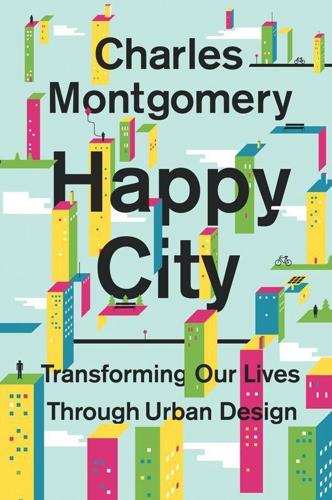
Happy City: Transforming Our Lives Through Urban Design
by
Charles Montgomery
Published 12 Nov 2013
Cities intent on building more variety, freedom, sharing, and sustainability in mobility have no choice but to confront the privilege of private cars. Demand, Supply, and Surprise Some brave cities have tinkered with the economics of demand. In 2003 the London mayor Ken Livingstone adopted the world’s most geographically extensive congestion charge on vehicles entering the heart of the city on weekdays.* The system uses automatic license plate recognition cameras to identify and charge most private vehicles entering the city core, with exemptions for emergency vehicles, taxis, and residents. The fee started at a hefty £5 but has since been bumped to £10.
…
Demand management is catching on around the world. In Stockholm, the charge for driving into the core climbs as you approach rush hour and falls back to nothing during slack hours. This encourages people to delay their drive until road space is not so scarce. The alternative—public transit—is financed in part by those road and congestion charges. After a brief experiment, in 2006 the citizens of Stockholm voted to make the system permanent because it made their lives easier. Meanwhile, the southern Chinese powerhouse of Guangzhou has introduced an auction and lottery system for license plates that is expected to halve the number of new cars on the road.
…
It suggested that the green city, the low-carbon city, and the happy city might be exactly the same destination. Other cities have also realized that boosting quality of life and reducing their environmental footprints are complementary goals and should be part of the same plan. You can experience one without realizing you are accomplishing the other. Take London’s congestion charge, which has been touted as a powerful greenhouse-gas-reduction strategy.† But this was not its purpose. The charge was a response to a host of issues that Londoners felt were much more pressing than future climate change. There was so much traffic that people couldn’t get to work. It was killing Londoners’ quality of life and costing the city in productivity.
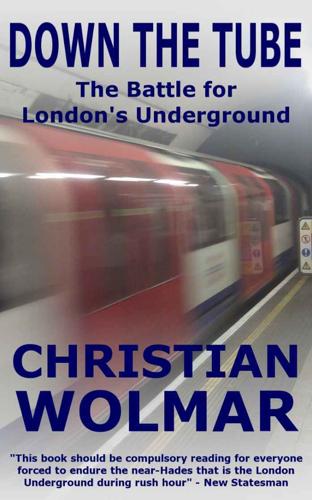
Down the Tube: The Battle for London's Underground
by
Christian Wolmar
Published 1 Jan 2002
Brown wanted the privatisation of National Air Traffic Services to go ahead, Prescott wanted councils to be able to keep revenue from congestion charges so that they could reinvest it in improving public transport. The issue of local authority-owned airports being able to borrow money to invest in expansion without the money counting against the Public Sector Borrowing Requirement also became part of the series of trade-offs between the Deputy Prime Minister and Brown. On those side issues, which actually were potentially very important, Prescott obtained key concessions. Local authorities were allowed to keep the money from congestion charges, though ironically, by 2002 the only area with a well-developed scheme to begin charging was London, run by mayor Ken Livingstone, Brown’s political enemy; airports got the right to borrow money; Brown was able to flog off NATS, though the private component, 46 per cent, went to a consortium of airlines which promptly had to be bailed out with extra government cash after September 11; and London got the PPP and an extra £365m grant to London Transport over the next two years in order to enable it to keep investing until the PPP kicked in, which was supposed to be by 2000, in time for it to be handed to what would then be the newly created Transport for London.
…
We agreed on the first thirteen, and then he said, “We've got two minutes, I have to tell you I am not authorised in any way to vary the PPP, so we should put it to one side and get on with working together.” And that’s what we did. We made good progress on everything else, on capital projects, the congestion charge. The PPP was further up the food chain. I liked his honesty. But he had been told when he took that job, the PPP was fixed as an issue.’* Interestingly, Byers felt so constrained in what he could do on the PPP that he never even bothered to meet Kiley privately during his whole year at the Department of Transport.
…
.’* Byers was, as we have seen, a prisoner of the Treasury who was being disingenuous when he told the select committee that the decision ‘will rest with myself’.* There was a brief flurry of activity during Brown’s absence for a few weeks in January 2002 while he was in mourning for the death of his baby daughter, with John Spellar, the junior transport minister, suggesting to Livingstone that changes might be made to the PPP should he ditch congestion charging, but the mayor would not accept the plan and, in any case, the idea petered out on Brown’s return. Byers was already in deep water with the Treasury which had been infuriated by his behaviour after the decision to stop funding Railtrack and force it into administration. While that move, in October 2001, had been sanctioned by both No. 10 and No. 11 Downing Street, Byers had tried to make himself popular in the parliamentary Labour Party by stressing that Railtrack shareholders would never receive any public money to compensate for the losses arising from the suspension of the shares.
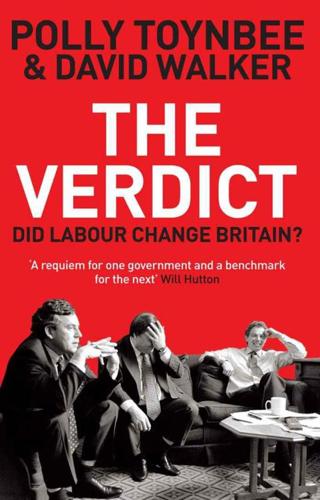
The Verdict: Did Labour Change Britain?
by
Polly Toynbee
and
David Walker
Published 6 Oct 2011
The 2000 Transport Act gave councils the same power to charge for road use that London’s new government had: any revenues produced had to be spent on public transport. But when pro-charging Ken Livingstone declared himself a candidate for London mayor, the official Labour candidate Frank Dobson (following the Number Ten line) did a swerving volte-face and took against congestion charging. Blair emphasized the risks of using the very powers his government had introduced. Once the London congestion charge worked, he changed his mind. By then precious momentum had been lost. Votes on charging schemes came and went in Manchester and Edinburgh where, in a welter of local circumstances, residents rejected opportunities to reconcile urban living with reduced emissions.
…
The cost of bus and coach fares rose 17 per cent above inflation between 1997 and 2010. London showed how successful an overarching public transport authority with power and money could be. Mayor Livingstone expanded the bus network and improved frequencies, spending the proceeds from his new congestion charge and then some. In the capital, Margaret Thatcher’s silly adage about anyone over twenty-six using a bus being a failure was disproved: many more people of all social groups took to the bus. Use rose by a third in the five years from 2000. Labour was on course to meet its target of achieving 12 per cent growth in bus and light rail use in England by 2010, but only because the number of bus journeys was increasing in London (which accounted for 44 per cent of bus use in England).
…
Index 9/11 attacks, 1, 2, 3, 4, 5, 6, 7, 8, 9 A levels, 1 Aberdeen, 1 abortion, 1, 2, 3 Abuhamza, Junaid, 1 AC Milan, 1 Acme Whistles, 1 Action for Children, 1 Adams, Douglas, 1 Adonis, Andrew, 1 Advisory, Conciliation and Arbitration Service, 1 Afghanistan, 1, 2, 3, 4, 5, 6, 7, 8, 9 Helmand province, 1, 2, 3, 4, 5, 6 Africa, 1, 2, 3 after-school clubs, 1, 2, 3 Age of Stupid, 1, 2 Ahern, Bertie, 1 Ahmadinejad, Mahmoud, 1 Ainsworth, Bob, 1 aircraft-carriers, 1 Al Qaeda, 1, 2, 3, 4 Albania, 1 alcohol consumption, 1, 2 and crime, 1, 2, 3 Alexander, Professor Robin, 1 Alzheimer’s disease, 1 Amritsar massacre, 1 Amsterdam summit, 1, 2 Anderson, Lance Corporal George, 1 animal welfare, 1, 2 anti-social behaviour orders (Asbos), 1, 2, 3 apprenticeships, 1, 2 Arafat, Yasser, 1 archaeological artefacts, 1 Arctic Monkeys, 1 Armistice Day, 1 arms trade, 1, 2 Armstrong, Franny, 1 arts budget, 1 Ashmolean Museum, 1 asthma, 1, 2 asylum seekers, 1, 2, 3, 4 Attenborough, Richard, 1 Attlee, Clement, 1 August, Kathy, 1 Austin, Richard, 1 Australia, 1, 2, 3 Austria, 1 autism, 1 aviation, 1 Aylesbury, 1 Baghdad, 1 Baker, Mike, 1 Bakewell, Joan, 1 Bali, 1 Balls, Ed, 1, 2, 3 Bank of England, 1, 2 Barber, Sir Michael, 1 Barker, Kate, 1 Barnardo’s, 1 Barnet Hospital, 1 Barton, Geoff, 1 Basildon and Thurrock Hospital, 1 Basra, 1, 2, 3 Bean, Richard, 1 Beattie, Captain Doug, 1 Beckham, David, 1 Belarus, 1 Belfast, 1, 2, 3 Belgium, 1 Belize, 1 Benn, Hilary, 1, 2 Bennett, Alan, 1 Berlusconi, Silvio, 1 Beveridge, William, 1 Bichard, Sir Michael, 1 Big Brother, 1, 2 Bilbao, 1 Billington, Michael, 1 bin Laden, Osama, 1, 2 Bingham, Lord, 1 Birk, Andy, 1, 2, 3 Birmingham, 1, 2, 3, 4, 5 Aston, 1, 2, 3 Longbridge car plant, 1 and transport policy, 1, 2 birth rate, 1 Black Wednesday, 1 Blackburn, 1, 2 Blackpool, 1 Blair, Cherie, 1 Blair, Tony, 1, 2 and asylum seekers, 1, 2 and child poverty, 1, 2, 3, 4 and climate change, 1, 2 and constitutional reform, 1, 2 and crime, 1, 2, 3 and cultural policies, 1, 2, 3, 4, 5 and economic policies, 1, 2, 3, 4, 5 and education, 1, 2, 3, 4, 5, 6 and Europe, 1 and fairness, 1, 2, 3 foreign policy and Iraq war, 1, 2, 3, 4, 5, 6, 7, 8 and health, 1, 2, 3, 4, 5 and Northern Ireland, 1 and Princess Diana, 1, 2 public apologies, 1 and public sector reform, 1, 2 and religion, 1 and ‘respect’ agenda, 1 style of government, 1 technophobia, 1, 2 and transport, 1, 2 Blears, Hazel, 1, 2 Bloody Sunday inquiry, 1 Bloomberg, Michael, 1 Bloxham, Tom, 1 Blunkett, David, 1, 2 and crime, 1, 2, 3, 4 and education, 1, 2, 3, 4, 5, 6 and migration, 1 BMW, 1 Bobbitt, Philip, 1 Boddingtons’ brewery, 1 Bolton, 1 Boothroyd, Betty, 1 Bosnia, 1 Boston, Lincolnshire, 1, 2, 3, 4 Bowman, Philip, 1 Boyle, Danny, 1 Bradford, 1, 2, 3, 4, 5 Bradford and Bingley, 1 Bradshaw, Ben, 1 Branson, Richard, 1 Brassed Off, 1 Brazil, 1 breastfeeding, 1, 2 Brent, 1 Brighton, 1, 2 Brindle, David, 1 Bristol, 1 Bristol Royal Infirmary, 1 Britain’s Got Talent, 1 British Airways strikes, 1 British Association of Aesthetic Plastic Surgeons, 1 British Energy, 1 British Film Institute, 1 British Medical Association, 1, 2 British Museum, 1 British National Party (BNP), 1, 2, 3 Brixton, 1 broadband services, 1 Brown, Gordon, 1, 2, 3, 4 and climate change, 1, 2, 3 and constitutional reform, 1 and crime, 1, 2, 3 and cultural policies, 1, 2, 3, 4, 5, 6 and defence policy, 1 and economic policies, 1, 2, 3, 4, 5, 6, 7, 8, 9 and education, 1, 2 and Europe, 1 and fairness, 1 and foreign policy, 1, 2, 3, 4, 5, 6, 7 and G20 summit, 1, 2 and health, 1 and pensions, 1, 2 and PFI, 1 and public sector reform, 1 style of government, 1, 2 and tax credits, 1, 2 and transport, 1 Bruges, 1 Brussels, 1, 2, 3, 4, 5 Bryant, Chris, 1 BSE (mad cow disease), 1, 2 Buffini, Damon, 1 Bulgaria, 1 Bulger, Jamie, 1 Buncefield explosion, 1 Burgess, Graham, 1 Burma, 1, 2 Burnham, Andy, 1 buses, 1, 2 Bush, George W., 1, 2, 3, 4 business, 1 company governance, 1 competition policy, 1 see also manufacturing Business Links, 1, 2 Cable, Vince, 1 Cadbury, 1 Caine, Judy, 1 Callaghan, James, 1 Cameron, David, 1, 2, 3, 4 Campaign for Real Ale, 1 Campbell, Alastair, 1, 2 Campbell, Naomi, 1 Canada, 1 cancer research, 1 cannabis, 1, 2 Cannock Chase Hospital, 1 Capel Manor College, 1 Carbon Trust, 1 Cardiff, 1, 2 Millennium Stadium, 1 see also Welsh assembly Care Quality Commission, 1, 2, 3 carers, 1 Carousel children’s centre, 1 Casey, Louise, 1, 2 casinos, 1 Castle, Barbara, 1 cataracts, 1, 2 Cator Park School, 1 CCTV, 1, 2, 3 celebrity culture, 1 Central Office of Information, 1 Ceuta, 1 Charity Commission, 1 Charleroi, 1 Chase Farm Hospital, 1, 2, 3 Cheltenham, 1 Cheney, Dick, 1 Chicago, 1 Chilcot inquiry, 1, 2, 3, 4 Child Maintenance and Enforcement Commission, 1 child poverty, 1, 2, 3, 4, 5, 6, 7, 8, 9, 10, 11 Child Support Agency, 1 child trafficking, 1 Child Trust Funds, 1, 2 childcare, 1, 2, 3, 4, 5, 6 children, 1 in care, 1 and crime, 1, 2 and pre-school education, 1 and reading, 1, 2 and safety, 1 and targets, 1 children’s centres, 1, 2, 3 Chile, 1 China, 1, 2, 3, 4, 5, 6, 7 and foreign policy, 1, 2, 3, 4 Chinese cockle pickers, 1 Christian Voice, 1 Chumbawamba, 1 Church of England, 1 Churchill, Winston, 1 cigarette smoking, 1, 2, 3, 4, 5, 6 see also smoking ban citizenship curriculum, 1 City of London, 1, 2, 3, 4, 5, 6, 7 City of London police, 1 civil partnerships, 1 civil service, 1 Clapham Common, 1 Clapham Park estate, 1, 2 Clarke, Charles, 1 Clarke, Ken, 1, 2 Clarke, Michael, 1 Clarkson, Jeremy, 1, 2 ‘clean technologies’, 1 Cleveland Way, 1 climate change, 1, 2, 3, 4, 5 and transport and energy policies, 1 Climbié, Victoria, 1 Clinton, Bill, 1, 2, 3 Clitheroe, 1 cloning, 1 coal, 1 coalition government, 1, 2, 3, 4, 5 Cockermouth, 1 Cohen, Sir Ronnie, 1 Cole, Vanessa, 1 Collins, Colonel Tim, 1 Comer, Beryl, 1, 2, 3, 4 Common Agricultural Policy, 1, 2 community sentences, 1 Confederation of British Industry (CBI), 1, 2, 3, 4, 5, 6 conflict diamonds, 1 Congo, 1 Connelly, Peter (Baby P), 1 Connexions, 1, 2 Contactpoint database, 1 Cook, Robin, 1, 2 Cool Britannia, 1, 2 Cooper, Robert, 1 Cooper, Yvette, 1 Copenhagen summit, 1, 2, 3, 4, 5, 6 Corby, 1, 2 Corn Laws, repeal of, 1 Cornwall, 1, 2 Coronation Street, 1 coroners, 1 Corus, 1 Countryside Alliance, 1, 2 County Durham, 1 Coventry, 1, 2, 3 Cowley, Philip, 1 Cox, Brian, 1 Crawford, Texas, 1 creative industries, 1, 2 credit card debt, 1 Crewe and Nantwich by-election, 1 Crick, Bernard, 1 cricket, 1 Crime and Disorder Reduction Partnerships, 1 crime, 1 car crime, 1 cyber-crime, 1 and demography, 1, 2 and drugs, 1 gun crime, 1, 2 juvenile crime, 1, 2, 3 knife crime, 1, 2 organized crime, 1, 2, 3 street crime, 1 Criminal Records Bureau, 1 Cruddas, Jon, 1 Cullen, Janet, 1, 2, 3, 4 Cumner-Price, George, 1 cycling, 1, 2, 3 Cyprus, 1, 2 Daily Mail, 1, 2, 3, 4, 5 Daily Telegraph, 1 Darfur, 1 Darling, Alistair, 1, 2, 3 Darwen, 1, 2 Darzi, Lord (Ara), 1 Data Protection Act, 1, 2 Davies, Norman, 1 Davies, Ron, 1 Davis, David, 1 Dearlove, Sir Richard, 1 defence policy, 1, 2, 3, 4, 5 Delhi, 1 dementia, 1 demonstrations, policing of, 1 Demos, 1 Denham, John, 1 Denison, Steve, 1 Denmark, 1, 2 dentistry, 1 depression, 1 Derby, 1 devolution, 1, 2, 3, 4, 5, 6, 7 Dewar, Donald, 1, 2 diabetes, 1 Diana, Princess of Wales, 1, 2, 3 Dilnot, Andrew, 1 disabilities, 1, 2, 3, 4, 5 disarmament, 1 divorce rate, 1 DNA database, 1 Dobson, Frank, 1, 2 doctors consultants, 1 GPs, 1, 2, 3 night and weekend cover, 1 pay, 1, 2, 3 working hours, 1 domestic violence, 1, 2, 3, 4 Doncaster, 1, 2, 3 Dongworth, Averil, 1 Dorling, Professor Danny, 1, 2, 3 Drayson, Paul, 1 drones, 1 drug dealers, 1, 2 drugs, 1, 2, 3 Dublin, 1 Duffy, Bobby, 1 Dundee, 1 Dunn, John, 1 Dunwoody, Gwyneth, 1 EastEnders, 1 Ecclestone, Bernie, 1 ‘eco towns’, 1 ecstasy, 1 Edinburgh, 1, 2, 3 see also Scottish parliament Edlington, 1 education, 1 further education and training, 1, 2, 3, 4 higher education, 1, 2, 3, 4, 5, 6 nursery education, 1 productivity in, 1 pre-school education, 1 and selection, 1, 2 and social class, 1, 2 spending on, 1, 2 and targets, 1, 2, 3 Welsh Assembly and, 1 see also schools education action zones, 1 Education Maintenance Allowance, 1, 2, 3 e-government, 1, 2 Egypt, 1 electoral reform, 1, 2, 3 electricity generation, 1, 2 Elgar, Edward, 1 Elgin marbles, 1 Elizabeth, Queen, the Queen Mother, 1 Elizabeth II, Queen, 1, 2, 3 employee buy-outs, 1 employment, 1 flexible, and migration, 1 part-time, 1, 2 state and ‘parastate’, 1, 2 women and, 1, 2 working hours, 1, 2 energy policies, 1 English for Speakers of Other Languages, 1 English Heritage, 1 Enron, 1 Environment Agency, 1, 2 equalities legislation, 1, 2, 3 Equality and Human Rights Commission, 1, 2, 3 Ericsson, 1 ethnic minorities, 1 euro, 1, 2 Eurofighter, 1 European Court of Human Rights, 1 European Union, 1, 2 European Union Emission Trading Scheme, 1 Eurostar, 1 Exeter, 1 Fairtrade products, 1 Falconer, Charlie, 1 Falklands War, 1 Family Intervention Projects (FIPs), 1 Farlow, Andrew, 1 farmers, 1, 2 fashion, 1 Feinstein, Professor Leon, 1, 2 Financial Services Authority, 1 financial services, 1, 2, 3 Financial Times, 1 Finland, 1 fire and rescue service, 1 fiscal stimulus, 1 floods, 1, 2, 3, 4 Florence, 1 flu, 1, 2 swine flu, 1, 2 Folkestone, 1 food and drink, 1, 2 foot-and-mouth disease, 1, 2 football, 1, 2, 3 Football Association, 1 forced marriages, 1 foreign policy, 1, 2, 3 France, 1, 2, 3, 4 economy and business, 1, 2 and education, 1, 2 and health, 1, 2, 3 Frankfurt am Main, 1 Franklin, Tom, 1 Frears, Stephen, 1 free speech, 1, 2 freedom of information, 1, 2, 3, 4, 5, 6 Freud, Lord, 1 Full Monty, The, 1 Future Jobs Fund, 1 G20 summit, 1, 2, 3 Gainsborough, 1 Galbraith, J.K., 1 Gallagher, Liam, 1 Gallagher, Noel, 1 gambling, 1 gangmasters, 1, 2 gas, 1 Gates, Bill, 1 Gateshead, 1 Gaza, 1 GCHQ, 1 GCSEs, 1, 2, 3, 4 Gehry, Frank, 1 Geldof, Bob, 1 gender reassignment, 1 General Teaching Council, 1 genetically modified crops, 1 Germany, 1, 2, 3, 4, 5, 6, 7 economy and business, 1, 2, 3, 4 and education, 1, 2 and health, 1, 2 Ghana, 1 Ghandi’s curry house, 1 Ghent, 1 Gladstone, William Ewart, 1, 2 Glaister, Professor Stephen, 1 Glasgow, 1, 2, 3, 4 Gleneagles summit, 1, 2, 3, 4, 5 globalization, 1, 2, 3, 4, 5, 6, 7 and crime, 1 and foreign policy, 1, 2, 3 and inequality, 1 and migration, 1, 2 Gloucester, 1 Goldacre, Ben, 1 Good Friday agreement, 1 Goodwin, Sir Fred, 1 Goody, Jade, 1 Gormley, Antony, 1 Gould, Philip, 1 grandparents, and childcare, 1 Gray, Simon, 1 Great Yarmouth, 1 Greater London Authority, 1, 2 Greater London Council, 1 green spaces, 1 Greenberg, Stan, 1 Greengrass, Paul, 1 Greenspan, Alan, 1, 2 Greenwich, 1 Gregg, Paul, 1 Guardian, 1, 2, 3 Guizot, François, 1 Gulf of Mexico oil spill, 1 Gummer, John, 1 Gurkhas, 1 Guthrie of Craigiebank, Lord, 1 Guy’s and St Thomas’s Hospital, 1 habeas corpus, suspension of, 1 Hacienda Club, 1 Hackney, 1 Hale, Baroness Brenda, 1 Hallé Orchestra, 1 Ham, Professor Chris, 1 Hamilton, Lewis, 1 Hammersmith Hospital, 1 Hammond, Richard, 1 Hardie, Keir, 1 Hardy, Thea, 1 Haringey, 1, 2 Harman, Harriet, 1 Harris of Peckham, Lord, 1 Harrison, PC Dawn, 1, 2 Harrow School, 1 Hartlepool, 1, 2 Hastings, 1, 2 Hatfield rail crash, 1 Hatt family, 1, 2, 3, 4 health, 1 and private sector, 1, 2 and social class, 1 spending on, 1, 2 Health Action Zones, 1 Health and Safety Executive, 1 Heathcote, Paul, 1 Heathrow airport, 1, 2, 3, 4 Hellawell, Keith, 1 Hennessy, Professor Peter, 1 Henry, Donna Charmaine, 1, 2, 3 heroin, 1 Hewitt, Patricia, 1, 2 Higgs, Sir Derek, 1 Hills, Professor John, 1, 2, 3 Hirst, Damien, 1 HMRC, 1, 2, 3 Hogg, John, 1, 2, 3 Hoggart, Richard, 1 Holly, Graham, 1 homelessness, 1, 2 Homerton Hospital, 1 homosexuality, 1, 2, 3 ‘honour’ killings, 1 Hoon, Geoff, 1 hospital-acquired infections, 1 hospitals and clinics, 1, 2, 3, 4 A&E units, 1, 2 closures, 1, 2, 3 foundation trusts, 1, 2, 3, 4, 5 and PFI, 1 House of Commons reforms, 1, 2 House of Lords reforms, 1, 2, 3, 4 housing market, 1, 2, 3 housing policies, 1, 2, 3, 4, 5 Howe, Elspeth, 1 Hoxton, 1 Huddersfield, 1 Hudson, Joseph, 1 Hull, 1, 2, 3 Human Rights Act, 1, 2, 3, 4, 5, 6, 7, 8, 9, 10 Humber Bridge, 1 hunting ban, 1 Hussein, Saddam, 1, 2, 3, 4 Hutton, John, 1 Hutton, Will, 1, 2 identity cards, 1, 2 If (Kipling), 1 Imperial War Museum North, 1 income inequalities, 1, 2, 3 gender pay gap, 1, 2 and high earners, 1 and social class, 1 Independent Police Complaints Commission (IPCC), 1 Independent Safeguarding Authority, 1 independent-sector treatment centres (ISTCs), 1 Index of Multiple Deprivation, 1 India, 1, 2, 3, 4, 5, 6 individual learning accounts, 1 inflation, 1 and housing market, 1, 2 International Criminal Court, 1 International Monetary Fund (IMF), 1, 2, 3 internet, 1, 2, 3 and crime, 1 and cyber-bullying, 1 file sharing, 1 gambling, 1 and sex crimes, 1 Iran, 1, 2, 3 Iraq, 1, 2, 3, 4, 5, 6, 7, 8, 9, 10, 11, 12, 13, 14, 15, 16 arms supplies, 1 Chilcot inquiry, 1, 2, 3, 4 and Territorial Army, 1 and WMD, 1 Ireland, 1, 2, 3 Irish famine, 1 Irvine of Lairg, Lord, 1, 2 Ishaq, Khyra, 1 Islamabad, 1 Isle of Man, 1 Isle of Wight, 1, 2 Israel, 1 Italy, 1, 2, 3 and football, 1 Ivory Coast, 1 Japan, 1, 2, 3, 4 Jenkins, Roy, 1, 2 Jerry Springer: The Opera, 1 Jobcentre Plus, 1, 2 John Lewis Partnership, 1, 2 Johnson, Alan, 1, 2, 3, 4 Johnson, Boris, 1, 2 Judge, Lord (Igor), 1 Judge, Professor Ken, 1 Julius, DeAnne, 1 jury trials, 1, 2 Kabul, 1 Kapoor, Anish, 1, 2 Karachi, 1 Karadžic, Radovan, 1 Kashmir, 1 Kaufman, Gerald, 1 Keegan, William, 1 Keep Britain Tidy, 1 Kelvingrove Art Gallery and Museum, 1 Kensit, Patsy, 1 Keynes, John Maynard, 1 Keys, Kenton, 1 Kidderminster Hospital, 1 King, Sir David, 1, 2 King, Mervyn, 1 King Edward VI School, 1 King’s College Hospital, 1 Kingsnorth power station, 1 Kirklees, 1 Knight, Jim, 1 knighthoods, 1 knowledge economy, 1 Kosovo, 1, 2, 3, 4 Kynaston, David, 1 Kyoto summit and protocols, 1, 2, 3 Labour Party membership, 1 Lacey, David, 1 Ladbroke Grove rail crash, 1 Lamb, General Sir Graeme, 1 Lambert, Richard, 1 landmines, 1 Lansley, Andrew, 1 lapdancing, 1 Las Vegas, 1 Lawrence, Stephen, 1 Lawson, Mark, 1 Layard, Professor Richard, 1 Le Grand, Professor Julian, 1 Lea, Ruth, 1 Lea Valley High School, 1, 2, 3, 4, 5, 6 Leahy, Sir Terry, 1, 2 learndirect, 1 Learning and Skills Council, 1 learning difficulties, 1, 2 learning mentors, 1 Leeds, 1, 2, 3, 4 legal reforms, 1 Leigh, Mike, 1 Lenon, Barnaby, 1 Lewes, 1 Lewisham, 1 Liberty, 1 licensing laws, 1, 2 life expectancy, 1, 2, 3, 4, 5 Life on Mars, 1 Lincoln, 1 Lindsell, Tracy, 1, 2 Lindsey oil refinery, 1 Lisbon Treaty, 1 Liverpool, 1, 2, 3, 4, 5, 6 Liverpool FC, 1 living standards, 1, 2 living wage campaign, 1, 2 Livingstone, Ken, 1, 2, 3, 4, 5 Livni, Tzipi, 1 Loaded magazine, 1 local government, 1, 2, 3 and elected mayors, 1 Lockerbie bomber, 1 London, 1, 2, 3, 4, 5, 6 bombings, 1, 2 congestion charge, 1, 2 detention of foreign leaders, 1 G20 protests, 1 Iraq war protests, 1, 2 mayoral election, 1, 2 and transport policy, 1, 2, 3 London Array wind farm, 1 Longannet, 1 Longfield, Anne, 1 Lord-Marchionne, Sacha, 1 Lorenzetti, Ambrogio, 1 lorry protests, 1, 2 Lowry Museum, 1 Lumley, Joanna, 1 Luton, 1, 2, 3, 4 Lyons, Sir Michael, 1 Macfadden, Julia, 1 Machin, Professor Stephen, 1, 2 Maclean, David, 1 Macmillan, Harold, 1 Macmillan, James, 1 McNulty, Tony, 1 Macpherson, Sir Nick, 1 Macpherson, Sir William, 1 McQueen, Alexander, 1 Madrid, 1, 2, 3 Major, John, 1, 2, 3, 4, 5, 6 Malaya, 1 Malloch Brown, Mark, 1 Manchester, 1, 2, 3, 4, 5, 6 club scene, 1, 2 and crime, 1, 2 Gorton, 1, 2, 3, 4, 5, 6 and local government, 1 and transport policy, 1, 2, 3 Manchester Academy, 1 Manchester United FC, 1, 2 Manchester University, 1 Mandelson, Peter, 1, 2 Manpower Services Commission, 1 manufacturing, 1, 2, 3 Margate, 1 ‘market for talent’ myth, 1 marriage rate, 1 Martin, Michael, 1 maternity and paternity leave, 1, 2 Mayfield, Charlie, 1 Medical Research Council, 1 mental health, 1, 2, 3, 4 mephedrone, 1 Metcalf, Professor David, 1 Metropolitan Police, 1, 2, 3 Mexico, 1, 2 MG Rover, 1 Michael, Alun, 1 Middlesbrough College, 1, 2 migration, 1, 2, 3, 4, 5, 6, 7, 8, 9, 10, 11 Milburn, Alan, 1, 2, 3, 4, 5 Miliband, David, 1, 2, 3, 4, 5, 6 Miliband, Ed, 1, 2, 3 Millennium Cohort Study, 1, 2 Millennium Dome, 1, 2, 3 Miloševic, Slobodan, 1 Milton Keynes, 1 minimum wage, 1, 2, 3, 4, 5, 6, 7 Mitchell, Senator George, 1 modern art, 1 Mohamed, Binyam, 1 Monbiot, George, 1 Moray, 1 Morecambe, 1, 2 Morecambe Bay cockle pickers, 1 Morgan, Piers, 1 Morgan, Rhodri, 1 mortgage interest relief, 1 Mosley, Max, 1 motor racing, 1 Mowlam, Mo, 1 Mozambique, 1 MPs’ expenses, 1, 2, 3, 4, 5 MRSA, 1 Mugabe, Robert, 1 Muijen, Matt, 1 Mulgan, Geoff, 1 Mullin, Chris, 1 Murdoch, Rupert, 1, 2, 3 Murphy, Richard, 1 museums and galleries, 1, 2, 3 music licensing, 1 Muslims, 1, 2, 3, 4, 5 mutualism, 1 Myners, Paul, 1 nanotechnology, 1, 2, 3 National Air Traffic Control System, 1 National Care Service, 1 national curriculum, 1 national debt, 1 National Forest, 1 National Health Service (NHS) cancer plan, 1 drugs teams, 1 and employment, 1, 2 internal market, 1 IT system, 1 league tables, 1 managers, 1, 2 NHS direct, 1 primary care, 1 productivity, 1, 2 and public satisfaction, 1 staff numbers and pay, 1 and targets, 1, 2, 3 waiting times, 1, 2, 3, 4, 5, 6, 7, 8 National Heart Forum, 1 National Institute for Health and Clinical Excellence (NICE), 1, 2 National Insurance, 1, 2, 3, 4, 5 National Lottery, 1, 2, 3 National Offender Management Service, 1 National Savings, 1 National Theatre, 1 Natural England, 1, 2 Nazio, Tiziana, 1 Neighbourhood Watch, 1 Netherlands, 1, 2 neurosurgery, 1 New Deal, 1, 2, 3, 4, 5, 6, 7 New Deal for Communities, 1, 2 New Forest, 1 Newcastle upon Tyne, 1, 2 Newham, 1, 2 newspapers, 1, 2, 3, 4, 5 Nigeria, 1 Nightingale, Florence, 1 non-doms, 1 North Korea, 1 North Middlesex Hospital, 1 North Sea oil and gas, 1 Northern Ireland, 1, 2, 3, 4, 5, 6, 7 Northern Rock, 1, 2, 3, 4, 5 Norway, 1 Nottingham, 1, 2 NSPCC, 1 nuclear power, 1 Number Ten Delivery Unit, 1 nurses, 1, 2, 3, 4 Nutt, Professor David, 1 NVQs, 1 O2 arena, 1 Oakthorpe primary school, 1, 2 Oates, Tim, 1 Obama, Barack, 1, 2 obesity, 1, 2 Octagon consortium, 1 Office for National Statistics, 1, 2 Office of Security and Counter Terrorism, 1 Ofsted, 1, 2, 3, 4, 5 Ofwat, 1 Oldham, 1, 2, 3, 4 O’Leary, Michael, 1 Oliver, Jamie, 1, 2 Olympic Games, 1, 2, 3 Open University, 1 O’Reilly, Damien, 1, 2 orthopaedics, 1 Orwell, George, 1, 2 outsourcing, 1, 2, 3, 4 overseas aid, 1, 2 Oxford University, 1 paedophiles, 1, 2, 3 Page, Ben, 1, 2 Pakistan, 1, 2, 3, 4, 5, 6, 7 Palestine, 1, 2 parenting, 1 absent parents, 1 lone parents, 1, 2 teenage parents, 1 Paris, 1, 2 Park Lane, 1 Parkinson, Professor Michael, 1 particle physics, 1 party funding, 1, 2, 3 passport fraud, 1 Passport Office, 1 Patch, Harry, 1 Payne, Sarah, 1, 2 Peach, Blair, 1 Pearce, Nick, 1 Peckham, 1, 2 Aylesbury estate, 1 Peel, Sir Robert, 1 pensioner poverty, 1, 2 pensions, 1, 2 occupational pensions, 1, 2 pension funds, 1, 2 private pensions, 1 public-sector pensions, 1 state pension, 1, 2 Persian Gulf, 1 personal, social and health education, 1 Peterborough, 1 Peugeot, 1 Philips, Helen, 1 Phillips, Lord (Nicholas), 1, 2 Phillips, Trevor, 1 Pilkington, Fiona, 1 Pimlico, 1 Pinochet, Augusto, 1 Plymouth, 1, 2 Poland, 1, 2 police, 1 and demonstrations, 1 numbers, 1, 2, 3 in schools, 1, 2, 3 pornography, 1 Portsmouth FC, 1, 2 Portugal, 1 post offices, 1 Postlethwaite, Pete, 1 poverty, 1, 2, 3 see also child poverty; pensioner poverty Premier League, 1 Prescott, John, 1, 2, 3, 4, 5 press officers, 1 Preston, 1 Prevent strategy, 1 Primary Care Trusts (PCTs), 1, 2 prisons, 1, 2 Private Finance Initiative (PFI), 1, 2 probation, 1, 2 property ownership, 1 prostitution, 1, 2, 3 Public Accounts Committee, 1 public sector reform, 1, 2 public service agreements, 1 public spending, 1, 2, 3 and the arts, 1 and science, 1 Pugh, Martin, 1 Pullman, Philip, 1 QinetiQ, 1 Quality and Outcomes Framework, 1 quangos, 1, 2 Queen, The, 1 Quentin, Lieutenant Pete, 1, 2 race relations legislation, 1 racism, 1, 2 RAF, 1, 2, 3 RAF Brize Norton, 1 railways, 1 Rand, Ayn, 1 Rawmarsh School, 1 Raynsford, Nick, 1 Reckitt Benckiser, 1 recycling, 1 Redcar, 1 regional assemblies, 1, 2 regional development agencies (RDAs), 1, 2, 3 regional policy, 1 Reid, John, 1 Reid, Richard, 1 religion, 1, 2 retirement age, 1, 2 right to roam, 1 Rimington, Stella, 1 Rio Earth summit, 1 road transport, 1 Rochdale, 1, 2 Roche, Barbara, 1 Rogers, Richard, 1 Romania, 1, 2 Rome, 1 Rooney, Wayne, 1 Roosevelt, Franklin D., 1 Rosetta Stone, 1 Rosyth, 1 Rotherham, 1, 2, 3 Royal Opera House, 1 Royal Shakespeare Company, 1 Royal Society for the Protection of Birds, 1 Rugby, 1 rugby union, 1 Rumsfeld, Donald, 1 rural affairs, 1, 2 Rushdie, Salman, 1 Russia, 1, 2 Rwanda, 1 Ryanair, 1, 2 Sainsbury, Lord David, 1 St Austell, 1 St Bartholomew’s Hospital, 1, 2 St Pancras International station, 1 Salford, 1, 2, 3, 4 Sanchez, Tia, 1 Sandwell, 1 Sarkozy, Nicolas, 1, 2 Savill, Superintendent Paul, 1 Saville, Lord, 1 savings ratio, 1 Scandinavia, 1, 2, 3 Scholar, Sir Michael, 1 school meals, 1, 2 school uniforms, 1 school-leaving age, 1 schools academies, 1, 2, 3, 4 building, 1 class sizes, 1 comprehensive schools, 1, 2 faith schools, 1, 2, 3, 4 grammar schools, 1, 2, 3 and inequality, 1 nursery schools, 1 and PFI, 1, 2, 3 police in, 1, 2, 3 primary schools, 1, 2, 3, 4, 5 private schools, 1, 2 secondary schools, 1, 2, 3 in special measures, 1 special schools, 1 specialist schools, 1 and sport, 1 science, 1, 2, 3, 4, 5 Scotland, 1, 2, 3, 4, 5, 6, 7, 8, 9 and children, 1 devolution, 1 electricity generation, 1 and health, 1, 2, 3, 4, 5 Scottish parliament, 1, 2 Section 1, 2 security services, 1 MI5, 1, 2, 3 Sedley, Stephen, 1 segregation, 1 self-employment, 1 Sellafield, 1 Serious Organized Crime Agency, 1 sex crimes, 1 Sex Discrimination Act, 1 Shankly, Bill, 1 Sharkey, Feargal, 1 Shaw, Liz, 1 Sheen, Michael, 1 Sheffield, 1, 2, 3, 4, 5, 6 Sheringham, 1 Shetty, Shilpa, 1 Shipman, Harold, 1 shopping, 1 Short, Clare, 1 Siemens, 1 Siena, 1 Sierra Leone, 1, 2 Skeet, Mavis, 1 skills councils, 1 slavery, 1 Slough, 1 Smith, Adam, 1 Smith, Chris, 1 Smith, Jacqui, 1, 2 Smith, John, 1, 2 Smithers, Professor Alan, 1, 2 smoking ban, 1, 2 Snowden, Philip, 1 social care, 1, 2, 3 Social Chapter opt-out, 1 social exclusion, 1, 2 Social Fund, 1 social mobility, 1, 2 social sciences, 1 social workers, 1 Soham murders, 1, 2, 3, 4 Solihull, 1, 2 Somalia, 1, 2 Souter, Brian, 1 South Africa, 1 South Downs, 1 Spain, 1, 2, 3 special advisers, 1 speed cameras, 1 Speenhamland, 1 Spelman, Caroline, 1 Spence, Laura, 1 sport, 1, 2 see also football; Olympic Games Sri Lanka, 1, 2 Stafford Hospital, 1 Staffordshire University, 1 Standard Assessment Tests (Sats), 1, 2, 3 Standards Board for England, 1 statins, 1, 2, 3 stem cell research, 1 STEM subjects, 1 Stephenson, Sir Paul, 1 Stern, Sir Nicholas, 1, 2 Stevenson, Lord (Dennis), 1 Stevenson, Wilf, 1 Steyn, Lord, 1 Stiglitz, Joseph, 1 Stockport, 1 Stonehenge, 1 Stoppard, Tom, 1 Straw, Jack, 1, 2, 3, 4, 5 student fees, 1 Stuff Happens, 1 Sudan, 1, 2 Sugar, Alan, 1 suicide bombing, 1 suicides, 1 Sun, 1, 2 Sunday Times, 1, 2 Sunderland, 1, 2 supermarkets, 1, 2 Supreme Court, 1, 2 Sure Start, 1, 2, 3, 4, 5, 6, 7, 8, 9, 10 surveillance, 1, 2 Sutherland, Lord (Stewart), 1 Swansea, 1 Sweden, 1, 2, 3, 4, 5 Swindon, 1 Taliban, 1, 2 Tallinn, 1 Tanzania, 1 Tate Modern, 1 Taunton, 1 tax avoidance, 1, 2, 3 tax credits, 1, 2, 3, 4, 5, 6, 7, 8 council tax credit, 1 pension credit, 1, 2, 3 R&D credits, 1 taxation, 1, 2 10p tax rate, 1 capital gains tax, 1, 2 corporation tax, 1, 2, 3, 4 council tax, 1, 2 fuel duty, 1, 2, 3 green taxes, 1, 2 and income inequalities, 1 income tax, 1, 2, 3, 4 inheritance tax, 1, 2 poll tax, 1 stamp duty, 1, 2, 3 vehicle excise duty, 1 windfall tax, 1, 2, 3 see also National Insurance; VAT Taylor, Damilola, 1 Taylor, Robert, 1 teachers, 1, 2, 3 head teachers, 1, 2 salaries, 1, 2 teaching assistants, 1, 2 teenage pregnancy, 1, 2, 3 Teesside University, 1 television and crime, 1 and gambling, 1 talent shows, 1 television licence, 1, 2, 3 Territorial Army, 1 terrorism, 1, 2, 3, 4, 5, 6, 7 Terry, John, 1 Tesco, 1, 2, 3, 4 Tewkesbury, 1 Thames Gateway, 1 Thameswey, 1 Thatcher, Margaret, 1, 2, 3, 4, 5, 6, 7, 8, 9, 10, 11, 12, 13, 14 Thatcherism, 1, 2, 3 theatre, 1 Thornhill, Dorothy, 1 Thorp, John, 1 Tibet, 1 Tilbury, 1 Times, The, 1 Times Educational Supplement, 1, 2 Timmins, Nick, 1 Titanic, 1 Tomlinson, Mike, 1 Topman, Simon, 1, 2 torture, 1, 2 trade unions, 1, 2, 3 Trades Union Congress (TUC), 1, 2, 3 tramways, 1 transport policies, 1, 2 Trident missiles, 1, 2, 3 Triesman, Lord, 1 Turkey, 1, 2 Turnbull, Lord (Andrew), 1 Turner, Lord (Adair), 1, 2, 3 Tweedy, Colin, 1 Tyneside Metro, 1 Uganda, 1 UK Film Council, 1 UK Sport, 1 UK Statistics Authority, 1 unemployment, 1, 2, 3, 4, 5, 6, 7 United Nations, 1, 2, 3 United States of America, 1, 2 Anglo-American relationship, 1, 2, 3, 4, 5, 6, 7 and child poverty, 1 and clean technologies, 1 economy and business, 1, 2, 3 and education, 1, 2, 3 and healthcare, 1, 2 and income inequalities, 1 and internet gambling, 1 and minimum wage, 1 universities, 1, 2, 3, 4, 5 and migration, 1 and terrorism, 1 tuition fees, 1 University College London Hospitals, 1 University for Industry, 1 University of East Anglia, 1 University of Lincoln, 1 Urban Splash, 1, 2 Vanity Fair, 1 VAT, 1, 2, 3 Vauxhall, 1 Venables, Jon, 1 Vestas wind turbines, 1 Victoria and Albert Museum, 1 Waitrose, 1 Waldfogel, Jane, 1 Wales, 1, 2, 3, 4, 5, 6, 7, 8, 9 and children, 1 devolution, 1 Walker, Sir David, 1 walking, 1, 2 Walsall, 1 Wanless, Sir Derek, 1 Wanstead, 1 Warm Front scheme, 1 Warner, Lord Norman, 1 Warsaw, 1 Warwick accord, 1 water utilities, 1 Watford, 1 welfare benefits child benefit, 1, 2 Employment Support Allowance, 1 and fraud, 1, 2, 3, 4 housing benefit, 1 incapacity benefit, 1, 2 Income Support, 1 Jobseeker’s Allowance, 1, 2, 3 and work, 1, 2 Welsh assembly, 1, 2 Wembley Stadium, 1 Westfield shopping mall, 1 Wetherspoons, 1 White, Marco Pierre, 1 Whittington Hospital, 1 Wiles, Paul, 1 Wilkinson, Richard, and Kate Pickett, 1 Williams, Professor Karel, 1 Williams, Raymond, 1 Williams, Rowan, 1 Wilson, Harold, 1, 2, 3, 4, 5, 6, 7 Wilson, Sir Richard, 1 wind turbines, 1, 2 Winslet, Kate, 1 winter fuel payments, 1 Wire, The, 1 Woking, 1, 2 Wolverhampton, 1 Woolf, Lord, 1 Wootton Bassett, 1, 2 working-class culture, 1 working hours, 1, 2 World Bank, 1 Wrexham, 1 Wright Robinson School, 1, 2, 3 xenophobia, 1 Y2K millennium bug, 1 Yarlswood detention centre, 1 Yeovil, 1 Yiewsley, 1 York, 1, 2, 3, 4 Young Person’s Guarantee, 1 Youth Justice Board, 1 Zimbabwe, 1, 2 About the Author Polly Toynbee is the Guardian’s social and political commentator.

Cities Under Siege: The New Military Urbanism
by
Stephen Graham
Published 30 Oct 2009
‘Will it come as any surprise that after [Combat Zones That See] is battle tested abroad’, asks Packer, ‘it may very well be implemented in the US?’118 Anticipatory vigilance and surveillance which are targeted to car use in homeland cities will be much easier to implement when those cities are already building the large surveillance systems necessary for road-pricing and congestion-charging initiatives. In London, for example, a highly successful congestion charge has done much to reduce car traffic, promote cycling, and improve air quality and the quality of urban life in central London. On the ‘polluter pays’ principle, it is also being used as a mechanism to penalize SUV drivers. Simultaneously, however, some ‘mission creep’ is going on: the surveillance infrastructure that makes road pricing in London possible has now been drafted into the UK’s apparently insatiable appetite for new means of digital surveillance by the state.
…
Very often, for example, the military tasks of tracking, surveillance and targeting do not require completely new technological systems. Instead, they simply appropriate the systems that operate in cities to sustain the latest means of digitally organized travel and consumption. Thus, as in central London, congestion-charging zones quickly morph into security zones. Internet interactions and transactions provide the basis for data-mining in efforts to root out supposedly threatening behaviours. Dreams of smart cars help bring into being robotic weapons systems. Satellite imagery and GPS support new styles of civilian urban life based on the use of the very US Air Force structures that facilitate ‘precision’ urban bombing.
…
Such control technologies increasingly blur into the background of urban environments, urban infrastructures and urban life. Layered over and through everyday urban landscapes, bringing into being radically new styles of movement, interaction, consumption and politics, in a sense they become the city. Examples include new means of mobility (congestion charging, smart highways, Easyjet-style air travel), customized consumption (personalized Amazon.com pages) and ‘swarming’ social movements (social networking, smart and flash mobs). Discussions about ‘homeland security’ and the high-tech transformation of war emphasize the need to use some of those very techniques and technologies – high-tech surveillance, data-mining, computerized algorithms – to try to continually track, identify and target threatening Others within the mass of clutter presented by our rapidly urbanizing and increasingly mobile world.
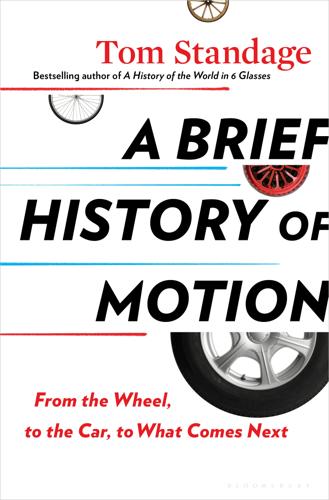
A Brief History of Motion: From the Wheel, to the Car, to What Comes Next
by
Tom Standage
Published 16 Aug 2021
AVs could, in short, just as easily reduce transport equity as increase it. The obvious answer is to use pricing to encourage some kinds of behavior and discourage others. Some cities already have congestion-charging programs of various degrees of complexity, or rules to encourage vehicle sharing, such as dedicated carpooling lanes. AVs would allow far more subtle forms of per mile road tolling and congestion charging—adjusting prices depending on time, place, vehicle type, number of riders, traffic levels, and so forth—to maximize sharing, minimize congestion, and improve transport equity. A “zombie tax” could be imposed on empty AVs, charging them more per mile when traveling without occupants, for example.
…
Peak-car theorists attribute it to several overlapping factors. Most people now live in cities, most vehicle miles are driven in cities rather than rural areas, and the decline in driving is chiefly a decline in urban driving. The cost and hassle of car ownership has increased as traffic congestion has increased and cities have introduced congestion charging zones and pedestrianized parts of city centers and made parking scarcer and more expensive. For many urbanites, but particularly the young, cars are no longer regarded as essential, as smartphones let them shop and socialize online. The steady shift toward e-commerce also means cars are needed for fewer shopping trips.
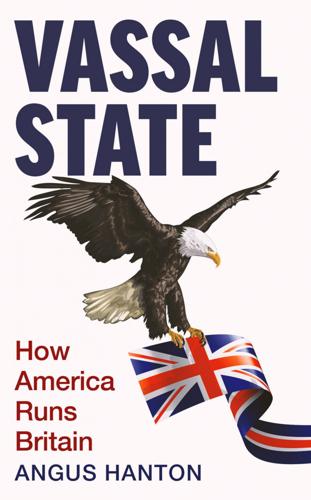
Vassal State
by
Angus Hanton
Published 25 Mar 2024
–U.K. trade agreement over digital services tax’, Politico Pro [website] (11 July 2019), https://subscriber.politicopro.com/article/2019/07/wyden-threatens-us-uk-trade-agreement-over-digital-services-tax-1585556. 32 Quoted in Sam Fleming et al., ‘US upends global digital tax plans after pulling out of talks with Europe’, Financial Times (17 June 2020), https://www.ft.com/content/1ac26225-c5dc-48fa-84bd-b61e1f4a3d94. 33 Brian Fung, ‘US threatens 100% tariffs on French cheese and champagne’, CNN Business [website] (3 December 2019), https://edition.cnn.com/2019/12/02/tech/french-tariffs-digital-services-tax/index.html. 34 ‘The government tax break worth £100m+ for Heathrow’, Tax Watch [website] (20 February 2019), https://www.taxwatchuk.org/reports/2-2/. 35 Eloise Walker, ‘New UK restriction on corporate interest tax relief’, Pinsent Masons [website] (5 Jun 2017), https://www.pinsentmasons.com/out-law/legal-updates/new-uk-restriction-on-corporate-interest-tax-relief. 36 Ross Lydall, ‘Revealed: US government owes over £12m in unpaid congestion charge’, Evening Standard (4 June 2019), https://www.standard.co.uk/news/london/us-government-owes-over-ps12m-in-unpaid-congestion-charge-a4158936.html. 37 Quoted in Patrick Wintour, ‘Boris Johnson among record number to renounce American citizenship in 2016’, Guardian (9 February 2017), https://www.theguardian.com/politics/2017/feb/08/boris-johnson-renounces-us-citizenship-record-2016-uk-foreign-secretary. 38 See the answer to the first question (‘I’m a US citizen living and working outside of the United States for many years.
…
But it is fiendishly difficult to do this effectively, and, as Eloise Walker, head of corporate tax at law firm Pinsent Masons, says: ‘The rules are detailed and complex.’35 It is another tax game that is routinely won by the smartest accountants and lawyers, who, inevitably, do not always work for HMRC. You can get a good sense of how the Americans feel about making payments to their British ‘hosts’ from London’s Congestion Charge Zone (CCZ). Drivers are supposed to pay to drive into the zone, but the US embassy simply refuses to pay its CCZ fines, of which it has accumulated more than 102,000, which means that it owes Transport for London in excess of £12.6 million.36 This obviously defeats the purpose of a measure intended to reduce pollution and encourage use of public transport, but it shows how much the eagle hates being milked.
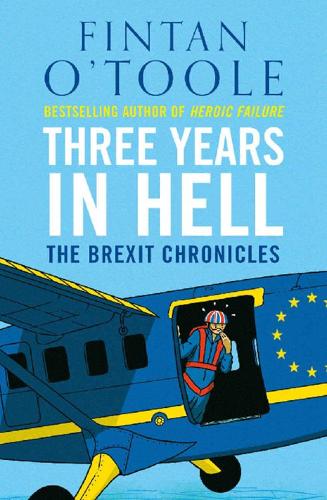
Three Years in Hell: The Brexit Chronicles
by
Fintan O'Toole
Published 5 Mar 2020
3 March 2018 With the publication of the EU’s draft legal text, the implications begin to sink in. But the British government and the unionists of the DUP continue to cling to the hope that some as yet uninvented technologies can keep the border invisible even while the UK leaves the customs union and single market. Boris Johnson explains that it can all be done as simply as the congestion charge in London. Many unionist politicians are people of deep faith. After this week’s momentous European Union proposal for a legal text on Britain’s withdrawal from the EU, they had better pray for a miracle. A miracle, that is, of technology. Last July, the DUP MP Jeffrey Donaldson spoke in tones of pure rapture about the fabulous scientific solutions that would make the problem of the Irish border after Brexit disappear: ‘Technology is a wonderful thing.’
…
But now his hour has come. He will save unionism. And this is about as plausible as most 1950s sci-fi movies. To understand this, consider Boris Johnson’s claims on BBC Radio 4 last Tuesday that the Irish border could be just like the border between Camden and Westminster. As motorists cross that line, incurring a congestion charge, they are monitored by technology ‘anaesthetically and invisibly [taking] hundreds of millions of pounds from the accounts of people travelling between those two boroughs without any need for border checks whatever’. Leaving aside the obvious problem that an external EU border is not exactly like a London borough division, there is still an enormous difficulty here.
…
For Johnson seems to have read neither his own government’s position paper on Ireland and Brexit, published last summer, or the agreement that Theresa May signed in December. Both of these documents commit the British, not just to having no personal border checks in Ireland but, in the British government’s own words, to ‘avoid any physical border infrastructure in either the United Kingdom or Ireland, for any purpose’. London’s congestion charge works because it has a very large physical infrastructure: 646 cameras mounted on big gantries at 203 different sites. Even if number plate recognition were the solution for Ireland (which it is not), there would have to be many more cameras to cover the 110 million annual trips across 300 different border crossings.
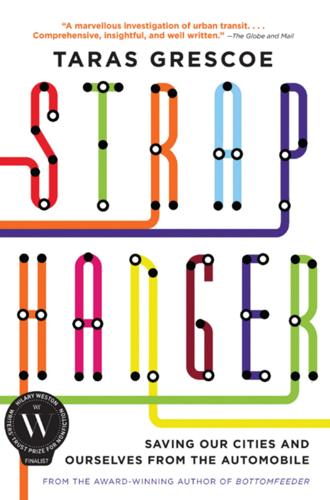
Straphanger
by
Taras Grescoe
Published 8 Sep 2011
Montezuma believed the only way to stem the defection of bus riders to private transportation was to charge drivers entering the city a fee, similar to London’s congestion charge, that would be used to subsidize better TransMilenio service. (He also favored replacing the polluting TransMilenio buses with rubber-tired electric trolleys, powered by Colombia’s abundant hydroelectric power—an elegant, if dauntingly expensive, solution.) TransMilenio was caught in the same trap the New York subway had been in the 1920s, when the contractually guaranteed nickel fare brought overcrowding and declining service, and led compressed straphangers to defect to automobiles. Dario Hidalgo told me that using a congestion charge, parking revenues, or increased gas taxes to subsidize TransMilenio’s operating costs would give the private operators the financial leeway to run more buses, which might be enough to stem the overcrowding that was tarnishing the system’s image.
…
“But Aarhus, Denmark’s second city, is as hilly as Seattle or Portland, and they have twenty-five percent of the population riding bikes. Look,” he pursued, “we can’t talk about bikes without talking about the sacred bull in society’s china shop: the automobile. We go around bubble-wrapping cyclists, making people wear helmets, when what we should be doing is taming the bull. It can be done easily, through traffic calming, congestion charges, giving priority to cyclists at intersections.” He insisted he wasn’t fanatically anti-automobile. “At a lecture in Washington, somebody said to me, ‘Here in the United States, we go for bike rides on the weekend, what do you do in Denmark?’ I told her: we go for car rides. A lot of my friends own cars.
…
For cities without historic rail networks, bus rapid transit systems, complete with dedicated lanes, signal priority, and express service could link not only the suburbs to downtown but also office parks, malls, and edge cities on the metropolitan fringes to one another. All this means we’ll have to be creative about funding sources. Raising gas taxes might mean career suicide for politicians these days, but transit can be subsidized with parking and congestion charges, highway and bridge tolls, a payroll tax for larger companies, a carbon tax—or all of the above. (Already a few transit agencies, among them Los Angeles’s Metro, are taking the lead in developing commercial and residential properties close to transit, rather than selling off property to private developers.)
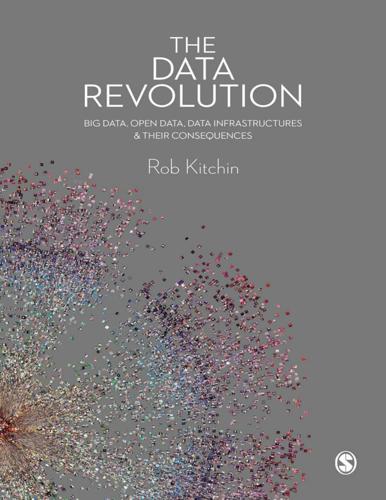
The Data Revolution: Big Data, Open Data, Data Infrastructures and Their Consequences
by
Rob Kitchin
Published 25 Aug 2014
On the one hand, such information can be used to track vehicles as they cross a city and provide inputs into intelligent transportation systems (ITS), and on the other to cross-reference details to a database of vehicle owners in order to administer fines and penalties for traffic violations. For example, in relation to the latter, the licence plate details of all vehicles entering the congestion charge zone in London are scanned and matched to a database of those that have paid the congestion charge. Those who have not paid within a 24-hour period are automatically fined through a process of automated management (the system has the autonomy to issue fines free of human oversight). The system can similarly be used in conjunction with speed cameras to issue tickets to speeding drivers.
…
Control creep is where the data generated for one form of governance is appropriated for another (Innes 2001). This has mostly clearly occurred with respect to security, particularly in the post 9/11 era, with airline industry data and government administrative data being repurposed for profiling and assessing the security risk of passengers (Lyon 2003b). Similarly, road traffic and congestion charge cameras in London have been repurposed for security tasks, rather than simply monitoring traffic offences (Dodge and Kitchin 2007a). A commercial example of control creep is in-car navigation systems in rental vehicles being repurposed from helping drivers find their way to monitoring and fining those that drive out of state or off-road (Elliott 2004).
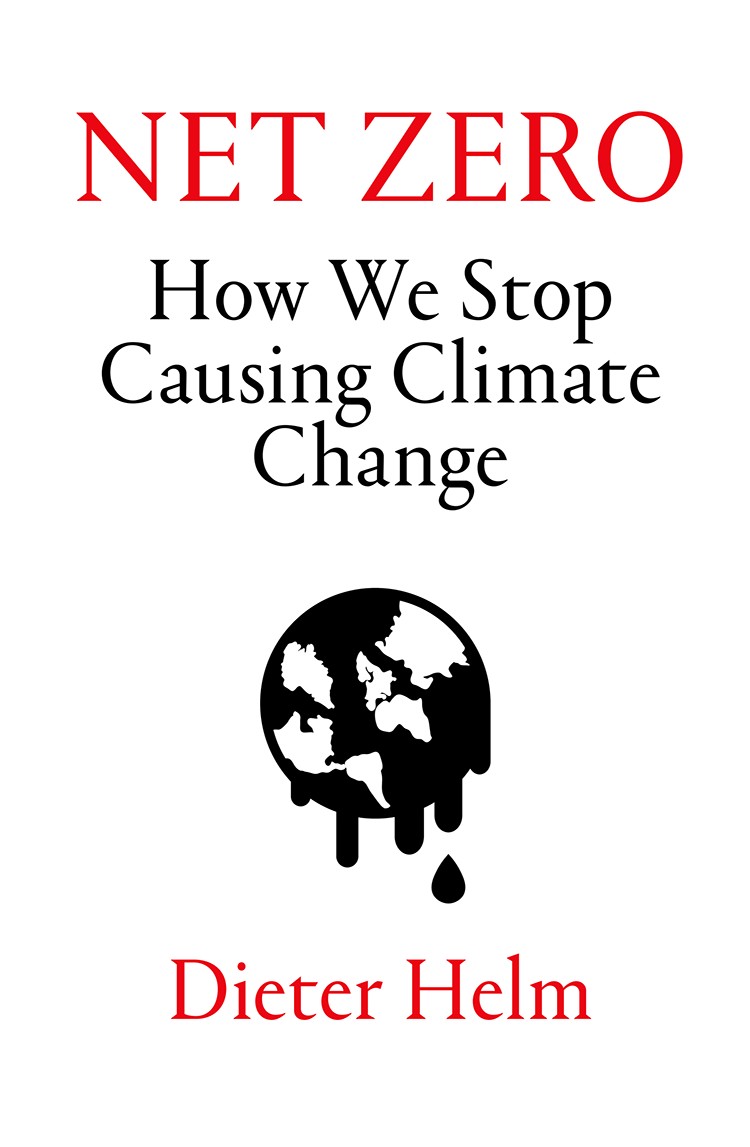
Net Zero: How We Stop Causing Climate Change
by
Dieter Helm
Published 2 Sep 2020
Nowhere is this more obvious than in towns and cities. Emissions from cars and lorries damage people’s lungs and shorten lives. Pricing mechanisms can make some difference, and urban congestion charges have a part to play. They ration the supply of road space and can reduce traffic. By calibrating these charges according to engine size and vintage (and hence pollution), the more polluting ones can be priced off the road. Congestion charges will, however, never be sufficient, and the regulatory and planning options have to come into play. Banning cars from certain areas and turning road space over to cycling and walking are increasingly policies of choice in developed countries.
…
acid rain 25, 194 Africa xiv, xv, 2, 25, 30, 38, 44, 45, 47, 48, 51, 137, 229 agriculture 2, 6, 12, 13, 14, 23, 35–6, 43, 44–5, 70, 76, 86, 87–8, 95, 100, 102, 109, 116, 146–7, 149, 159, 163–80, 181, 183, 192, 197, 198, 206, 220 baseline, the 164–8 biodiversity loss and 2, 5, 100, 164, 165, 168, 169, 171, 172, 174, 180 biofuels and 197–8 carbon emissions and 2, 12, 13, 35–6, 76–7, 146–7, 163–80 carbon price and 167–70, 171, 172, 173, 180 China and 28–9, 35, 45, 180 economics of 76, 165, 166–7, 171, 174 electricity and 13, 166, 168, 174, 178, 180 fertiliser use see fertiliser lobby 14, 110, 164, 165, 169, 170, 197 methane emissions 23, 84, 177, 178, 179 net gain and 172–4 net value of UK 76, 166 new technologies/indoor farming 87–8, 174–9, 180, 213 peat bogs and 2, 179 pesticide use see pesticides petrochemicals and 166 polluter-pays principle and 76, 168–70, 172, 173 pollution 36, 86, 163, 165–6, 168–70, 172, 173, 177–8, 230 public goods, agricultural 170–4, 180 sequestering carbon and 12, 95, 163, 166, 168, 169, 170, 171, 172, 173–4, 177, 179, 180 soils and 2, 146, 163, 164, 165, 166, 168, 169, 171, 172, 175, 179 subsidies 14, 76, 102, 109, 116, 164, 165, 166, 167, 169, 170, 172, 180, 228 25 Year Plan and 179–80 Agriculture Bill (2018), UK 170 air conditioning 135–6, 224, 233 air quality xiii, 13, 25, 46, 52, 61, 70, 135, 153, 177, 180, 201, 216, 230, 232 air transport 3–4, 6, 11, 13, 22, 50, 53, 73, 87, 88, 92, 107, 125, 128, 129, 132, 133, 134, 149, 156–7, 186, 195, 201, 203–5 aluminium 7, 117 Amazon rainforest 2, 34, 35, 95, 145, 149–50, 151, 155, 229, 230 ammonia 35, 137, 191 anaerobic digesters 35, 165, 230 animal welfare 167, 177 antibiotics 93, 165, 174 Arctic 26, 46, 114, 178 artificial intelligence (AI) 32, 175, 220, 231 autonomous vehicles 13, 129, 132, 175, 189–90, 231 Balkans 137–8 Bank of England 121 batteries 6, 31, 131, 135, 141, 183, 184, 185–90, 191, 199, 204, 213, 214, 219, 220, 221, 225, 231 beef 5, 95, 116, 117, 167, 230 Berlin, Isaiah 104 big 5 polluter products 117–18, 120 bin Salman, Mohammad 27 biocrops 36 biodiversity xiv, 2, 5, 12, 13, 28, 35, 51, 76, 94, 100, 148, 149, 152, 153, 158, 159, 164, 165, 168, 169–70, 171, 172, 174, 180, 227, 233 bioenergy 31, 34–5, 36 biofuels 21, 35, 49, 50, 67, 70, 95, 135, 183, 184, 197–8, 210, 230 biomass 32, 34, 49, 50, 67, 69, 109, 146, 147, 151, 210, 217 bonds, government 220 BP 27, 149, 187, 199 Deepwater Horizon disaster, Gulf of Mexico (2010) 147 Brazil 2, 35, 38, 44–5, 47, 95, 145, 149–50, 155, 198 Brexit 42, 47, 56, 117, 165 British Gas 102, 139 British Steel x, 194 broadband networks 6, 11, 90, 92, 125, 126, 127–8, 130–1, 132–3, 135, 140–1, 199, 201, 202, 205, 211, 214, 231, 232 Brundtland Commission 45 BT 127–8, 141 Openreach 214 Burn Out (Helm) ix, xiv Bush, George W. 36, 48, 53, 103 business rates 76, 165 Canada 52, 191, 193 capitalist model 26, 42, 99, 227 carbon border tax/carbon border adjustment xii, 11, 13, 60, 80, 115–20, 194–6, 204 carbon capture and storage (CCS) xiv, 12, 75–6, 95, 109, 146, 147–8, 149, 154, 159, 203–4, 207, 209, 222, 223 Carbon Crunch, The (Helm) ix, xiv, 221 carbon diary 4–5, 8, 10, 11, 64–6, 83, 86, 116, 143, 144, 155, 156, 167, 180, 181, 185, 203, 205 carbon emissions: agriculture and see agriculture by country (2015) 30 during ice ages and warm periods for the past 800,000 years 21 economy and 81–159 electricity and see electricity global annual mean concentration of CO2 (ppm) 19 global average long-term concentration of CO2 (ppm) 20 measuring 43–6 since 1990 1–14, 17–37 transport and see individual method of transport 2020, position in 36–7 UN treaties and 38–57 unilateralism and 58–80 see also unilateralism carbon offsetting xiii–xiv, 4, 5, 12, 34, 45, 72, 74, 79, 94–6, 97, 105, 143–59, 192, 201, 203, 207, 214, 222, 223, 234 for companies 148–50 for countries 151–5 for individuals 155–7 markets 71–2, 110–13, 117, 144, 157–9, 208 travel and 156, 201–3 see also sequestration carbon permits 71–2, 79, 110–13, 117, 144, 208 carbon price/tax xii, xiii, xv, 8, 11, 12, 13, 26, 60, 61, 71, 72, 77, 79, 80, 84, 85–6, 102–3, 105, 106–24, 134, 143, 146, 147, 150, 151–4, 157, 159, 192, 197, 198, 199, 203, 227–30, 232, 234 agriculture and 167, 168, 169–70, 171, 173, 180 domain of the tax/carbon border adjustment xii, 11, 13, 60, 80, 115–20, 121, 124, 192, 194–6, 197, 204, 227 electric pollution and 216–18 ethics of 107–10 floor price 115, 117, 208 for imports 11, 13 prices or quantities/EU ETS versus carbon taxes 110–13 setting 113–15 transport and 192–9 what to do with the money 121–4 where to levy the tax 119–20 who fixes the price 120–1 carbon sinks 2, 5, 166, 169, 203 carboniferous age 34 cars 1, 3, 4, 7, 20, 22, 36, 44, 70, 73, 114, 129, 181, 182, 183, 184–5, 190, 191, 193, 196, 197, 198, 199 see also electric vehicles cartels 39, 40, 43, 45, 46, 47, 56 cattle farming 35, 36, 95, 150, 166, 167, 173, 177, 198 Central Electricity Generating Board (CEGB) 102, 139, 218 cement 6, 7, 26, 29, 34, 87, 117, 171 charging networks, electric vehicle 91, 129–30, 141–2, 184, 185–90, 199, 200, 202, 219 Chernobyl 78 China xi, xv, 1–2, 5, 8, 18, 42, 46, 47, 48, 64, 66, 74, 101, 180, 229 Belt and Road Initiative 28, 45 coal use 1–2, 8, 23–4, 24, 28, 31, 38, 117, 154, 206, 208 Communist Party 2, 27, 42, 46 demand for fossil fuels/carbon emissions 1–2, 8, 18, 20, 22, 23–4, 24, 25, 27–31, 36, 38, 51, 73, 117, 154, 206, 208 export market x–xi, 5, 9, 64, 66, 117, 155, 194 fertiliser use 35 GDP xv, 27, 29 nationalism and 42 petrochemical demand 22 renewables companies 9, 32, 73, 74, 77, 79 Tiananmen Square 42 unilateralism and 58, 59 UN treaties and 46, 47, 48, 53, 54, 55, 58, 59 US trade war 56, 118 Churchill, Winston 183 citizen assemblies 99–101 climate change: carbon emissions and see carbon emissions 1.5° target 38, 57 2° target 1, 10, 22–3, 28, 30, 38, 39, 45, 47, 54, 55, 57, 108, 122, 155, 206 see also individual area of climate change Climate Change Act (2008) 66, 74–7 Clinton, Bill 40, 48 Club of Rome 98 coal 1–2, 5, 8, 13, 20, 23–5, 28, 29, 30, 31, 32, 34, 36, 38, 50, 52, 53, 60–1, 67, 72, 77, 78–9, 101, 109, 112, 116, 117, 119, 134, 136, 145, 147, 148, 151, 154, 155, 182, 183, 194, 196, 206–9, 210, 212, 214, 216, 217, 218, 229, 230 coastal marshes 146, 159 colonialism 45 Committee on Climate Change (CCC), UK x–xi, 7, 74–5, 120, 164, 166, 169, 217, 235 ‘Net Zero: The UK’s Contribution to Stopping Global Warming’ report x–xi conference/video calls 6, 129, 156, 202, 205 Conference of the Parties (COP) xii, 10, 48, 50, 53–4, 55, 59, 205 congestion charges 198 Copenhagen Accord 48, 53–4, 59 Coronavirus see Covid-19 cost-benefit analysis (CBA) 71, 108, 110, 114, 138 cost of living 116 Covid-19 x, xi–xii, 1, 3, 6, 9, 18, 19, 22, 25, 27, 30, 37, 44, 46, 50, 57, 65, 69, 80, 89, 93, 129, 135, 148, 171, 201, 202, 204, 232 CRISPR 176 crop yields 172, 177 dams 2, 36, 52–3, 179 DDT (Dichlorodiphenyltrichloroethane) 100 deforestation 2, 5, 34, 35, 36, 38, 43, 44, 47, 55, 87, 95, 145, 146, 149–50, 155, 172–3, 179, 197–8, 229 Defra (Department for Environment, Food and Rural Affairs) 170 deindustrialisation x, 29, 46, 52, 54, 59, 72–4, 218 Deng Xiaoping 27 Denmark 69–70, 136–7 desalination 135–6, 179 diesel 4, 20–1, 70, 76, 86, 109, 119, 121, 129, 132, 164, 165, 166, 174, 175, 178, 179, 181, 182, 185, 186, 191, 192, 196–7, 208, 217, 230 ‘dieselgate’ scandal 196–7 digitalisation 1, 8, 11, 13, 33, 92, 117, 136, 174, 175, 180, 206, 211, 215, 221, 228–9, 231 DONG 69 Drax 147, 151, 154, 218 economy, net zero 10–12, 81–159 delivering a 96–103 intergenerational equity and 96–7 markets and 103–5 net environmental gain see net environmental gain political ideologies and 98–101 polluter-pays principle see polluter-pays principle public goods, provision of see public goods, provision of technological change and 98 EDF 139, 218 Ehrlich, Paul 98 electricity 1–2, 4, 6, 11, 12, 13, 23, 31, 32, 49, 53, 61, 65, 66, 68, 70, 73, 77, 78, 79, 91, 92, 101, 102, 109, 117, 125, 127, 128, 129–30, 131–2, 134, 135, 136, 137, 139, 140, 141, 149, 158, 166, 168, 174, 178, 180, 182, 183, 228, 229, 231, 232, 234, 235 coal, getting out of 206–7 electric pollution and the carbon price 216–18 electric vehicles 4, 6, 13, 20, 23, 49, 61, 91, 92, 94, 121, 125, 128, 129–30, 131–2, 134, 141, 183–92, 193, 194, 197, 200, 201, 202, 206, 219, 228 equivalent firm power auctions and system operators 210–16 future of 206–25 gas, how to get out of 207–9 infrastructure, electric 185–90, 218–20 low-carbon options post-coal and gas 209–10 net gain and our consumption 222–5 R&D and next-generation renewables 220–2 renewable see renewables Energy Market Reform (EMR) 219 equivalent firm power (EFP) 212–16, 217, 220 ethanol 35, 71, 95, 197 eucalyptus trees xiv, 152 European Commission 60, 71, 72, 112 European Union (EU) xiv, 2, 7, 8, 9, 37, 42, 44, 46, 47, 117, 137, 165, 166, 197; baseline of 1990 and 51–2 Common Agricultural Policy (CAP) 76, 165 competition regime and customs union 56 deindustrialisation and 46, 52, 54, 59, 72–4 directives for 2030 66 Emissions Trading System (EU ETS) 71–2, 73, 79, 110–13, 117, 144, 208 importing carbon emissions 59 Internal Energy Market (IEM) 68, 71 Kyoto and 9, 51, 59, 66–7 Mercosur Agreement 44, 95 net zero target for 2050 66, 115, 143, 155, 167, 180 Paris and 54 Renewable Energy Directive 68–71, 73, 109 2020 targets signed into law 66 2020–20–20 targets 67, 69, 74 unilateralism and 59, 66–71, 80 Eurostar 133 externalities 104, 170, 180, 196 Extinction Rebellion 6 farmers 14, 26, 35, 36, 43, 71, 76, 86, 95, 102, 109, 110, 146–7, 164, 165, 166, 169, 170, 174, 175, 196, 197, 198 fertiliser 4, 6, 7, 26, 29, 35, 61, 73, 86, 87, 116, 117, 119, 163, 165, 169, 174, 175, 178, 179, 191, 194, 197 fibre/broadband networks 6, 11, 90, 92, 125, 126, 127–8, 130–1, 132–3, 135, 140–1, 201, 202, 205, 211, 214, 231, 232 financial crisis (2007/8) 1, 19, 69 first-mover advantage 75 First Utility 199 flooding 13, 77, 149, 152, 153, 159, 170, 233 food miles 167 food security 170–1 food waste 178, 180, 231 Forestry Commission xiv Formula One 186, 196 fossil fuels, golden age of 20–5 see also individual fossil fuel France 46, 47, 52, 56, 73, 78, 101, 113, 130, 136, 138 free-rider problem 39–40, 43, 62–4, 106, 119 fuel duty 121, 195–6 fuel efficiency 197 fuel prices 26, 112–13, 209 fuel use declaration 195 Fukushima Daiichi nuclear disaster (2011) 52, 78 Fukuyama, Francis: The End of History and the Last Man 40–1 gardens 6, 43, 143, 156 gas, natural ix, 2, 5, 8, 20, 23, 24, 25, 26, 29, 31, 32, 36, 50, 52, 68, 69, 79, 102, 109, 117, 119, 129, 136, 137, 146, 147–8, 149, 183, 190, 193, 194, 207–9, 210, 211, 214, 216–17 G8 47 gene editing 172, 176, 231 general election (2019) 121 genetics 98, 172, 174–6, 231 geoengineering 177 geothermal power 137, 178 Germany 9, 30, 47, 52, 59, 60, 62, 66, 67, 69, 70, 71, 72, 73, 75, 77–80, 83, 91, 101, 112, 136, 137, 138, 144, 206, 208, 209 Energiewende (planned transition to a low-carbon, nuclear-free economy) 59, 69, 77–80, 112, 144, 208 Gilets Jaunes 101, 113 GMOs (genetically modified organisms) 176, 177 Great Northern Forest, Britain 151 Green and Prosperous Land (Helm) xiii, xiv, 165, 169, 234 greenbelt 173 greenhouse effect 17 green new deal 90, 102, 234 green parties/green votes 69, 77, 78 green QE (quantitative easing) 102–3 green walls 153, 231 greenwash 156 gross domestic product (GDP) xii, xv, 1, 25, 27, 29, 41, 57, 59, 73, 76, 83, 93, 98, 103, 133, 165, 207, 227, 229, 233 growth nodes 133 G7 47 G20 47 Haber-Bosch process 35, 163 Hamilton, Lewis 186 ‘hands-free’ fields 175 Harry, Prince 6 Heathrow 133, 134 hedgerow 76, 166, 167, 172 Helm Review (‘The Cost of Energy Review’) (2017) ix, 120, 141, 200, 210, 212, 215, 217, 220, 238 herbicide 163 home insulation 102 House of Lords 170 housing 101, 223–4 HS2 92, 125, 132–4, 138, 202 Hume, David 49 hydrogen 13, 49, 92, 125, 128, 135, 137, 183, 184, 190–2, 199, 200, 204, 206, 213, 228 hydro power 31, 35, 36, 50, 52–3, 70, 136, 137, 191 Iceland 137, 178 imports x–xi, xiii, 5, 8, 10, 11, 12, 13, 62, 68, 70, 117–18, 155, 167, 178, 173, 180, 196, 227 income effect 72, 111 income tax 121, 122, 232 India xiv, xv, 25, 30, 31, 38, 43, 44, 47, 48, 51, 54, 55, 57, 154, 229 individuals, net zero for 155–7 Indonesia 2, 35 indoor farming 87–8, 177–8, 180, 213 indoor pollutants 223, 232 Industrial Revolution 1, 18, 19, 25, 47, 116, 145 INEOS Grangemouth petrochemical plant xi information and communications technology (ICT) 117, 202, 231 infrastructures, low-carbon xiii, xiv, 11–12, 14, 28, 60, 62, 65, 66, 90, 91–4, 96, 105, 109, 123, 125–42, 143, 147, 151, 154, 159, 171, 184, 186, 187, 190, 199–200, 214, 218–20, 228, 230, 231–2, 234–5 centrality of infrastructure networks 128–30 electric 125–41, 218–20 making it happen 141–2 net zero national infrastructure plan 130–6 private markets and 125–8, 141–2 regional and global infrastructure plan 136–7 state intervention and 126, 127–8, 141–2 system operators and implementing the plans 138–41 inheritance tax 76, 165 insects 164, 177, 231 insulation 102, 224 Integrated Assessment Models 114 intellectual property (IP) 75 Intergovernmental Panel on Climate Change (IPCC) 17–18, 47, 55, 57, 108, 172 internal combustion engine 13, 22, 181–2, 183, 184, 200, 221, 228 Internal Energy Market (IEM) 68, 71, 138 International Energy Agency (IEA) 25, 207 International Monetary Fund (IMF) 51 internet banking 131, 213 internet-of-things 128, 175 Iran 27, 42, 113, 137 Iraq 56, 192 Ireland 43, 157 Italy 137, 182 Japan 27, 28, 30, 52, 73, 78, 101, 185 Jevons Paradox 224 Johnson, Boris 89–90 Kant, Immanuel 104 Keynes, John Maynard 89, 102, 103, 105 Kyoto Protocol (1997) xii, 2, 7, 9, 13, 17–18, 37, 38, 39, 40–1, 47–8, 49, 51, 52–3, 59, 66–7, 119 laissez-faire 104, 138, 188 land use 35, 61, 95, 172, 237 LED (light-emitting diode) lighting 87, 178, 179, 180, 213 liquefied natural gas (LNG) 136, 183 lithium-ion battery 185 lobbying 10, 14, 33, 69, 71, 109, 110, 111–12, 115, 121, 157, 169, 170, 187, 197, 209, 223, 227, 228 location-specific taxes 194 maize 35, 165, 197 Malaysia 2, 229 Malthus, Thomas 98 Mao, Chairman 27, 42 meat xi, 65, 164, 177, 180, 232 Mekong River 2, 28, 179, 229 Mercosur Agreement 44, 95 Merkel, Angela 78 methane 4, 23, 84, 177, 178, 179, 216 microplastics 22 miracle solution 49–50, 55, 209 mobile phone 5, 125, 185 National Farmers’ Union (NFU) 110, 164, 165, 169, 170, 171 National Grid 139, 141, 189, 200, 211, 214, 219 nationalisations 101–2, 126–7 nationalism 41, 43, 55, 56, 138 nationally determined contributions (NDCs) 54–5 natural capital xiii, 14, 33–6, 51, 85, 86, 88, 90, 94, 97, 154, 158, 168, 171, 173–4, 236 Nature Fund 123, 169, 234 net environmental gain principle xiii, xiv, 10, 12, 62, 84, 94–6, 105, 143–59, 169, 172–4, 192, 201–3, 222–5 agriculture and 169, 172–4 carbon offsetting and see carbon offsetting electricity and 222–5 principle of 94–6, 143–4 sequestration and see sequestration transport and 192, 201–3 Netherlands 138 Network Rail 214 net zero agriculture and see agriculture defined x–xv, 3–14 economy 10–12, 81–159 see also economy, net zero electricity and see electricity transport and see individual method of transport 2025 or 2030 target 89 2050 target x, xi, 5, 59, 66, 74, 75, 115, 120, 135, 143, 155, 167, 169, 180, 184, 216, 217, 222, 226, 230, 231, 232 unilateralism and see unilateralism NHS 65 non-excludable 91, 93, 126, 170 non-rivalry 91, 93, 126, 170 North Korea 42 North Sea oil/gas 9, 40, 75, 97, 102, 137, 139, 147, 148, 193 Norway 130, 137, 191 nuclear power 5, 9, 12, 18, 23, 52, 60, 73, 77–9, 109, 125, 128, 129, 136, 140, 178, 194, 199, 206, 207, 208, 209–10, 212, 214, 216, 218, 219, 222, 228 Obama, Barack 48, 53, 54, 59 oceans 2, 14, 22, 33, 85, 86, 88, 148, 163, 231 offsetting see carbon offsetting offshore wind power 31, 69, 75–6, 208, 212, 219, 221 Ofgem 220 oil ix, 2, 20, 22–3, 25, 26, 27, 31, 32, 33, 36, 39, 40, 50, 67, 69, 86, 97, 117, 119, 129, 136, 137, 146, 147, 148–9, 150–1, 152, 181–3, 184, 185, 187, 189, 190, 192–4, 196, 197, 199, 206, 209, 210, 216–17, 229 OPEC 39, 40, 193 Orbán, Viktor 41, 42 organic food 61, 87, 178 Ørsted 70 palm oil 2, 5, 6, 35, 36, 66, 71, 167, 173, 197–8, 230 pandemic see Covid-19 Paris Climate Change Agreement (2015) xii, 2, 10, 13, 18, 30, 37, 38, 39, 48, 49, 54–5, 56, 57, 58, 66, 80, 105, 106, 118, 119, 227 peat bogs xiv, 2, 13, 14, 33, 35, 36, 43, 109, 146, 169, 179 pesticides 4, 26, 61, 163, 165, 169, 174, 178, 231 petrochemicals xi, 7, 8, 20, 22–3, 29, 73, 80, 86, 117, 166, 182 petrol 4, 86, 119, 121, 129, 185, 186, 187, 191, 192, 199 photosynthesis 34, 197 plastics 1, 22, 28, 35, 43, 66, 86, 87, 119, 143, 166, 184, 231 polluter-pays principle xiii, xv, 84–90 agriculture and 76, 168–70, 172, 173 carbon price and see carbon price/tax generalised across all sources of pollution 86 identifying polluters that should pay 86 importance of 10–11, 13, 61, 62, 65 intergenerational balance and 96–7 net environmental gain and 94 sequestration and see sequestration, carbon sustainable economy and 96–7, 105, 106 transport and 192–5, 198–9 see also individual type of pollution population growth 93, 97, 177, 178, 179, 232 privatisation 127, 140, 218–19, 220 property developers 94 public goods, provision of xiii, 10, 11–12, 62, 75, 84, 90–4, 96, 104, 105, 109, 122, 123, 126, 128, 141, 147, 151, 153, 159, 164, 168, 173–4, 180, 192, 199–200, 202, 218, 229, 230 agricultural 170–4, 180 low-carbon infrastructures see infrastructures, low-carbon research and development (R&D) see research and development (R&D) Putin, Vladimir 27, 41, 42, 89 railways 11, 13, 13, 87, 91, 92, 94, 125, 128, 129, 130, 131, 132–3, 138, 139, 156, 182, 183, 187, 202, 212, 214, 232 rainforest 2, 5, 34, 35, 36, 38, 44, 47, 55, 87, 95, 145, 149, 155, 173, 179–80, 197, 229 rationalism 40–1 Reagan, Ronald 103 red diesel 76, 109, 164, 165, 196 regulated asset base (RAB) 127, 141, 215, 220 remote working 128, 156, 201–2, 205 renewables ix, 6, 8, 9–10, 18, 19, 21, 26, 31–5, 36, 49, 50, 55, 61, 67, 72, 77, 79, 85, 86, 109, 110, 112, 123, 125, 128, 131, 135, 138, 140, 144, 149, 178, 188, 191, 194, 197, 199, 207, 209–10, 211, 212, 213, 214, 215, 216, 217, 219, 220–2, 224, 228 Chinese domination of market 9, 32, 73, 74, 77, 79 cost-competitiveness of 9–10, 49, 51, 61, 68 failure of, 1990-now 19, 31–3, 36 modern global renewable energy consumption measured in TWh per year 32 miracle solution and 49–51 Renewable Energy Directive 68–71, 73, 109 subsidies ix, 9, 10, 50, 68–9, 71, 79, 80 see also individual renewable energy source Renewables UK 110 research and development (R&D) xiv, 12, 13, 14, 62, 65, 66, 90, 93–4, 104, 109, 123, 165, 172, 192, 200, 218, 220–2, 223, 228, 234 reshoring businesses 8, 204 rivers 2, 22, 28, 86, 128, 152, 165, 169, 179, 214, 230 roads 11, 28, 45, 91, 92, 125, 129, 131–2, 140, 165, 182, 189, 194, 198, 202, 232 robotics 32, 175, 204, 206, 231 Rosneft 26 Royal Navy 183 Russia 26, 27, 30, 40, 42, 44, 45, 46, 47, 48, 50, 52, 55, 56, 192, 193 RWE 139, 218 Ryanair 156–7 rye grass 35 salmon 169, 177 Saudi Arabia 26, 33, 40, 42, 50, 137, 192, 193 Saudi Aramco 26, 50 seashells 34 sequestration, carbon xi, xiv, 12, 61, 66, 85, 90, 95, 143–59, 228, 229, 231, 232 agriculture and 12, 163, 166, 168, 169, 170, 171, 172, 173, 176–7, 179, 180 baseline definition and 146–7 biofuels and 35, 146, 217 carbon capture and storage (CCS) xiv, 12, 75–6, 95, 109, 146, 147–8, 149, 154, 159, 203–4, 207, 209, 222, 223 companies, net zero for 148–51 countries, offsetting for 151–5 electricity and 222, 223 gas and 207 individuals, net zero for xi, xiv, 155–7 markets, offsetting 157–9 natural capital destruction and 2, 19, 33–6, 44, 45, 51 natural sequestration xi, xiii, 2, 7, 12, 14, 33–6, 37, 45, 52, 66, 85, 90, 94–6, 105, 143–59, 163, 168, 171, 173, 176–7, 179, 180, 203, 206, 207, 222, 223 net gain principle and 143–4, 146, 149–50 offsetting principle and 143–5 peat bogs and see peat bogs principle of xi, xiii, 2, 7, 12–13 soils and see soils transport and 185, 190, 203 tree planting and see trees, planting/sequestration and types of 145–8 wetlands/coastal marshes and 146, 159, 233 shale gas 8, 208 Shell 27, 149, 199 shipping 8, 13, 22, 28, 36, 49, 114, 125, 137, 181, 182–3, 191, 194–5, 203–5, 217 Siberia 2, 46 smart appliances 128, 129, 132 smart charging 11, 13, 128, 129, 130, 139, 214, 219 soils xiii, 2, 5, 7, 12, 14, 33, 35, 36, 43, 55, 76, 109, 146, 149, 152, 156, 159, 163, 164, 165, 166, 168, 169, 171, 172, 175, 179, 203, 228 solar panels/solar photovoltaics (PV) 5, 6, 9, 12, 13, 21, 31, 32, 33, 49, 53, 68, 69, 71, 74, 79, 87, 91, 135, 136, 137, 178, 179, 188, 204, 207, 208, 209, 210, 211, 213, 214, 216, 217, 221, 222, 223, 224–5 Sony 185 Soviet Union 18, 40, 52, 67–8, 89 soya 95 Spain 69, 130, 137 sport utility vehicles (SUVs) 106, 121, 192 spruce xiv, 152, 170 standard of living xv, 1, 5, 8, 10, 11, 14, 229, 233 staycations 201 steel x–xi, 6, 7, 8, 26, 28, 29, 53, 66, 73, 80, 87, 116, 117, 118, 119, 171, 184, 194–5 Stern, Nicholas: The Economics of Climate Change 41, 63 subsidies ix, 9, 10, 14, 32, 50, 51, 52, 53, 69, 71, 76, 79, 80, 89, 102, 109, 110, 113, 116, 123, 140, 154, 164, 165, 166, 167, 169, 170, 172, 180, 193, 196, 198, 209, 215, 221, 222, 228, 230 sugar cane 35, 71, 95, 197, 198 sulphur pollution 22, 25, 28, 78, 191, 194, 197, 230 sustainable economic growth xv, 10, 12, 14, 61, 83, 92, 94, 97, 98, 105, 227, 233 Taiwan 42 taxation xii, 11, 62, 71, 72, 76, 80, 87, 89, 90, 91, 92, 97, 101, 102, 103, 106–24, 126, 127, 130, 133, 147, 150, 151–2, 153–4, 157, 159, 165, 169, 170, 192–6, 197, 198, 199, 203, 232, 234 technological change 98, 127, 141, 174–5, 221 Thatcher, Margaret 17 Thompson, Emma 6 3D printing 175, 204 Thunberg, Greta 6, 205 tidal shocks 159 top-down treaty frameworks 13, 38–57, 80, 110, 119 tourism/holidays 6, 22, 36, 88, 94, 107, 114, 128, 156, 201, 204–5 transport, reinventing 181–205 aviation 195, 201, 203–5 see also air transport batteries and charging networks 185–90 biofuels 196–8 electric alternative 183–5 hydrogen and fuel cells 190–2 innovation, R&D and new infrastructures 199–200 internal combustion engine 181–2 net gain and offsets (reducing travel versus buying out your pollution) 201–3 oil 183–4 polluter pays/carbon tax 192–6 shipping 203–5 urban regulation and planning 198–9 vehicle standards 196–8 see also individual type of transport Treasury, UK 120–2 trees, planting/sequestration and xi, xiii, xiv, 2, 7, 13, 14, 33, 34, 45, 76, 85, 94–6, 146, 148, 149–51, 152–3, 155, 156, 157, 158, 159, 168, 169, 172, 179, 203, 231 trophy project syndrome 133 Trump, Donald 2, 8, 41, 42, 48, 89, 99, 103, 121 25 Year Environment Plan xiii, 153, 170, 179–80 UK 47, 69 agriculture and 164, 166, 167, 173 carbon emissions (2015) 30 carbon price and 115, 120 Climate Change Act (2008) 66, 74–7 coal, phasing out of 24–5, 60–1, 77, 208 Committee on Climate Change (CCC) x–xi, 7, 74–6, 120, 164, 166, 169, 217, 235 deindustrialisation and 72–4 80 per cent carbon reduction target by 2050 74 electricity and 206, 208, 218, 219, 224 Helm Review (‘The Cost of Energy Review’) (2017) ix, 120, 141, 200, 210, 212, 215, 217, 220, 238 infrastructure 125, 132–3, 134, 137, 139–40 net zero passed into law (2019) 66 sequestration and 145, 150, 153, 154, 155, 156 transport and 195–6, 197, 198 unilateralism and 58–9, 60–1, 65, 66, 69, 72–7, 80 unilateralism xi, 8, 10, 11, 25, 58–80, 83, 105, 106, 119, 125, 143, 144, 155, 164, 167, 197, 203, 227 in Europe 66–80 incentive problem and 58–60 morality and 62–6 no regrets exemplars and/showcase examples of how decarbonisation can be achieved 60–2 place for 80 way forward and 80, 83 United Nations xi, xii, 6, 10, 17, 37, 38, 118 carbon cartel, ambition to create a 39–40, 43, 45, 46–7, 56 climate treaty processes xi, 6, 10, 13, 17–18, 36, 37, 38–57, 59, 80, 110, 118, 119, 204–5 see also individual treaty name Framework Convention on Climate Change (UNFCCC) 17–18, 36, 38, 59 miracle solution and 50–1 origins and philosophy of 41 Security Council 46, 47, 57 United States 8, 74, 139, 206 agriculture in 175, 176, 197 carbon emissions 8, 29, 30 China and 27–8, 42, 118 coal and 2, 24, 28, 29, 208 economic imperialism 45 energy independence 50 gas and 8, 20, 23, 24, 29, 50, 208 oil production 40, 50, 193 pollution since 1990 29 unilateralism and 58, 59, 74 UN climate treaty process and 38, 40–1, 44, 45, 46, 47, 48, 53, 54, 56 universal service obligations (USOs) 92, 126, 131, 202 utilitarianism 41, 63–4, 108, 110 VAT 117, 119–20, 121, 122, 232 Vesta 69 Volkswagen 196–7 water companies 76, 214, 230 water pollution/quality xiv, 12, 22, 61, 76, 152, 153, 165, 169, 170, 171, 172, 175, 177, 178, 179, 180, 232 Wen Jiabao 53, 59 wetlands 159, 233 wildflower meadow 164, 184 wind power 5, 9, 12, 21, 31, 32, 33, 49, 53, 68, 69–70, 71, 74, 75, 76, 78, 79, 91, 135, 136, 137, 138, 139, 178, 188, 191, 207, 208, 209, 210, 211, 212, 213, 214–15, 216, 217, 219, 221, 222 wood pellets 67, 217, 230 Woodland Trust 156, 158 World Bank 51 World Trade Organization (WTO) 52, 56, 118 World War I 183 World War II (1939–45) 78, 90, 92, 101, 106, 171 Xi Jinping 27, 41, 42 ACKNOWLEDGEMENTS So much is now discussed, written and published about climate change that it is impossible to keep track of all the ideas and conversations that have influenced my understanding of the subject.
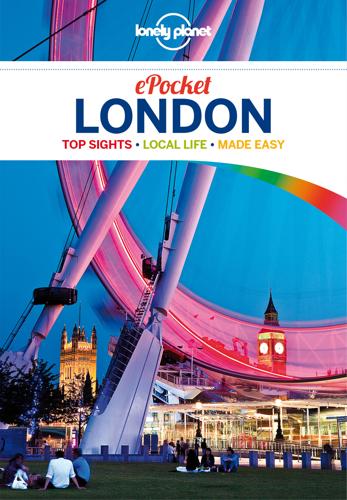
Pocket London Travel Guide
by
Lonely Planet
Taxi Black cab drivers always know where they are going, but fares are steep unless you’re in a group. Bicycle Barclays Bikes are everywhere around central London and great for short hops. Car & Motorcycle As a visitor, it’s unlikely you’ll need to drive in London. Disincentives include extortionate parking charges, congestion charges, traffic jams, high price of petrol, efficient traffic wardens and wheel clampers. But if that doesn't put you off, numerous car hire operations can be found across town from self-service, pay-as-you-drive vehicles to international firms (such as Avis and Hertz, Click here). For more information, see Survival Guide ( Click here ) Currency Pound sterling (£). 100 pence = £1 Language English (and over 300 others) Visas Not required for US, Canadian, Australian, New Zealand or South African visitors for stays up to six months.
…
Fares cost £3.50 to £5.50 for adults, £1.70 to £2.80 for children; discounts for Oyster card holders and travel card holders. › See Click here for details on sightseeing boat tours on the Thames, including boats to Hampton Court Palace and Kew Gardens. Car & Motorcycle Best for… independence. › London was the world’s first major city to introduce a congestion charge to reduce the flow of traffic into its centre. For full details log on to www.tfl.gov.uk/roadusers/congestioncharging. › The following agencies have several branches across the capital: easyCar (www.easycar.com), Avis (www.avis.com), Hertz (www.hertz.com). Book in advance for the best fares, especially at weekends. › If you need a car for just a couple of hours or half a day, try the self-service pay-as-you-go scheme, Streetcar ( 0845 644 8475; www.streetcar.co.uk). › Cars drive on the left in the UK. › All drivers and passengers must wear seatbelts and motorcyclists must wear a helmet. › Expensive parking charges, traffic jams, high petrol prices, efficient traffic wardens and wheel clampers make car hire unattractive for most visitors.
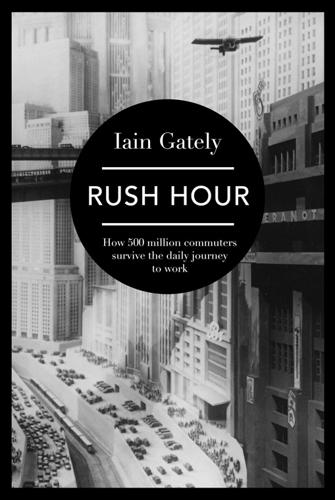
Rush Hour: How 500 Million Commuters Survive the Daily Journey to Work
by
Iain Gately
Published 6 Nov 2014
Most commuters in the developed world travel on four wheels. The figure ranges from 87 per cent in America to 39 per cent in Japan. Over two-thirds of Britons commute by car, and only 16.4 per cent of them use public transport, with the remainder walking, cycling or riding motorbikes. Even in London, which introduced congestion charging in 2003 to deter drivers, 29.8 per cent of its commuters travelled by car in 2013, which is more than on any other single form of transport.*3 This isn’t simply because of perverse desires to expend hydrocarbons and cook the planet: driving, more often than not, is the only way. Here’s an example from life.
…
Index a Achen Motor Company 315 Acton 43, 46 Acts of Parliament 17 Acworth, Sir William Mitchell 73 aeroplanes 307 America cars 90–101 commuting 224–5 railways 66–80 American Automobile Association (AAA) 198, 209–10 American Bicycle Co. 91 American Motors 120 American School Bus Council (ASBC) 236 Andrade, Claudio 279, 280 Apple 295–6 Australia 232 autobahn 103, 109, 151, 166 b Bagehot, Walter 59 Balfour, A.J. 65 Barter, David Obsessive Compulsive Cycling Disorder 168 Bazalgette, Joseph 60 Beeching, Dr Richard cuts 137, 146, 158, 313, 328 Beerbohm, Max 58 Beijing 160, 161 Metro 160, 162 Benz, Karl 90 Bern, Switzerland 86, 87 Besant, Sir Walter 57 Best Friend of Charleston crash 69 Betjeman, John 109, 135, 272–3 bicycle Boris bikes 167 Brompton 167 commuting in Britain 101, 138–9, 166–8, 216–17 commuting in Europe 166, 222 Flying Pigeon 161–2 penny farthing 101 Raleigh 139 Rover 101–2 Birmingham HS2 329 number 8 bus 141 Birt, William 61 Bishop’s Waltham 313, 327 Blake, William Marriage of Heaven and Hell 104 Booth, Henry 27 Boris bikes 167 Boston 69, 97 Boston and Worcester Line 72 Botley station, Hampshire 1, 2, 3–5, 7, 313, 334 Bowser, Sylvanus Freelove 95 Brazil 279 British Telecom 291–3 Bromley 23, 46 Brompton bike 167 Brunel, Isambard Kingdom 331 Buchanan, Professor Sir Colin Traffic in Towns 145–6 buses 48, 140–41, 235–6, 275–6 c California High Speed Rail (CHSR) 330, 331 Callan Automobile Law 95 carriages (railway) 29–30, 54, 55 in America 71–3 in France 83–4 WCs 33, 72, 226–7 women-only 188–9 ‘workmen’s trains’ 33–4, 60, 61, 83 cars 89–92, 195 commuting in America 101, 113, 116–17 in Britain 107, 142–4, 249–52 in communist countries 151–2 in Italy 149–50 congestion 192–5 congestion charge 312 driverless 316–17, 320–27 ownership 97–8, 100, 103, 125 radio 119, 255–8 SUVs 204–8 Central Railroad of Long Island 76 C5 (electric tricycle) 309–11 Chaplin, William James 15 Cheap Trains Act 61 Chesterton, G.K. 57, 105, 109 Chicago Automobile Club 96–7, 256 Great Fire of 1871 79 Oak Park suburb 79–80 Park Forest suburb 113–15 China 160–62, 314–15 Chrysler 119, 160 Churchill, Winston 308–9 City and South London Railway 54–5, 62 Clean Air Act 286–7 Cobbett, William 334 Collins, Wilkie Basil 52 commuting (car) see cars commuting (cycling) see cycling commuting (rail) comic representation of 137 commuter etiquette 72–3, 82, 249 extreme commuting 233–4 in America 66–80 in France 81–7 in Germany 80, 86–7 in Japan 177–84 in the 1950s 136 in Victorian times 33–9, 42 food in England 36–7, 247 in France 84–5 origin of the term 67 overcrowding 171–83 coronations 140 County Durham 14 Coventry 102 Crawshay, William 35 Croton Falls 66 Croydon 56 Cultural Revolution (China) 161 Cunarders 140 cycling commuting in Britain 101, 138–9, 166–8, 216–17 commuting in Europe 166, 222 Cyclists’ Touring Club 102–3 d Dagenham 107 Dahl, Roald 129, 135–6 Daimler, Gottlieb 90 Dalai Lama 210 Darwin, Charles 13, 32 Daudet, Alphonse 83–4 Daumier, Honoré The Third-Class Carriage 83 The New Paris 86 Landscapists at Work 86 Defense Advance Research Projects Agency (DARPA) 317, 318 Delhi 211–13 Deng Xiaoping 161, 162 Denmark 222, 288 Detroit 110, 121, 123–4 ‘Detroit by the Volga’ 153 Dickens, Charles 12, 25, 50 food 36–7, 84–5, 247 Mugby Junction 84–5 Great Expectations 12 Our Mutual Friend 50 train travel in America 70, 71, 74 Diggins, John 3 Docklands Light Railway (DLR) 279 Downing, Andrew Jackson 66 driverless cars 316–17, 320–27 driving schools 215–16 driving tests New York State 94–5 UK 216 Duluth, Minnesota 79–80 e Ealing, London 38, 40, 42, 46, 56 Eden, Emily 58 Edinburgh 13, 14, 16, 329 Edmondson, Brad 314 Einstein, Albert 87 Eliot, William G.
…
Proctor 78–9 Kobbé, Gustav 76–7 KPMG (multinational firm) 321, 322, 325 l Lambretta 150 Lancaster, Sir Osbert Pillar to Post 108–9 Lardner, Dionysius 22 Levassor, Emile Constant 90 Levitt, William Jaird 112 Levittown, 112, 113, 114, 115, 116, 122, 123, 158, 224 Lewes 18 List, Friedrich 80 Liverpool 15, 22, 26, 223 Liverpool, Crosby & Southport Railway 22 Liverpool and Manchester Railway 15, 24, 27 Liverpool Street Station 34 Local Government Act 63 locomotives 21, 30, 70, 134 Best Friend of Charleston 69 Iron Duke 4–2–2 Sultan38, 70 Rocket 24 tank engine 28 Locomotives on Highways Act 89 London 13, 15, 16, 18–19, 20 congestion charge 312 cycling to work 166–8 North Circular road 108, 147 orbital roads 147 Second World War 129–34 traffic jams 192–5 Tube 242–3, 245, 261–79 London Bridge station 24 London City Council Act 64 London and Birmingham Railway 12, 26 London and Greenwich Railway 21 London and North Eastern Railway (LNER) 134 London and Southampton Railway 15 London and South Western Railway (LSWR) 16–17, 21–2, 26, 43 Richmond Line 34 workmen’s tickets 62 London Transport 129 London Waterloo station 1, 4, 130, 277, 334, 335–6 Long Island 75–6 m Maglevs 231–2, 329 Manchester 13–14, 15, 138 trams 140 Mao Zedong 148, 160 Marchetti, Cesare 230–32, 329 Meiji Restoration 177–8 Mercedes 326 Metropolitan Line 53–6, 171–6 Metropolitan and District Line 54 Metropolitan Railway 53–4, 62–3 Extension 55 Mexico City 192–3 migalkas 214, 215 Mills, Magnus 264, 268–9, 276–7 Milton Keynes 321 Milwaukee 315 Mini 144, 150 Mitchell, William 282 mobile phones, use of on trains 238, 239 Morris 106, 107, 151 Moscow cars 156 public transport 157 motor scooters 149–50 Vespa 149–50 Lambretta 150 motorbikes 162–4 motorways in Britain 145 Mumbai 184–91 Mumbai Southern Railway 184–8 Mumford, Lewis 122 Musk, Elon 330–32 n Nahum the Elkoshite 192 Nash Motors 119 National City Lines 99 Necropolis Line 335 Nederlandse Spoorwegen 227, 246 Nelson, Brendan 267–8 New Jersey 259 New Jersey Railroad 76–7 New York 66–9 cholera 67 driving tests 94 horse-drawn transport 93–4 Levittown 112–14, 122–3 road rage 199 subway 246 White Plains 116 New York and Harlem Railroad 66 Newcastle 245–6 Nilles, Jack 283–5, 290 Nizhny Novgorod 153 North Circular 108, 147 Northampton 18 o omnibuses 46–8 ‘man at the back of the’ 59 Okunakayama Kogen station 183 Oshkosh machine 90, 91 p Paddington station 37 Pascal, Blaise 218 Passenger Focus (UK rail watchdog) 226, 262 Paterson and Hudson River Railroad 67 Peach, Samuel 39 Pecqueur, Constantin 86 Pennsylvania Main Line 75 penny-farthing 101 Perth 232 Philadelphia 75 Piaggio, Enrico 149 Pichette, Patrick 294–5, 319 Pisarski, Dr Alan 315 Pittsburgh Spur 127 Plymouth 118 pneumatic railways 331 Poincaré, Henri 86–7 Pope, Colonel Albert A. 91 pornography 184, 243, 244 Porter, Roy 41 Pullman Palace Car Company private carriages 73 r Rae, John B. 110 railways (see also underground railways and entries for individual railway companies) coming of 14 nationalization 133–5 passenger journeys 21 pneumatic 331 railway sandwich 36–7, 85, 247 railway time 26–7, 85–7 resentment of 18–20 vocabulary and expressions 39 Railway Passengers’ Assurance Company 224 Railway Regulation Act 33 Raleigh 139 Rapaille, Clotaire 205–6 reading (on trains) 32, 36, 73, 82, 130, 240 Japanese text novels 240 Kindle 241 Reading station 23 Rickenbacker, Eddie 307–8 road rage 192–217 Romney, George 120 Rover bicycles 101–2 cars 102 Scarab 107 Roy, Raman 289–90, 305 Ruskin, John 20, 51, 93 Russia 152–60 cars 152–7 Moscow Metro 157 railways 158 reverse commuting 159 road rage 213–15 RYNO (single-wheeled scooter) 312 s San Francisco 128, 224, 289, 330, 331 season ticket 23, 46, 56, 67, 75, 136, 220, 223 Second Great Awakening 79 Second World War 109, 110, 111, 129–34 Blitz 129 poster campaign 130–31, 193 Segway Personal Transporter 311–12 sexual harassment 180, 181, 188–9 Shap 18 Shillibeer, George 47 Shrewsbury 16 Sinclair, Sir Clive 309–10 Sloan, Alfred P. 118 Slough 109 Smiles, Samuel 12 SNCF 329 Society of Motor Manufacturers and Traders (SMMT) 105, 106–7, 142 South Devon Railway Company 331 South West Rail 3 South West Trains 271 Southend Arterial Road 108 Southport 22–3 SpaceX 330 Special Roads Bill 139, 145 Staplehurst rail disaster 25 Starley, John Kemp 101 steam trains 15, 17, 18 carriages 29–30, 54, 55 locomotives Best Friend of Charleston 69 Iron Duke 4–2–2 Sultan 38, 70 Rocket 24 tank engine 28 workmen’s trains 33–4, 60, 61, 83 steamboats 21 Steinbeck, John East of Eden 94 The Grapes of Wrath 100 Stephenson, George Rocket 24 Stern, Howard 257, 259 Stevenson, Robert Louis 336 Stewart, Alexander T. 76 Stockton and Darlington Railway 14–15, 24 Stockwell station 55 Surbiton 43, 46 Suez Crisis 143 Surrey 44, 223 SUVs 204–8, 330 Swedish ‘moose test’ 325–6 t Tanzania Hazda tribe 232, 238 telecommuting 282-96, 302, 315, 319 Tesla Motors 330 Tessimond, Arthur Seymour John 136 texting 239 TGV 329 Thailand 164–5 Thomas, T.M. 49 Thoreau, Henry David 71 Tocqueville, Alexis de 306 Toffler, Alvin 285–6 Tottenham 62 traffic light 125 Trafford Park Ford factory 103 train crashes Best Friend of Charleston 69 Staplehurst 25 Versailles 81–2 trams 64–5, 80, 104 models of 140 nationalization 139–40 Tramways Act 64 Transport for London 166, 248 Trollope, Anthony 36 Tube, the 242–3, 245, 261–79 Turcotte, Martin 225–6 u underground railways 53–6, 171–6 Beijing Metro 160, 162 Moscow Metro 157–8 New York subway 246 Osaka Metro 181 Paris RER 329 São Paulo Metro 279 Tokyo Metro 178–83 Tube (London) 242–3, 245, 261–79 Union Ferry Company 68 v Vanderbilt, Tom 250 Vaughan, Paul 135 Verma, Rakesh 211 Versailles train crash 81–2 Vespa 149–50 Victoria Line 278, 279 Volga 155 Volkswagen 151 Volvo 318, 321 w Wales 291 walking 216–17, 231, 232 Waterloo station 1, 4, 130, 277, 334, 335–6 Webb, Philip 44 Webb, Thomas 4 Wells, H.G. 88–9, 307 Wemmick, John 12–13 West Ashfield 273–4 West Japan Line 184 Westmorland 18 Whitman, Walt 67–8 Whyte, William H. 113 Willesden 55–6 Wilson, Charles Erwin 100 Wonder Coach (between London and Shrewsbury) 16, 26 Wordsworth, William 18, 236 workmen’s trains 33–4, 60, 61, 83 Wright, Frank Lloyd 79 y Yahoo 296–8 YouTube 179, 213, 319 About this Book Each working day 500 million people across the planet experience the miracle and misery of commuting.
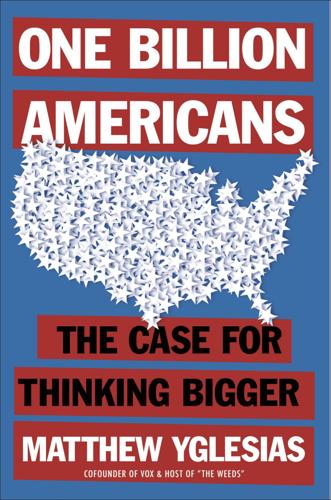
One Billion Americans: The Case for Thinking Bigger
by
Matthew Yglesias
Published 14 Sep 2020
The way it’s worked in Stockholm since 2006 is that if you want to drive into the central city, you need to pay a toll of between eleven and thirty-five Swedish kronor (about one to four US dollars, depending on the day’s exchange rate). The highest tolls are at the peak rush hour times, between 7:30 and 8:30 a.m. and between 4:00 and 5:30 p.m. A little bit earlier or a little bit later, and you pay a lower toll. Midday tolls charge the low eleven-kronor rate. Singapore, which was the first major city to implement a congestion charge, has a somewhat more complicated system. It uses cameras to record license plates that communicate with EZ-Pass-like devices that Singaporeans keep in their cars. The fees charged vary both by time of day, vehicle type, and by where exactly in the city the car is. Today broadly similar congestion-pricing systems are in place in London, Milan, and Oslo, and after an incredible amount of back-and-forth, it looks like New York City will move in this direction too.
…
But another is simply that if you have to be traveling the route of the Turin Metro, it’s an extremely convenient way to go with trains arriving every two minutes. DART (Dallas Area Rapid Transit) Light Rail headways, by contrast, are twelve to fifteen minutes at peak hours and twenty to thirty minutes off-peak. If congestion charges induced more people to ride DART, then DART could afford to run trains more frequently, which would greatly improve the quality of DART service without any incremental investment of funds. The point here is not to rail against the idea of increased transit funding, but simply to make the point that turning the debate over congestion pricing into a debate over transit funding is unnecessary—congestion pricing is a big win for transit riders regardless of what you do with the money.
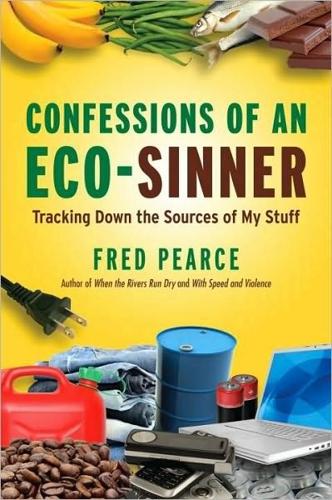
Confessions of an Eco-Sinner: Tracking Down the Sources of My Stuff
by
Fred Pearce
Published 30 Sep 2009
Reykjavik is pioneering hydrogen-powered public transport. In Germany, they are greening the roofs of their tower blocks to grow food, encourage birdlife, collect rainfall and cool the streets below. Toronto air-conditions its buildings in summer with cold water from the depths of Lake Ontario. My city, London, has its congestion charge to end gridlock and reduce its carbon footprint. New York plans to copy it. And the developing world isn’t far behind. The southern Brazilian city of Curitiba pioneered bus-only roads, and then recruited the city’s poor to recycle its garbage by offering groceries and bus passes in exchange.
…
abortions, Manila 154 Abramovitch, Roman 222 Acer 160, 163, 165 Africa Darfur droughts 335 desertification 108, 334–8 fertility rates 366 Homo sapiens evolution 328–9 land management 334 tourism 320–1 Agarwal, Ravi 291 Agnes 71–2 Agrocel 129, 131 AIDS clinics 73–4 demographic effects 72–3, 366 elderly carers 71–2, 73–4 societal effects 72–3 air freighting organic food 102 plant food imports 101, 111–12 air travel Buncefield fuel depot explosion 236 CO2 emissions 233, 236–7 Kyoto Protocol 236–7 reducing 357 short-haul flights 233 total emissions 306–7 UK airports 236–7 Akter, Nazma 143 Alaska caribou migration routes 217–20 climate changes 218–19 oil 214–20 Prudhoe Bay 214–20 racial issues 216–17 Albania, sage 57–8 Alexander, Christopher 347 allotments 342 aluminium environmental footprint 195–6 properties 191–2 recycling 199–200, 256, 285–6 Rio Tinto Aluminium 192–4 smelting 192, 194–7, 226 Ambrose, Stanley 327, 329–30 AMG Resources, steel recycling 256 Amnesty International 276 Anglo American, metal mining 203 antimony, China 205 apples, Kazakhstan 90–1 Aquaculture Certification Council 69 Aral Sea climate change 150 drying up 146–7 pollution 150 Archer Daniels Midland (ADM) cocoa 96 palm oil 78 Asda 142 Associated British Foods 80 Association for Responsible Mining 246–7 Asustek 161–4 auctions coffee 31–2 fish 49 Australia aluminium 192–8 Brisbane 303–4 coal 230 cotton 119–22 droughts 120 eco-projects 345 Gladstone 192–7 Kyoto Protocol 198 Melbourne 345 tea tree oil 59–60 Ausubel, Jesse 347–8 Awaj Foundation 141–2 Badger brewery see Hall and Woodhouse bananas 84, 86–9 Banc d’Arguin marine national park 50–2 fishing permits 51–2 WWF 51, 54 Bangladesh Awaj Foundation 141–2 banking system 68 child labour 143 corruption in 65 deltas 62–3, 66, 70 Dhaka 138–45, 345 family sizes 364 female emancipation 144–5 garment workshops 138–44 Khulna 63–4, 67–8 King prawns 62–70 land grabbing 64–5 wages 142–3 Bangladesh Frozen Food Exporters Association 67 barley malts, beer 38–9 Barry Callebaut 96 Bazalgette, Joseph 254 beaches, over-cleansing 263 Beckton sewage treatment works 254 beer barley malts 38–9 brewery closures 37 Hall and Woodhouse 37–9 herb 39 ingredients 38–9 local brews 36–7 summer ales 39 water for 38 yeasts 39 Bertrand, Nick 350 BHP Billiton 203 Bihar 289 bio-capacities 317–18 biodiesel, European Union laws 77 Biodiversity (formerly International Plant Genetic Resources Institute) 84 biodiversity loss, and sugar 83 biofuels 82, 355 burying CO2 with 357 and palm oil 77 threat of 341 bismuth 207 black tiger prawns see king prawns books carbon footprint 312–13 research for 313 Borneo, rainforest clearances 169, 172 Box, John 350 BP, targetneutral scheme 305 Brasilia 347 bread Lighthouse 42 processes 42 stoneground wholemeal flour 42–4 yeasts 42 breweries, closures 37 Brisbane 303–4 British Airways, carbon offsets 304–5 British Trust for Ornithology 262 Broadacre City, Lloyd Wright 346–7 Brown, Gordon, eco-cities 350 brownfield sites development of 351 wildlife 350–1 ‘built environment’ emissions CO2 emissions 242 domestic greenhouse gases 242–4 Buncefield fuel depot explosion 236 Bunting, Madeleine 365–6 Burden, Graham 122, 128 cabbages 89 Cafédirect coffee 27–30 and fairtrade philosophy 35 prices paid 31–2 CAI (Computer Aid International) 299–300 Caldwell, Jack 365 Cameron, David 45, 103, 359 Cameron, Ray 219–20 Cameroon cocoa 94–7 cotton 136 slash-and-burn agriculture 95 carbon footprint books 312–13 calculating 371 publishing 313 carbon offsets see also CO2 emissions aircraft emissions 303–4, 306–8 availability 304–5 British Airways 304–5 Climate Care 308, 310, 312 costs 308 definitions 305 forest maintenance 308–9 Kyoto Protocol 304, 311 Orbost estate 305–6 programme range 304–5 Sky 305 Carbon Trust 241–2 CarbonNeutral Company 305–6, 311 cardamom 58 Cargill cocoa 96 cotton 123 palm oil 78 Sun Valley chickens 78–9 caribou, migration routes 217–20 cement 240 cereals, for meat production 340 CETC (China Electronics Technology Group Corporation) 272 Chang, Mage 165 charities, textile recycling 266–9 cheese 40–1 Chen, David 162, 163–4 Cheng, Sammy 159, 163–4, 165, 371 Cheng, Shengchan 280–2 Cheung, Yan 284–5, 371 chickens free-range organic 39–40, 41 soya fed 79 child labour Bangladesh 143 computer recycling 288–90 cotton industry 124 India 124, 288–91 Ivory Coast 97 Pakistan 124 China see also Shenzhen; Suzhou aluminium recycling 285–6 antimony 205 computer industry 160–1, 165, 167 deforestation 171–2 ginger 58 mobile phones 271–2 one-child policy 364 paper recycling 280–2, 284–5 plastic bottle recycling 256–7, 282–3 power stations 358 Qiaotou 179 recycling ethos 282–4 small commodities markets 177–80 tin 205 traditional medicines 181–3 Yiwu 177–80 Zhangjiagang 169, 171 zinc 205 China Electronics Technology Group Corporation (CETC) 272 Chinatext, cotton 123 Chococo 99 chocolate see also cocoa fairtrade 98 gourmet 99 UK introduction 93–4 world-wide consumption 94 Christmas decorations 178 chromium, Kazakhstan 205 cinnamon 58 cities see London; mega-cities; urban farming city metabolism 239–40 civil wars 208–10 Clean Air – Cool Planet 305 Climate Care 308, 310, 312 climate changes Alaska 218–19 economic implications 358 Mount Toba eruption 326–7 cloves 58 CO2 emissions see also carbon offsets accumulation 316 air travel 233, 236–7 built environment’ 242–4 burying with biofuels 357 cement 240 coaches and buses 235 coal-fired power stations 228–9, 356 global reductions 370–1 global warming 354–5 Heathrow airport 235–6 targets 357 train travel 232–3 coaches and buses 235 coal-fired power stations 228, 356 CO2 emissions 228–9, 356 Drax 228–30 imports for 229–31 Coastal Development Partnership, Kulna 63 Cockerill, Ian 19 cocoa Archer Daniels Midland 96 Barry Callebaut 96 Cameroon 94–7 Cargill 96 fairtrade 98 history 93–4 Ivory Coast 97 middlemen 96–7 Nestlé 96 price crashes 96 processing 98 smallholdings 94–6 western discovery of 93 coffee auctions 31–2 Cafédirect 27–30 cooperatives 28–30 fairtrade 32–4 global trading 31 Kilimanjaro 27–9 organic farming 30 prices 28–9, 31–3 roasting 33–4 shipments to London 33 Starbucks 30 coltan see tantalum community projects fairtrade coffee 32 fairtrade cotton 131, 133–4 Compal 165–6 Computer Aid International (CAI) 299–300 computer components 160–4, 161–4 metals for 205, 207–8 computer recycling 288–91 child labour 288–90 copper recovery process 288–90 illegal imports 291–2 computers, reuse 297–300 Computers for Schools Kenya 297–300 conferences, ecological footprints 318 congestion charge, London 345 Congo 276–7 conservation, herbs 56 consumption, globalized 7–10 contraception Philippines 153–5 religious attitudes to 153–4, 364–5 cooking, energy expenditure 103 copper production 203, 204 recovery 288–90 Cory, household waste management 251–3, 261 cotton Australia 119–22, 124 Cameroon 136 Chinatext 123 Cragill 123 Dreyfus 123 Dunavant 123 fairtrade 128–30, 134 genetic modification 125, 132–3 India 124–5, 128–31, 133 Maral Overseas 133–4, 135–7 Marks & Spencer 122, 132 Pakistan 124 Plexus 123 Reinhart 123 social costs 126–7 spinning and knitting 136–7 USA 124–6 Uzbekistan 124, 147–8, 151 world production 123–4 Cotton Australia 120 Crossness sewage treatment works 254–5 Culham nuclear-fusion research reactor 226 Cure, Lynne 251 Dairy Crest 40 dairy industry, depression of 40 Dar es Salaam innovative enterprises 278–9 Milonge brothers 264–7 mitumba 264–7 Phones for Africa 278 textiles recycling 266–9 wildlife sculptures 278–9 debt slavery, Mauritania 186 deforestation consequences, China 171–2 Delhi computer recycling 292 LNG transport 345 Mandoli 287–92 Dell computers 160, 163, 165, 166 demography see also population growth AIDS 72–3 and migration 367–8 desertification 334–5 reversals 108, 335–8 Dhaka garment workshops 138–45 LNG transport 345 Dickens, Charles, Our Mutual Friend 253–4 domestic environment greenhouse gases 242–4 zero-carbon homes 244 domestic recycling 251 Drax coal-fired power station 228–30 Dreyfus, cotton 123 Driefontein goldmine 15–18 droughts Australia 120 Darfur 335 Dubai electronic waste trading 291 gold smuggling 21 mitumba trading 266 dump, burn and offset 303–4 Dunavant, cotton 123 Duncan, Anne 194 Dyson, Tim 365 e–waste brokers, Environment Agency 296 Earth, ecological statistics 315 eco-efficiency 316 town planning 349 eco-projects mega-cities 345 urban transport 345 ecological footprints see also CO2 emissions conferences 318 European 317 global 317–18 Homo sapiens 333 urban 314–15 Edwards, Rob 305 elderly carers, South Africa 71–2, 73–4 electricity see also power stations aluminium smelting 192, 196–7, 199, 226 cooking 103 domestic use 242 from incinerators 261 ‘green tariffs’ 311 imported 227 National Grid 226–7 renewable sources 227–8 world–wide consumption 315–16 electronic waste European Union directive 277, 293–4, 296 landfill 287 metals recovery 288–92 UK recycling 293–6 Ely 184–7 EMR (European Metal Recycling) 295 endangered species, traditional medicines 181–3 energy intensive production, agribusiness 102–3 Environment Agency, e-waste brokers 296 Environment and Development, International Institute for 103, 339 environmental footprint mega-cities 344–5 personal contributions 242–4 public services 241–2 environmental impact aluminium smelting 195–6 metal mining 203–4 oil extraction 220–2 environmental protectionism 359 Essissima, Joseph 94–5 ethical trading, supermarkets 70 Europe fertility rates 366–7 global footprint 317 European Metal Recycling (EMR) 295 European Union beaches directive 263 biofuel additives 77 electronic waste directive 277, 293–4, 296 fishing rights 53 sugar beet 81–2 waste export ban 258–9 Eurostar 232–3 Evans, Dicky 104 evolution, Homo sapiens 328–31 Excel Crop Care, G.
…
Shroff 131–2 extremism, humanity 5 fairtrade 371 brands 32 chocolate 98 coffee 34 community projects 32 cotton 128–30, 134–5 jewellery 245–7 Fairtrade Foundation 32, 103–4 famines, inefficient dealing with 340 farming see also urban farming energy intensive production 102–3 livestock 211 Nigeria 335–6 water usage 341 favelas Brasilia 347 Rio 114–16, 349 women’s power in 114–16 female emancipation Bangladesh 144–5 population growth 369–70 fertility rates Africa 366 Bangladesh 364 China 364 Europe 366–7 global decline 369 Iran 364 Muslim states 366 fertilizer, from sewage 255 fishing depletion of natural stocks 49, 50, 51, 53 fresh-fish auctions 49 Mauritania 50–2, 53–4 poaching 51–2 preference for line 54 Senegal 52–3, 54 ‘sustainable’ 53 trawlers vs pirogues 52 world-wide 49–50 flour stoneground wholemeal 42–4 wheat for 43–4 Fonebak 277 food see also plant foods cooking 103 imports 100–2 ‘food patriotism’, David Cameron 45, 103, 359 food production, and population growth 340 Forest Stewardship Council approved paper 312 tropical hardwoods 175 Forest Trends 170, 175 forests as carbon offsets 309 maintenance 308–9 Foundation for Adolescent Development 154 Fox, Richard, Homegrown 111 Foxconn, mobile phones 271–2 Friends of the Earth 101, 350 Frison, Emile 84 fruit pickers, immigrant 46–7 fuels, greenest 355–7 Gala, coffee roasting 33–4 Gandhi, Mahatma 360 Gap 141, 142 garlic 89 garment workshops Dhaka 138–44 H&M 140 gas domestic use 242 power stations 227 Siberia 223–5 storage projects 227 gas power, public transport 345 Gazprom 222–4 UK takeovers by 224 gemstones, finance for corrupt regimes 208–9 genetic modification bananas 88–9 cotton 125, 132–3 genetic resources, plant foods 89–92 ginger, China 58 Girardet, Herbert 239–40 Gladstone aluminium smelting 193–7 ecology 192–3 power station 193, 196–7 glass, recycling 255–6 global footprints comparative 317–18 world-wide 317 global warming CO2 emissions 354–5 threat of 354–5 globalization coffee trading 31 consumption 7–10 gold certificates of origin 247 ethically sourced 245–7 extraction process 18 in history 20–1 hoarding 21–2, 134 origins 15 power of 21–2 prices 19, 21 smuggling 21 South Africa 14–22, 205 gold mining access shafts 14–15 Fanakalo language 17 quartz containing 22 recruitment for 17–18 safety 16–17 smuggling 17 Gold Standard 21 Goodall, Chris, How to Live a Low-Carbon Life 244 Gottmann, Jean 351 gourmet chocolate 99 grain growing, water for 211 green beans food miles issue 111–12 Homegrown 104–6, 108–11 hygiene 107 Machakos 104–13 Marks & Spencer 105, 107, 109 smallholdings 104–6, 109 traceability 107, 112–13 Green Gold 246 greenhouse gases see CO2 emissions; nitrogen oxides Grimsby, fresh-fish auctions 49 Grosvenor, paper reprocessing 257–60 Gujarat Agrocel 129–31 organic cotton 129–32 water supplies 130–1 H&M 140, 142 hafnium 208 Hall, Peter 347, 349 Hall and Woodhouse brewery 37–9 Hammond, Geoff 317 Hanson, Jim 355 Harris, Frances 336 Haupt, Melville 19 heat-island effect 348 Heathrow airport CO2 emissions 235–7 fuel supplies 236 land use efficiency 237–8 noise issues 238 HelpAge International 72 herbs in beers 39 conservation 56 oregano 55–6 sage 57–8 thyme 56 Hewitt, Geoff 119–21 Hewlett-Packard 160, 163, 165 Hickey, Dan 120 Hindu philanthropy 133–4 ‘hobbits’ (Homo floresiensis) 325, 328, 331 extinction 332 Homegrown, green beans 104–6, 108–11 hominids see Homo erectus; Homo floresiensis; Homo sapiens; Neanderthals Homo erectus 325, 327, 331 extinction 332 Homo floresiensis (‘hobbits’) 325, 328, 331 extinction 332 Homo sapiens African evolution 328–9 artistic evolution 330–1 common characteristics 5–6 conspicuous consumption 333 cultural evolution 329–30 ecological footprint 333 future of 372 geographical spread 331–2 ice age survival 332–3 social evolution 330 survival skills 332 urbanization 344 virtual extinction 325, 328–9 volcanic winters 325, 328–30, 331 household waste see also sewage collections 251 food growing on 341 landfill sites 261 Thames barge transport 252–3 transfer stations 251–2 How to Live a Low-Carbon Life, Chris Goodall 244 human rights see also child labour Mauritania 184–5 Uzbekistan 147, 151–2 humanity, extremism 5 Humphries, Rick 193–4, 197–8 Hurn airport 237–8 hydroponics 342 IBM 163, 165 ice ages, Homo sapiens’ survival 332–3 immigrant fruit pickers conditions 46–7 pay 47 imports air miles 101 carbon footprints 101–2 plant foods 100–2 incinerators electricity generation from 261 pollution from 260–1 India Bihar 289 cardamom 58 child labour 124 computer recycling 288–92 cotton 124–5, 129–31, 133–5 Delhi 287–92 gold hoarding 134 Hindu philanthropy 133–4 Maral Overseas 133–4, 133–5, 135–7 Toxics Link 290–1 water shortages 130–1, 133 indium, uses 207 Indonesia palm oil 76–7 rainforest clearances 172–3 innovative enterprises, Tanzania 278–9 Intergovernmental Panel on Climate Change (IPCC) 354–5 International Crisis Group 151 International Institute for Environment and Development 103, 339 International Institute for Tropical Agriculture 95, 335 Iqbal Ahmed see also king prawns business empire 61–2, 68–70 Iran, family sizes 364 iron see also steel extraction 205 Italy, rocket 56, 90 Ivory Coast, cocoa 97 JCPenney 141 jewellery, fairtrade 245–7 Joynson-Hicks, Paul, Phones for Africa 277–8 just-in-time assembly 166 retailing 106 Kazakhstan apples 90–1 chromium 205 Keen, David 209–10 Kenya coffee 27–34 Computers for Schools 297–300 desertification reversals 108, 338–9 farm outputs 338–9 German presence in 34–5 green beans 104–13 Khosa, Veronica, AIDS clinics 73–4 Khulna, king prawn industry 63–4, 67–8 Kilimanjaro coffee 27–30 Kilimanjaro Native Cooperative Union (KNCU) 30–3 king prawns certification scheme needed 69 fry hatcheries 65–6 introduction to UK 62 landowner threats 64–5 middlemen 66–8 organic farming 64 processing plants 67 Seamark 62, 68 sustainability 69–70 Kinyua, Patrick 106–7 Kirkham, Ruth 40 Klor, Babubhai 131 KNCU (Kilimanjaro Native Cooperative Union) 30–3 Kombe, Jackson 29–30 Kyoto Protocol air travel 236–7 Australia 198 carbon offsets 304, 311 Ministry of Defence 242 Lagavulin, Islay single malt Scotch 44–5 Lamb, Harriet 103–4 land, multiple functions for 316 landfill sites heavy metals 287 household waste 261 Lea Valley 349 Leach, Matthew 260 Letterewe, Scotland 321–2 Lighthouse bakery 42 line-fishing 54 Lister, John 43–4 livestock farming 211 Lloyd Wright, Frank, Broadacre City 346–7 local food 36–7, 45 Logitech 160–1 London congestion charge 345 greenhouse gases 242 household waste 251–3, 261 Lea Valley 349 materials recycling 255–6 MI6 headquarters 241 public services 241–2 sewage 23–4, 254, 261–3 Wandsworth Prison 241 water ring-main 241 London Wildlife Trust 350 Ma, Cheng Liang 352–3 McDonald’s 79, 102–3 Machakos desertification reversals 338–9 green beans from 104–13 Macharia, John 108–9 Madagascar, vanilla 58–9 Mahesh, Priti 290–1 Makinga, Norman 297–9 Malaysia, palm oil 76–7 malnutrition 340 Mandela, Nelson 320 Mandoli, computer recycling 288–91 Manila abortions 154 contraception 153–5 Foundation for Adolescent Development 154 prostitution 153, 155 manures, changes to natural 335–6 Marakele wildlife park 320 Maral Overseas, cotton 133–4, 135–7 margarine from palm oil 76 from whale oil 75 marine national parks, Banc d’Arguin 50–2 Marks & Spencer Blue Horizon jeans 145 cotton 122, 132, 142, 145 fairtrade coffee 32 fairtrade cotton 128, 134–5 green bean imports 105, 107, 109 materials ‘rucksacks’ 204–5 Mauritania debt slavery 186 fishing 50–4 racial structure 185–6 slavery 184–5 meat production 340 mega-cities 344 absorption of urban centres 351–3 eco-projects 345 environmental footprint 344–5 recycling mantra, necessity for 346 wildlife in 349–50 Melbourne, eco-projects 345 Melgar, Junice 154–5 metals see also aluminium; gold antimony 205 bismuth 207 chromium 205 copper 203, 204 global corporations 203 hafnium 208 indium 207 iron/steel 205 materials ‘rucksacks’ 204–5 mining footprint 203–4 mobile phones 273–5 palladium 207 platinum 205, 207 recycling 210, 256, 288, 290–1, 295 rising demands 206 ruthenium 207–8 tantalum 273–6 terbium 208 tin 205, 276–7 waste ores 204–5 world demand for 202–3 zinc 205 Mgase, Jacob Rumisha 28–9 middlemen traders cocoa 96–7 king prawns 66–8 Milonge, Boniface 264 Milonge, Geoffrey market sales 266–7 mitumba imports 264–5 Urafiki market 267–8 Milton Keynes 347 Ministry of Defence, Kyoto Protocol 242 mitumba Dar es Salaam 264–7 Dubai 266 mobile phones assembly 271–2 Foxconn 271–2 Nokia 271, 272 Phones for Africa 277–8 reuse 277–8 toxic chemicals in 272–5 world-wide usage 270–1 money laundering, International Crisis Group 151 Morocco, phosphates 206 Morris, Tim 37–9 Mortimore, Michael 338 Moshi coffee auctions 31–2 curing plant 33 motherboards 161–4 motor cars catalytic converters 207 and urban design 346–7 Motorola 276 Murray, Craig 147–8 Musili, Tom, Computers for Schools Kenya 297–300 Muslim states, fertility rates 366 Musyoki, Jacob 104–6, 113 National Grid 226–7 natural resources, consumption rates 314–15 Neanderthals 325, 328 extinction 332 and Homo sapiens 329 Nellie, Flower-stall Girl 153, 155, 371 Nestlé cocoa 96 fairtrade coffee 32 New Guinea, tropical hardwoods 170, 171 Nicholson-Lord, David 348 Niemeijer, David 337, 339 Niger, reversing desertification 337 Nigeria, crop/livestock integration 335–6 Nine Dragons, paper recycling 284–5 nitrogen oxides, ozone production 307 NKD 143 Nokia, mobile phones 271, 272, 276 Novelis, aluminium recycling 199–200 Noyabr’sk, oilfields 221–2 nuclear power stations 227, 355–6 waste from 356 nuclear-fusion research reactors, Culham 226 offices, ecological footprints 315 oil Alaska 215–20 Siberia 220–2 Orbost, carbon offsets 305–6 oregano 55–6 organic farming bananas 87 coffee 30 crop/livestock integration 336 king prawns 64 Nigeria 335–6 organic food, air freighted 102 overconsumption 360 Padulosi, Stefano 56, 90–2 Pakistan, cotton 124 palladium, source 207 palm oil 75–8 and biofuels 77 rainforest clearances for 76–7 paper burning 260 Chinese recycling 280–2, 284–5 Forest Stewardship Council approved 312 manufacture 260 recycling 257–60 sustainable sources 312 Papua New Guinea, rainforest clearances 169, 173–5 pathogen risks, urban farming 343 Paul Reinhart 123 peanuts 89–90 Pendolinos 233 people smuggling, to Canary Islands 55 personal footprints 4–5, 242–4, 318 city metabolism 240 pesticides banana diseases 87 cotton 124–5, 130 natural 87, 130 Pethick, John 262 Philippines see Manila Phones for Africa, Tanzania 278 phosphates fertilizers 205–6 Morocco 206 phthalates, mobile phones 273 pineapples 89 pistachios 91 plankton, carbon offsets 310 plant foods see also foods by name air-miles issues 111–12 ancient varieties 89–90 benefits of local 45 carbon footprint 101–2 energy intensive production 102–3 extinctions 84 genetic resources 89–92 mutations 85–6 seasonality 100, 105 UK imports 100–2, 111–12 wild 55–60, 89–90 plastic bottles (PET), recycling 256–7, 282–3 platinum South Africa 205 uses for 207 Plexus, cotton 123 plywood Chinese originated 175–6 from illegal logging 169, 174–5 poaching, fisheries 51–2 pollution imprint of 333 incinerators 260–1 Siberia 221–2 pomegranates, Turkmenistan 91–2 population growth average family size 361, 362 family-planning policies 364–5 female attitudes 365–6 female emancipation 369–70 fertility rates 366–7 and food production 340 limiting 360–1 longevity 362–3 mortality rates 366, 367 potential diminution 363–4 stabilization 368–9 twentieth century 361–2 power stations China 358 coal-fired 228–31, 356 natural gas 227 nuclear 227, 355–6 tidal 355 wave 355 wind 355 Poynton, Scott 175, 176 prawns see king prawns prostitution, Manila 153, 155 Prudhoe Bay 214–20 public services, environmental footprint 241–2 public transport, gas powered 345 publishing, carbon footprint 313 Qiaotou 179 rainforest clearances Borneo 172 consequences 77–8 illegal logging 170–1 Indonesia 172–3 logging concessions 173–4 for palm oil 76–7 Papua New Guinea 170, 173–5 slash-and-burn agriculture 95 for soya beans 78 ‘sustainability’ audits 174 tropical hardwoods 169–70, 175 recycling 10 see also reuse aluminium 199–201, 256, 285–6 centres 255 computers 288–91 domestic 251 economics 210 electronic waste 294–5 ethos 282–4 glass 255–6 metals 210, 256, 288, 290–1, 295 paper 257–60 plastic bottles 256–7 steel 210, 256 textiles 264–9 Rees, William 315 Register, Roger 347 Rehfish, Mark 262 Renner, Michael 209 retailing just-in-time 106 traceability 107 reuse computers 297–300 mobile phones 277–8 Rhine, damaged ecology 321 Rimbunan Hijau, logging concessions 173–4 Rio de Janiero favelas 114–16, 349 Rosinha 114 Rio Tinto, metal mining 203 Rio Tinto Aluminium environmental claims 198 Gladstone 192–4 Tasmania 197 rivers, wildlife in clean 262–3 Rivoli, Pietra 269 Roberts, Tony 299–300 rocket, Italian 56, 90 Rosinha, Women’s Association of 114–16 Roszak, Theodore 368 Royal Swaziland Sugar Corporation 80–1 rubbish see household waste Russia coal exports 229–30 gas 224–5 oil 220–2 Siberia 220–1 ruthenium 207–8 S & A Produce, strawberry pickers 46–8 sage, Albanian 57–8 Sahara, efforts to reverse spread 334 Sainsbury’s 47 Salam, M.
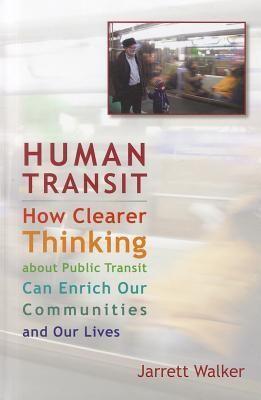
Human Transit: How Clearer Thinking About Public Transit Can Enrich Our Communities and Our Lives
by
Jarrett Walker
Published 22 Dec 2011
A similar calculation can be made for private cars. While transit riders pay fares, motorists pay a range of fees or taxes tied directly to their driving (distinct from other taxes that people pay as citizens). All motorists pay for vehicle registration and taxes added to the cost of fuel. Some urban motorists also pay tolls or congestion charges to use high-demand facilities. All of those charges add up to the total “user fee” of driving, just as fares are the user fee of transit. If the true costs of a mode exceed the user fees collected J. Walker, Human Transit: How Clearer Thinking about Public Transit Can Enrich 135 Our Communities and Our Lives, DOI 10.5822/978-1-61091-174-0_11, © 2012 Jarrett Walker 136 | HUMAN TRANSIT for it, that mode is being subsidized, usually by taxpayers in general, and in that case it is fair to ask why.
…
See also Molonglo C-Plan and, 202–204, 203f Frequent Networks and, 92–93 Spatial Plan of 2004 and, 197, 198f Y-Plan and, 197–199, 198f Capacity, 128, 138 Captive, connotations of word, 44 Captive riders, 43 Car ownership, 133–134, 135–137 Carpooling, 14, 15, 16 Carsharing, 15, 16 Categories, spectra vs., 41–42 237 238 | INDEX Chapel Hill, North Carolina, 137 Chapman, Tracy, 97 Choice (discretionary) riders, 42–43 Chokepoints, 50–52, 51f Circuitousness, 48, 48f, 49 Civil rights, access and, 14 Civility, 29–30 Clarity, legibility and, 31–32 Clock headways, 164 Collaboration, 14 Commuter rail. See Rail transit Complexity, 144, 153–158 Comprehensive planning, 217 Conductors, 78 Congestion, 101, 210–211 Congestion charges, 135 Connection penalties, 160 Connection points, 176–177, 190 Connections costs of avoidance, 158–161 fares and, 141–142 frequency and, 149–153, 149f, 151f, 152t geometrically required, 159, 174 grid, 167–174, 168f, 169f, 170f, 172f, 173f networks without, 147–148 overview of, 147–148 politically required, 174–175 pulse, 164–165, 165f, 166f simplicity and, 153–158 smartcards and, 140 technologically required, 175 transit-oriented development and, 176–179, 179f Connective Option, 150–153, 151f, 152t Connectivity, 28, 34 Connotations, 44–46 Contactless payments, 139 Corvallis, Oregon, 161 Costs.
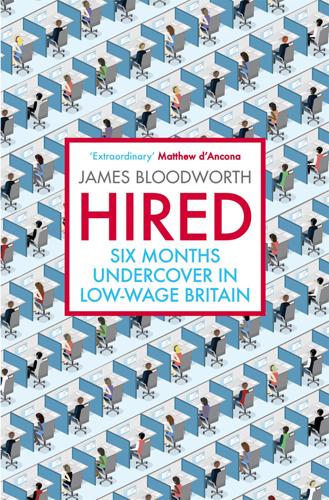
Hired: Six Months Undercover in Low-Wage Britain
by
James Bloodworth
Published 1 Mar 2018
James Farrar summed up the situation well when he told me that TFL were ‘licensing like confetti from nine till five, and then from five till nine they’re sending out their enforcement officers to harangue you for what amounts to symptoms of overcrowding’. You could deduct another £100 a month for the fines, and that was if you were careful. Both TFL and Uber were also pushing for drivers to shoulder the cost of the London Congestion Charge at some point in the future. The extra data you used on your phone added another £5 a week and the respective annual TFL inspection and biannual MOT cost a further £200 altogether over the year. The biggest lump sum of cash disappeared on renting a car. The Ford Focus I was driving cost me £201.77 a week, or £10,492 a year.
…
.: These Poor Hands 23, 149, 190 courier firms 211, 215, 217, 223, 236, 244–7, 250, 256, 257 Cwm, Wales 147, 148, 187, 190, 195, 196, 197 Cwmbran, Wales 143 Daily Express 124–5 Daily Mail 66, 134, 188 Dan (bicycle courier) 248, 249 Dangerfield, George 72 Davies, Idris 148–9 Gwalia Deserta (Wasteland of Wales) 148 ‘The Angry Summer’ 174 debt 62, 69, 146, 151, 153 Deliveroo 215, 217, 223, 250, 256, 257 democratic socialists 192 Department for Work and Pensions 133 Dickens, Charles 29, 205, 210, 249; Hard Times 138–9 Disclosure and Barring Service (DBS) 88–90, 109–10, 214 Dorothy (housemate of JB) 203, 204–5 DriveNow 217 Dropit 217 Eastern Europe, migrant workers from 11, 13, 15, 21, 24, 26–7, 30, 32, 33, 34, 45, 57, 61–2, 75, 114–16, 128–9, 154, 203–4, 260–1 see also under individual nation name Ebbw Vale, Wales 147, 149, 154; legacy of de-industrialisation in 187–200 Elborough, Travis 93 emergency housing 96 employment agencies 1, 16, 19, 20, 23, 37, 38, 39, 40, 41, 42, 43, 56, 65–6, 70, 72, 73, 82, 86, 127, 130, 158, 189, 194 see also under individual agency name Employment and Support Allowance (ESA) 248 employment contracts/classification: Amazon 19–20, 53, 58 care sector 87–8, 107–8, 116 Uber 214–15, 222, 229–35, 243, 245, 250–2, 257 zero-hours see zero-hours contracts employment tribunals 38, 229–30, 243–4 English seaside, debauchery and 92–3 Enterprise Rent-A-Car 214 ESOL (English for Speakers of Other Languages) programmes 115–16 European Economic Community (EEC) 195 European Referendum (2016) 61, 195–6 Evening Standard 208, 241 Express & Star 59–60 Fabian Society 109 Farrar, James 229–31, 232, 233, 234, 236, 238, 240, 241–2, 250, 254, 255–6 Fellows of the Academies of Management 17 Fernie, Sue 182 financial crisis (2008) 1, 2, 45, 125, 195, 209 Flash (former miner) 165–8, 170, 171–2, 174, 175, 176–8, 179, 188, 196 Fleet News 246 Foot, Michael 149 football 56, 58, 92, 94, 97, 98, 126, 135, 169 fruit picking 61 FTSE 123, 262 Gag Mag 122 Gallagher, Patrick 246 Gary (homeless man, Blackpool) 96–104, 105 Gaz (Gag Mag seller, Blackpool) 122 GDP 146 General Election (2015) 109 General Strike (1926) 148, 149, 173 gentrification 219 Geoff (former miner) 189, 190, 191, 193 ‘gig’ economy 2, 208–10, 217–18, 232, 236, 242, 243–4, 248, 249–50, 252, 257 see also Uber Gissing, George: New Grub Street 64 GMB union 36 grammar schools 261 Guardian 5, 235 Hamstead Colliery, Great Barr 169 Hazel (home carer) 110–11, 114, 115, 116, 117, 119 Heller, Joseph: Catch-22 235–6 Hemel Hempstead 54, 70 Henley, William Ernest: ‘England, My England’ vii Hoggart, Richard: The Uses of Literacy 45 home care worker (domiciliary care worker): Disclosure and Barring Service (DBS) checks 88–90, 109–10 employment contracts 87–8, 107–8, 116, 118, 120 length of home care visits 108–9, 110 local authority budget cuts and 107–10 MAR (Medication Administration Record) sheets 114, 115 migrant workers as 114–16 negligent 86–7 privatisation of social care and 106–8, 109 recruitment 82–4 ‘shadowing’ process 88, 109–10 societal view of 106 staffing crisis 85–6, 119 suicide rate among 100 typical day/workload 110–14, 118 unions and 88 view job as vocation 86–7 wages/pay 107–8, 117, 118–19, 159 Home Instead 119 homelessness 95–105, 138, 187, 208 hostels 95, 96, 101, 102 housing/accommodation: Amazon workers, Rugeley 20–2, 24–6 Blackpool 80, 124, 137–8 buy-to-let housing market 24 emergency housing 96 homelessness and 95, 96, 101, 102, 137–8 hostels 95, 96, 101, 102 inability to buy 62 landlords and 12, 21, 24, 39, 67, 69, 95–6, 137–8, 164, 204, 206, 258 London 203–8 migrant workers and 20–2, 24–6, 197–8 social housing 62, 206 Swansea 124, 150 housing benefit 96, 137–8, 248 immigration 26–7, 61, 115–16, 128–9, 144, 193, 197–9, 236, 259–61 see also migrant workers indeed.co.uk 83–4 independent contractors 209, 248, 251–2 Independent Workers Union of Great Britain (IWGB) 230, 257 inequality 18, 73, 123, 125, 207–8, 226, 238, 262, 263 inflation 2, 122 job centres 19, 96, 133–6, 139–40, 156, 158 Joe (housemate of JB) 22 John Lewis 23, 83 Joseph Rowntree Foundation 70, 159 June (call centre employee) 181–2, 183, 184 Kalanick, Travis 215, 228, 229, 233, 235 Kelly, Kath 66 Khan, Sadiq 256 Koestler, Arthur: The God that Failed 228 Labour Party 7, 57, 59, 61, 109, 144, 149, 150, 173, 174 Ladbroke Road, Notting Hill, London 219 Lamb, Norman 109 Lancashire Evening Post 104–5 landlords, private 12, 21, 24, 39, 67, 69, 95–6, 137–8, 164, 204, 206, 258 Lea Hall Colliery, Staffordshire 31–2, 54, 55, 56, 57 Lea Hall Miners’ Social Club, Staffordshire 55, 56, 74 Len (step-grandfather of JB) 143–4 Lili (London) 203–4 living wage 1, 85, 160, 246 Lloyd George, David 172 loan sharks 151, 156 local councils 104–5, 164 London 201–57 accommodation/housing in 65, 203–8, 218 gentrification in 219 ‘gig’ economy in 208–57, 263 homelessness in 95 migrant labour in 205–6, 213, 239 wealth divide in 207–8, 238 London Congestion Charge 254 London Courier Emergency Fund (LCEF) 247 London Metropolitan Police 90 London, Jack 205 low-skilled jobs, UK economy creation of 153 Lydia (Amazon employee) 70 Macmillan, Harold 3 manufacturing jobs, disappearance of 59, 139 Marine Colliery, Cwm, Wales 190 Mayhew, Henry 4, 205 McDonald’s 52, 68, 83 Merkel, Angela 196 Metcalf, David 182 middle-class 6, 39, 51, 67, 68, 69, 72–3, 74, 75, 149, 178, 205, 258, 259, 260, 262, 263 migrant labour: Amazon use of 11, 12, 13, 15, 20, 21, 22–7, 30, 32, 33, 34, 44, 45, 46, 51, 53, 57, 61–2, 65, 71–5, 258, 260–1 care home workers 114–16 ‘gig’ economy and 203–6, 213, 239 restaurant workers 154 retail sector and 128–9 Miliband, Ed 109 mining see coal mining Miners’ Federation of Great Britain (MFGB) 173 Miners’ Strike (1984–5) 3, 174–7 minimum wage 1, 7, 55, 62, 84, 107, 108, 118, 135, 155, 159, 173, 189–90, 209, 212, 235, 236, 245, 250, 262 Morecambe, Lancashire 137–8 Morgan family 156–8 Morgan, Huw: How Green Was My Valley 147 Moyer-Lee, Jason 257 National Coal Board (NCB) 54, 170, 171 National Institute for Health and Care Excellence (NICE) 108 National Union of Miners (NUM) 174, 176 New York Times 222 NHS (National Health Service) 106, 108, 247 Nirmal (Amazon employee) 45–6, 51 Norbert (Amazon employee) 71–5 nostalgia 3, 60, 93–4, 216 Nottingham 2, 151–2 objectivism 228 oil crisis (1973) 122–3 Oliver, Jamie 154 Orwell, George 56, 169 Palmer, William 29 pay see wages and under individual job title and employer name payday loans 156 PayPal 216 Pimlico Plumbers 251–2 platform capitalism 215 PMP Recruitment 19, 189–90 Poland, migrant workers from 128–9, 130, 135, 197–8 ‘poor, the’ 145 Port Talbot, Wales 166, 176, 190, 196 ‘post-truth’ discourse 199 ‘post-work’ world 165 poverty: Blackpool and 132, 137 class and 4 darkness and 96 diet/weight and 137 ease of slipping into 5 Eastern Europe and 26 monthly salary and 156 as a moral failing 188–9 press treatment of 66–7 time and 67 working poor living in 194 Preston, Lancashire 100, 105, 138–9 private school system 123 progressive thought 262 Public Accounts Committee (PAC) 107 Putin, Vladimir 71 Rand, Ayn 228–9, 235, 236; The Fountainhead 228, 229 recession (2008) 1, 45, 104, 121, 125, 156 ‘regeneration’ 55, 60–1, 146 rent-to-own 157–8 retirement, working in 58–9 Reve, Gerard: The Evenings 160 Robin (Cwm) 196, 197 Rochelle (home care worker) 117–19 Romania, migrant workers from 11, 12, 13, 15, 20, 21, 22–7, 32, 44, 46, 51, 53, 61, 65, 71–5, 203, 206, 258 Ron (former miner) 170, 195 Royal London 59 Royal London pub, Wolverhampton 71 Royal Mail 151 Rugeley, Staffordshire 28–35 Amazon distribution centre in 11–76, 79, 86, 119, 127, 128, 159, 258 decline of coal mining industry in 31–2, 54–6, 57, 169 disappearance of manufacturing jobs from 54–63 high street 28–35 immigration and 30–4, 193–4 Tesco and 58–9, 62–3 Scargill, Arthur 175 scientific management theories 17 Scotland Yard 90 self-employment: ’gig’ economy and 214–15, 222, 229–30, 234, 243–4, 245, 246, 249, 250–1 increase in numbers of workers 2, 209 ‘independent contractors’ and 209, 248, 251–2 Selwyn (former miner) 175, 178, 179, 263–4 Senghenydd, Glamorgan pit explosion (1913) 169–70 Shelter 104 Shirebrook Colliery, Derbyshire 55 Shu, William 250 Silicon Valley, California 210, 232 Sillitoe, Alan: Saturday Night and Sunday Morning 2, 3, 94 Sky Sports News 126 social democracy 3, 263 social housing 62, 206 socialism 7, 56, 131, 144, 148, 149, 173 social mobility 58, 199, 261 South Wales Miners’ Museum, Afan Argoed 166, 196 South Wales Valleys 141–200 accommodation in 150, 197 Amazon in 145–6 beauty of 148 call centre jobs in 153–64, 180–6 coal industry and 143–4, 147–9, 165–79, 180, 188, 189, 190–1, 193, 195, 196 immigration and 197–9 JB’s family history and 143–4 legacy of de-industrialisation in 187–200 nostalgia and 147 radical history of 149–50 see also under individual place name ‘spice’ 95 Sports Direct 55 squatting 96, 99 steel industry 176, 180, 188, 189, 190, 196–7 Steven (housemate of JB) 124, 126, 127–31 Stoke-on-Trent 58–9 suicide 99–100 Sunday Times 175 ‘Best Companies to Work For’ 154 Rich List 125 Swansea, Wales 145–6, 150–2, 154–64, 176, 178, 197, 205 Tata Steel 190 tax 65, 69, 70, 118, 146, 158, 159, 163, 164, 212, 229, 244, 246, 248, 251, 255 Taylor, Frederick W.: The Principles of Scientific Management 17 Tesco 35, 57, 58–9, 62–3 Thatcher, Margaret 122, 123, 146, 174–5, 193, 207, 263–4 Thorn Automation 57 Thorn EMI 59 trade unions: Amazon and 36 B&M and 130, 131 call centres and 160, 181, 184–5, 186 care sector and 88 coal industry decline and 55–6, 173, 174, 263–4 decline of 2, 3, 35 ‘gig’ economy and 230, 257, 261 objectivism and 228 oil crisis (1973) and 122 Thatcher and 123, 174, 193, 263–4 Wales and 144, 149 see also under individual union name Trades Union Congress (TUC) 173 transgender people 40–1 Transline Group 19, 20, 37, 38, 39, 40, 41, 43, 65–6, 86 Transport for London (TFL) 211, 212–13, 214, 233, 254, 256 Tredegar Workmen’s Medical Aid Society 247 Trefil, Wales 149 Trump, Donald 7 Uber 207, 211–57 ‘account status’ 221 clocking in at 218 corporation tax and 229 customers 221, 222, 226–7, 237–41, 244, 257 driver costs/expenses 214, 217, 233, 241, 246, 253–5 driver employment classification/contract 214–15, 222, 229–35, 243, 245, 250–2, 257 driver hours 221, 226, 230, 232, 233, 236, 246, 253, 255 driver numbers 211–13, 233–5 driver wages/pay 212, 218, 221, 229–30, 235, 236, 237, 240, 241, 244, 246, 252–5 employment tribunal against (2016) 229–34 flexibility of working for 213–14, 218, 230–3, 248, 250–1 James Farrar and see Farrar, James migrant labour and 213, 236 ‘Onboarding’ class 224–5, 238, 241, 256 opposition to 215–17 philosophy of 228–9, 235, 236 psychological inducements for drivers 222–3 rating system 225–7, 232, 238, 239, 243, 253 rejecting/accepting jobs 221–2, 224–5 ride process 219–21 surge pricing 237, 238, 253 TFL and 211, 212–13, 214, 233, 254, 256 Travis Kalanick and see Kalanick, Travis UberEATS 256 UberPOOL 225, 240–2, 253, 255–6 UberX 212, 225, 240, 241, 255 VAT and 229 vehicle requirements 214 unemployment 2, 32, 36, 62, 121–3, 132, 138, 148, 157, 172, 178, 179, 189–95, 199, 218 Unison 88, 108 Unite 55, 160 United Private Hire Drivers 230, 257 university education 3, 6, 61, 62, 123, 150–1, 152, 153–4 USDAW 130–1 Vettesse, Tony 138 Vicky (care sector supervisor) 86, 87 Wade, Alan 121, 123–4 wages: Amazon 18, 19, 37–9, 42–3, 65–6, 68, 69, 70, 159 call centre 155–6, 158–60, 164, 180 care sector 107–8, 117, 118–19, 159 living wage 1, 85, 160, 246 minimum wage 1, 7, 55, 62, 84, 107, 108, 118, 135, 155, 159, 173, 189–90, 209, 212, 235, 236, 245, 250, 262 Uber 212, 218, 221, 229–30, 235, 236, 237, 240, 241, 244, 246, 252–5 wage stagnation 2 see also under individual employer, job and sector name Wealth and Assets Survey 207–8 wealth inequality 18, 73, 123, 125, 207–8, 238 Wells, H.
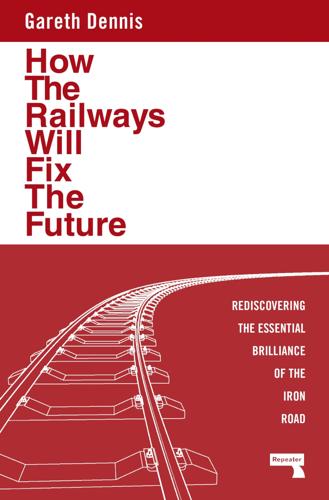
How the Railways Will Fix the Future: Rediscovering the Essential Brilliance of the Iron Road
by
Gareth Dennis
Published 12 Nov 2024
In the case of many gadgetbahn solutions, enormous effort is dedicated to proving how much better the world would be if we only built a new transport system, such as hyperloop reports talking about how transformative fast transport can be, or the CAM showing how much Cambridge and its surrounding environs needs some form of mass transit system. That’s the “bait”, and it is often juicy and well articulated. The “switch” occurs when, rather than proposing a known, viable and indeed real solution (say, conventional high-speed rail, a tram line, congestion charging or even just increased parking restrictions), the gadgetbahn salespeople swap out reality for their bespoke, unproven and invariably non-viable solution. Circular discussions about market demand and fancy technological whizzgiggery can whirr on indefinitely while the key discussion for any transport system — that is, what it can actually achieve — goes unexplored.
…
Meanwhile, the automotive industry is desperate to keep selling new cars at increasing rates despite the obvious and calamitous problems this causes. Autonomous car technology will never work — rather, there will never be driverless cars — but suggesting there might be is enough to distract local and national politicians from introducing congestion charging, reducing parking availability, adding bus lanes or otherwise returning street space back to non-motor traffic. The key question to ask of any novel solution, whether inventive or innovative, is “What problem is this solving?” In most cases, it’s not one that benefits travellers. Proprietary stupidity Padova is a fine, interesting city.

City: A Guidebook for the Urban Age
by
P. D. Smith
Published 19 Jun 2012
‘Let’s build roads to get rich’ runs a current Communist Party slogan.51 Now cycling has dropped from 40 to 25 per cent of all journeys and bicycles have even been banned on certain city streets.52 The result? Traffic jams and choking levels of air pollution. Today Shanghai is considering introducing a congestion charge for road users. Singapore was the first city to introduce congestion charging in 1975. In the northern hemisphere, road pricing has become a popular way of managing car use. London began charging car users in the city centre from 2003. Bus use and cycling have now increased significantly, the latter by 83 per cent since 2000. There are currently an estimated 480,000 cycle journeys and an estimated 5.7 million walking journeys each day in the United Kingdom’s capital.53 London also charges more for those vehicles that produce higher levels of pollutants.
…
There are currently an estimated 480,000 cycle journeys and an estimated 5.7 million walking journeys each day in the United Kingdom’s capital.53 London also charges more for those vehicles that produce higher levels of pollutants. The revenues generated are reinvested in public transport. A reduction of eighty thousand cars per day in London has been achieved, although it still has a relatively high rate of car use (36 per cent) compared to New York City (30 per cent) or Istanbul (13 per cent).54 Congestion charging has been adopted in Stockholm, Milan and Rome, but Mayor Bloomberg’s 2008 proposal for congestion pricing in New York was not implemented. Currently, weekday traffic in Manhattan’s business district moves at an average of 9.5mph, which, as the New York Times says, is ‘about the speed of a farmyard chicken at full gallop’.55 And this is in the city that has the lowest automobile-to-resident ratio of any city in the United States: over three-quarters of Manhattan’s households don’t own a car.
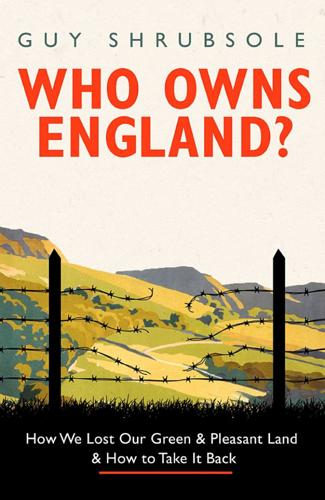
Who Owns England?: How We Lost Our Green and Pleasant Land, and How to Take It Back
by
Guy Shrubsole
Published 1 May 2019
Like many companies, it prefers its forays into public political debate to be conducted via intermediary bodies and corporate coalitions. In 2008, it emerged that Peel was a dominant force behind a business grouping that had formed to lobby against Manchester’s proposed congestion charge. The charge was aimed at cutting traffic and reducing the toxic car fumes choking the city. But Peel, as owners of the out-of-town Trafford Centre shopping mall, feared that a congestion charge would lose them ‘customers who make long car journeys through central Manchester’. Their lobbying paid off: voters rejected the charge in the local referendum, and the proposal was dropped. But decisions about the use of public space are seldom subject to popular vote; rather, they’re determined through the much more arcane planning process.
…
Whittaker built ‘Profile: John Whittaker’, Scotsman, 28 March 2010. acrimonious takeover battle ‘Peel Holdings milestones’, Manchester Evening News, 30 June 2005. a row of gaudy Oliver Wainwright, ‘“Final warning”: Liverpol’s Unesco status at risk over docks scheme’, Guardian, 1 July 2017, customers who make Andrew Bounds, ‘Manchester congestion charge divides business’, Financial Times, 20 October 2008. disguising its true intentions Jack Straw MP, House of Commons debate, ‘Peel Holdings’, Hansard, 16 May 2012, col. 662, https://publications.parliament.uk/pa/cm201213/cmhansrd/cm120516/debtext/120516-0004.htm well in excess of 300 ExUrbe, ‘Peel and the Liverpool City Region: Predatory Capitalism or Providential Corporatism?’
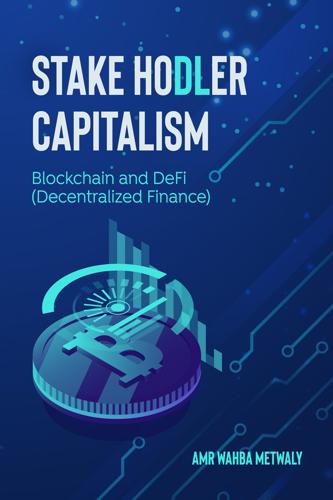
Stake Hodler Capitalism: Blockchain and DeFi
by
Amr Hazem Wahba Metwaly
Published 21 Mar 2021
An individual may have an admin key that can disable the protocol, or there may be a contactless management system that makes such decisions. Also, it would help if you always considered the more systematic risks that may arise from, for example, sudden depreciation of the price of an asset. This can lead to cascading liquidations through multiple DeFi protocols. Network and congestion charges can also be an issue. This is especially true if we avoid liquidation and try to provide more security on time. The upcoming Ethereum 2.0 and Tier 2 scaling solutions can help solve this problem. It also has subtle features or changes that apply to one of the protocols, leading users to take less obvious actions that can cascade across multiple protocols.
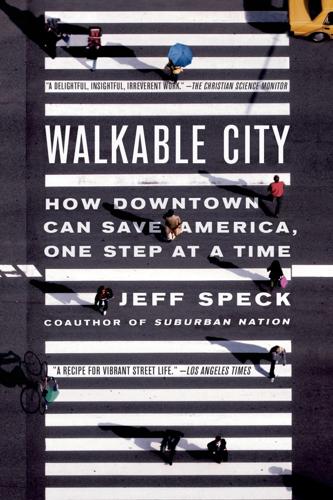
Walkable City: How Downtown Can Save America, One Step at a Time
by
Jeff Speck
Published 13 Nov 2012
The fee has already generated over a billion dollars in revenue, much of which has been invested in mass transit. London now has hundreds of new buses, providing almost thirty thousand more daily trips than before the charge. Bus reliability has jumped by 30 percent and bus delays have dropped by 60 percent.37 Before introduction of the congestion charge, Londoners were evenly divided on the concept. When last polled, pros beat cons by 35 percent.38 And in the subsequent mayoral election, largely a referendum on the pricing scheme, Livingstone was reelected by a broad margin. London is not alone in its embrace of congestion pricing. São Paulo, Shanghai, Singapore, Stockholm, and Sydney39 have all introduced similar measures, with varying, but all generally positive, results.
…
Jeff Mapes, Pedaling Revolution, 81. 34. Witold Rybczynski, Makeshift Metropolis, 83. 35. Jeff Speck, “Six Things Even New York Can Do Better.” 36. Ken Livingstone, winner commentary by Mayor of London, World Technology Winners and Finalists. 37. Data taken alternately from two sources: Ibid., and Wikipedia, “London Congestion Charge.” 38. Ibid. 39. Stewart Brand, Whole Earth Discipline, 71. 40. Wikipedia, “New York Congestion Pricing.” 41. Ibid. 42. Ibid. 43. Nozzi, op. cit. 44. Bernard-Henri Lévy, American Vertigo. 45. Ivan Illich, Toward a History of Needs. 46. Ibid., 119. 47. Duany, Plater-Zyberk, and Speck, 91n. 48.
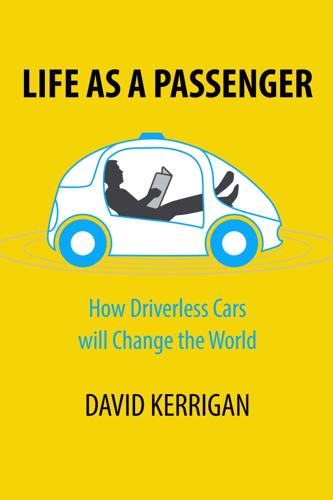
Life as a Passenger: How Driverless Cars Will Change the World
by
David Kerrigan
Published 18 Jun 2017
In an effort to keep the city more habitable, Caesar even outlawed vehicles in the city for the first 10 hours of each day, unless they were involved in the building of a temple. Mitigating congestion is not easy. With the exception of congestion charging in cities like London, Singapore and Stockholm, most road owners/policy makers have chosen not to apply the concept of scarce resource pricing to most peak time travel. For road users, the cost of using the road typically remains the same regardless of the time - unlike the peak models applied to numerous sectors such as airlines, hotel rooms, holidays and telephone calls. Congestion charging works because it forces people to make a conscious decision if the trip is “worth it” with indisputable benchmark pricing, but is not politically popular, and can be seen as a harsh tax.

Data and Goliath: The Hidden Battles to Collect Your Data and Control Your World
by
Bruce Schneier
Published 2 Mar 2015
Jennifer Lynch and Peter Bibring (6 May 2013), “Automated license plate readers threaten our privacy,” Electronic Frontier Foundation, https://www.eff.org/deeplinks/2013/05/alpr. It enforces London’s: The police also get access to the data. Hélène Mulholland (2 Apr 2012), “Boris Johnson plans to give police access to congestion charge cameras,” Guardian, http://www.theguardian.com/politics/2012/apr/02/boris-johnson-police-congestion-charge. automatic face recognition: Dan Froomkin (17 Mar 2014), “Reports of the death of a national license-plate tracking database have been greatly exaggerated,” Intercept, https://firstlook.org/theintercept/2014/03/17/1756license-plate-tracking-database.
…
Already, the states’ driver’s license databases are being used by the FBI to identify people, and the US Department of Homeland Security wants all this data in a single national database. In the UK, a similar government-run system based on fixed cameras is deployed throughout the country. It enforces London’s automobile congestion charge system, and searches for vehicles that are behind on their mandatory inspections. Expect the same thing to happen with automatic face recognition. Initially, the data from private cameras will most likely be used by bounty hunters tracking down bail jumpers. Eventually, though, it will be sold for other uses and given to the government.
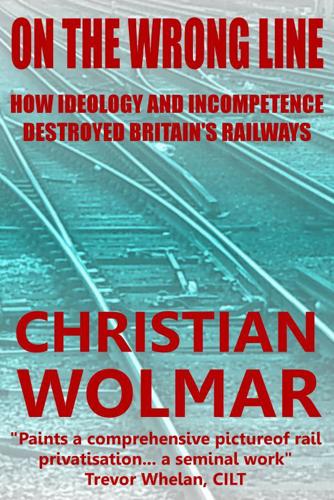
On the Wrong Line: How Ideology and Incompetence Wrecked Britain's Railways
by
Christian Wolmar
Published 29 May 2005
Prescott managed to persuade Brown to allow councils the right to spend any money they raised through congestion charging on local investment schemes for transport, including rail and bus as well as roads. He even obtained a promise from Brown that any future revenue from the fuel tax escalator would be earmarked (hypothecated) for national transport spending, but this was to prove a Pyrrhic victory, since the automatic escalator was abolished in the 2000 budget and then buried by the fuel tax protests that autumn. Moreover, congestion charging was a long-term prospect and needed legislation before it could be introduced.² The price Brown extracted was Prescott’s agreement to two controversial part-privatisations, of the London Underground and National Air Traffic Services.
…
Prescott wanted to present it as a radical shift away from the old emphasis on roads, but he could not be seen to be too radical because of Blair’s fear that Labour would be labelled anti-motorist. The use of public transport, walking and cycling were to be encouraged, whilst, overall, the need for travel would be reduced through better land-use planning and technological innovation. The White Paper announced plans to allow congestion charging and taxes on company car parking, and there were plenty of other good ideas and suggestions, but it was short on firm commitments. While the White Paper represented a marked shift away from the ‘predict and provide’ model of road building - whose ultimate logic was the paving over of much of southern England - a few radical edges had been knocked off on Downing Street’s orders, such as a suggestion to tax supermarket car park users.

The New Urban Crisis: How Our Cities Are Increasing Inequality, Deepening Segregation, and Failing the Middle Class?and What We Can Do About It
by
Richard Florida
Published 9 May 2016
But the most effective way to fund new transit and high-speed rail is to redirect a larger share of the gas tax toward such projects. It is time to level the playing field for mass transit by reducing the outright subsidy we give to the car in the form of roads and highways. Cities in other parts of the world, including London, have begun to institute congestion charges, which make drivers pay for their use of busy roads to help alleviate traffic, sprawl, and pollution. New developments like self-driving cars, electric vehicles, and on-demand digital delivery systems, such as Uber and Lyft, will certainly play a big role in the city of the future. But we still need mass transit to provide the connective fiber that will increase clustering and enable the development of a larger number of dense, mixed-use clustered neighborhoods that are affordable to more people.
…
See creative class; middle class; service class; working class class divide, xix, 5 economic segregation and, 121–123 gentrification and, 78 geography of, 12, 121–122, 149 in Patchwork Metropolis, 12, 122–124 in suburbs, 121–122, 154, 162–163 in superstar cities, 123–124 Clinton, Hillary, xx, 164, 185, 188 clustering back-to-the-city movement and, 124 in capitalism, 33 contradictions of, 8–9, 33 economic growth from, 166, 191 factors in, 123–124 of firms and industries, 21, 33 New Urban Luddism limiting, 28 of talent, xiv, xvii–xviii, xx, 8, 15, 21, 33, 42, 149 in winner-take-all urbanism, 13–14 working for all, 11, 191–195 CMU. See Carnegie Mellon University college graduates educational segregation of, 103–104, 105 (table), 111, 219 middle class and, 203 variable of, 220 colleges, 66 Coming Apart (Murray), 121–122 commuting, 158–160 Composite Inequality Index, 88, 89 (fig.), 192, 218 congestion charges, 198 connectivity, 181–183 conservatism, 112, 190, 204, 222 Cook, Philip J., 14 corporations, real estate owned by, 39 cost of living minimum wage and, 205 in superstar cities, 18–19 Council of Cities, 211 Cowen, Tyler, 192 crabgrass frontier, 190 creative class advantages of, xviii, 108, 149 attacks on, xvi defined, 217 economic segregation of, 104–108, 106 (table), 111, 149, 219 elites and, 36 gentrification and, 60 housing costs and, 37–38, 48, 55 location of, xiv, 108, 123, 149 in New York City, 35–37 in Patchwork Metropolis, 122–124, 129–149 race and, 115 rise of, xiv, 46, 48, 115, 142 specific occupations of, 221 in startup cities, 46–48 wages of, 31–32 creativity higher-paying service jobs promoting, 206 in startup cities, 46–47, 50–55, 52 (fig.)
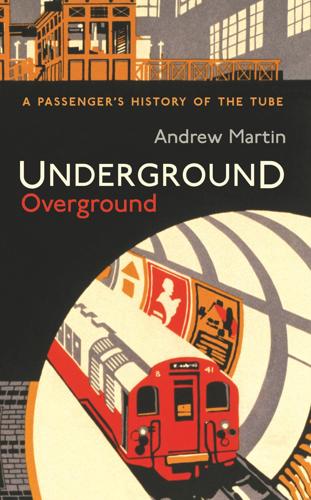
Underground, Overground
by
Andrew Martin
Published 13 Nov 2012
Frank Dobson was selected as the official Labour candidate for mayor, but in the election of 2000 Livingstone stood against him as an independent, and won. Here he was in charge of transport again. He had the power to set fares and to introduce road pricing for London, and this he did, by his introduction of the central London Congestion Charge, with the money raised going into public transport. The Tube being ‘at capacity’, he improved the bus network so as to accommodate as many as possible of the motorists who would now leave their cars at home. (London buses now provide a de luxe service – they’re regular and well maintained – and almost half the people using them pay nothing to do so, being under eighteen or of pensionable age.
…
C. 20–1, 85, 101, 127, 128, 132 Barlow, Peter William 95 Barlow, William Henry 95 Barman, Christian 157, 160–1, 179, 186, 213 Barnes, Julian 72, 259 Barnett, Henrietta 176 Baron’s Court 60 bars 39, 40 Battersea 274 Battersea Power Station 141 Bayswater 36, 57, 114 see also Queensway Bayswater, Paddington & Holborn Bridge Railway 26 Beaumont, Maureen 196 Beck, Harry 66, 199–203, 270 Behave Yourself (Roberts) 214–15 Bell, John 44 Belsize Park 220, 230 Bendy Bus 242 Bennett, Arnold xi, 30, 80–1, 166, 172, 280 Berger, John 153–4 Bethnal Green 229–30, 255 Betjeman, John 267 Aldersgate station 33 Central Line 119 City & South London 104 commuters 167 District Line 59 Epping-Ongar line 209 Marylebone station 75, 78 Metroland 169, 170–2, 174 South Kentish Town 264 Betjeman (Wilson) 170 Betjeman Country (Delaney) 172–3 Beyer, Peacock & Co. 42 Big Tube 105, 120–5, 130, 158, 159, 182, 191, 206 Birmingham, Peggy and Jack 232 Bishop’s Road 37 Bishopsgate 57 see also Liverpool Street Black, Jeremy 166 Black, Misha 270 Blackfriars 61, 111 Blackpool 84 Blair, Tony 249, 251, 252, 259 Blake, Neil 268 Blake Hall 209 Blakemore Hotel 58 Bleeding London (Nicholson) 165 Blomfield, Arthur 54–5 Boat Race 60, 80 bombs air-raid shelters 224–33 Edgware Road 69 Bond Street 117, 274 Borough 104 Boston Manor 189 Bradley, Simon 55 Bramwell MD 153 Brent Cross 178 bridges 52, 54, 55, 60, 80, 81 Briggs, Thomas 16–17 Brighton 84 British Gas 249 British Museum 152, 263 British Rail 76, 113, 123 British Railways 234 British Transport Commission 233–4, 239 Brittain, Vera 232–3 Bromley 244 Bromley-by-Bow 59, 244 Brompton & Piccadilly Circus Railway 150 see also Great Northern Piccadilly and Brompton Railway Brompton Road 183 Brown, Mike 277 Bruce-Partington Plans, The (Conan Doyle) 63 Brunel, Isambard Kingdom 42, 86, 88, 89 Brunel, Marc 86–90, 95 Buchanan Report 242–3 Buckhurst Hill 208 Buckingham Palace 261 Buffalo Bill’s British Wild West (Gallop) 60 Bull & Bush 144, 176 Bulwer-Lytton, Edward 97 Burnt Oak 178 Bus We Loved, The (Elborough) 17–18, 157 buses East London Line 92 Gladstone 34 horse-drawn 20–1, 84–5 Livingstone 252 London Transport 192 petrol-driven 148, 149 Pick 223 Routemaster 242 Shillibeer 18–20, 102 UERL 158, 191 Bushey Heath 206 C cable railways 94, 99 Calson Old Face 161 Camden 146, 175, 177, 178, 274 Camden Town 144, 230, 274 Canada Water 93, 250 Canary Wharf (complex) 249, 251 Canary Wharf (station) 250, 251 Canning Town 250 Cannon Street 48 car ownership 240 carriages 1938 stock 211 Big Tube 122 Central Line 114, 116, 117 City & South London Railway 99, 102–3, 104 Metropolitan Railway 38, 51, 77–8 Waterloo & City Railway 112 Yerkes Tubes 147 see also seats Carvel, John 241 Cassel, Sir Ernest 115–16 Castle, Barbara 239 Castling, Harry 82 celebrities 259 Central Line 4, 9, 113–20 Bank 105, 106, 220, 221 colour 199 and Crossrail 275 Epping 76 Epping-Ongar 201, 208–10 Holborn 263 on map 204 New Works programme 205, 207–8, 233 postcards 117 smell 119 stations 116–17, 207–8 Stratford 250 train frequency 115, 118 trains 114–15, 137, 147, 211 Tube Upgrade 255–6 and Waterloo & City Line 113 Central London Railway 101, 113, 114, 115–19, 133, 157–8, 159 Chalfont & Latimer 76, 77 Chalk Farm 146, 220 Chambers, Ajit 263 Chancery Lane 115, 116, 230 Channel tunnel 75 Chapman, Herbert 117 Charing Cross 48, 144, 152, 217 Jubilee Line 153, 240, 247, 249 music 228 Northern Line xii, 133, 175, 181 see also Embankment Charing Cross, Euston & Hampstead Railway 129, 130, 133, 144, 148, 157–8, 175 and City & South London 177–81 Golders Green 175–7 South Kentish Town 263–4 see also Northern Line Charmley, Keith 260 Cheap Trains Act 1883 47 Chelsea 274 Chelsea Monster 134, 139–41, 143 Chemin de Fer du Nord 73 Chesham 76–7, 150 Children of Light (Weightman) 83 Chiltern Court 172–3 Chiltern Railways 78 Chorleywood 76 Christie, Agatha 137–8 church interval 142 Churchill, Winston 80, 156, 192, 222–3, 231 Circle Line 48, 52, 66–7 Baker Street 37 colour 66–7 cut-and-cover 28 direction of travel 67 and District Line 61 Edgware Road 68–9 and Hammersmith & City Line 49 Leinster Gardens 59 on map 200 Paddington 37 train frequency 67–8 urban myths 67 see also Inner Circle Citizen Ken (Carvel) 241 City & South London Railway 98–108, 148, 157–8, 159, 175 centenary 271 crest 3 and Hampstead Tube 177–81 Moorgate 3, 122 trains 147 tunnelling 131 see also Northern Line City of London 11, 12, 13, 16, 21, 106, 166 Big Tube 121 Central Line 116 Metropolitan Railway 26–7, 35 Morgan Tube 133 New Road 17–18 Pearson’s plan 25–6 City of London & Southwark Subway 98–9 City Thameslink 57 City Widened Lines 51–7, 121 Clapham 99 Clapham Common 81, 105, 179, 230 Clapham North 105, 230 Clapham South 230 classes 38, 45–7, 101, 123 Clouded Yellow, The 153 Cockfosters 182, 279 Colindale 178, 179 Coming Race, The (Bulwer-Lytton) 97 Coming Up for Air (Orwell) 170 Commercial Railway 13 Conan Doyle, Arthur 63 Congestion Charge 252 Connor, J. E. 263 Conspirator 153 Cooper, Austin xiii Corporation of London 10, 13, 22, 25, 27, 110, 113 Covent Garden xiii, 165, 261 Cowan, Paul 196–7 Cranley Gardens 206 Creep 137, 249 Cromwell Curve 62–3 Croome, Desmond F. 123, 127, 147, 261 Cross, Mr 257–8 Crossrail 17, 255, 274–5 Crouch End 205, 206 culex molestus 228 Cunningham, Granville C. 97, 119 Curwen, Harold 161 cut-and-cover lines v, 6, 28 air-raid shelters 228–9 District Line 79 electrification 134 glass roofs 31, 33 on map 204 Metropolitan Railway 28, 75 pigeons 259–60 trains 33, 45 tunnels 35–6 Cutler, Horace 241 D Daily Express 149 Daily Mail 41, 101, 118 Davies, Philip 22 Day, Robin 197 Day (Epstein) 188–9 de Vries, Jean 202–3 dead man’s handle 103–4 Death Line xiv, 153 deep-level lines see Tubes Delaney, Frank 172–3 Demuth, Tim 198 Deptford Power Station 84 Design and Industries Association 160, 161, 186 Designed for London (Green) 187 Development (Loan Guarantees and Grants) Act 1929 182 Diary of a Nobody, The (Grossmith) 167 Dickens, Charles 13–14, 15, 22 Dickens, Monica 242 disability discrimination legislation 213, 216 Discoveries and Inventions of the Nineteenth Century (Routledge) 36 ‘District Dave’s London Underground Site’ 45 District Line v, 8–9, 28, 59–62, 134, 158 bomb 69 Brunel tunnel 90 and Circle Line 68 colour 199, 200 and Crossrail 275 and East London Railway 91 Edgware Road 68 electrification 126, 135 expansion 71, 79–81, 179 Gladstone’s funeral train 33 Hammersmith 50 Heathrow 184 hustlers 214 Inner Circle 64–6, 91 Leinster Gardens 59 on maps 66 and Metropolitan Railway 57 moquette 6, 270 Paddington 37 passenger numbers 64, 84 and Piccadilly Line 182 roundel 159 Southend 198 trains 210, 212 Westminster 261 “District Line, The” (Milburn) 59 District Railway see Metropolitan District Railway Dobson, Frank 252 Docklands 249 Docklands Light Railway (DLR) 92, 250, 277, 279 Doddinghurst 209–10 Dollis Brook Viaduct 205 Dollis Hill xii, 247 Dombey and Son (Dickens) 13–14, 15 Doré, Gustave 52, 54 Dover Street 231 see also Green Park Down Street 183, 231–2 Drain, The see Waterloo & City Line Drayton Park 121, 122, 124, 125 Dreiser, Theodore 141 drinking 73 bars 39, 40 drunks 258 drivers communications 216, 217 Victoria Line 235–6 E Ealing Broadway 66, 71, 80, 120, 207 Earl’s Court xiii, 60, 79, 217, 261 Early Tube Railways (Pennick) 131 East Finchley 179 East London Line 64, 90–4 East London Railway Company 90 East Putney 81 Eastenders 59 Edgware 69, 178, 206 Edgware Road (Bakerloo Line) 69, 143, 232 Edgware Road (Circle, District and Hammersmith & City Lines) 68–70 Edgware Road (Metropolitan Railway) 18, 31 Eisenhower, General 230 Elborough, Travis 17–18, 157 Electric Lighting Act 1882 84 Electrical Multiple Units 112–13, 119, 147, 211 electricity 82–3 Betjeman 171–2 Central Line 118–19 Chelsea Monster 139–41 electrocution 137–9 signalling 136–7 electrification 86, 125, 134, 135–6 City & South London Railway 99–101, 103 East London Railway 91 Epping-Ongar line 209 LNER 205–6 Metropolitan Line 44, 56, 76, 126, 135, 141, 171, 233 Elephant & Castle 98, 99, 130, 143, 261 Eleven Minutes Late (Engel) 15 Elgin Marbles 152 Eliot, T.

Peers Inc: How People and Platforms Are Inventing the Collaborative Economy and Reinventing Capitalism
by
Robin Chase
Published 14 May 2015
World Bank, “Turn Down the Heat: Why a 4°C Warmer World Must Be Avoided,” report for the World Bank by the Potsdam Institute for Climate Impact Research and Climate Analytics, November 1, 2012. 19. Ibid. 20. Intergovernmental Panel on Climate Change, “Climate Change 2014: Synthesis Report.” 21. Jim Robbins, “Building an Ark for the Anthropocene,” New York Times, September 27, 2014. 22. “London Congestion Charge,” Wikipedia, http://en.wikipedia.org/wiki/London_congestion_charge. 23. “Living Sustainably,” Cornell University, https://living.sas.cornell.edu/live/community/sustainability.cfm. 24. U.S. PIRG Education Fund, “Millennials in Motion: Changing Travel Habits of Young Americans and the Implications for Public Policy,” October 14, 2014, www.uspirg.org/reports/usp/millennials-motion. 25.
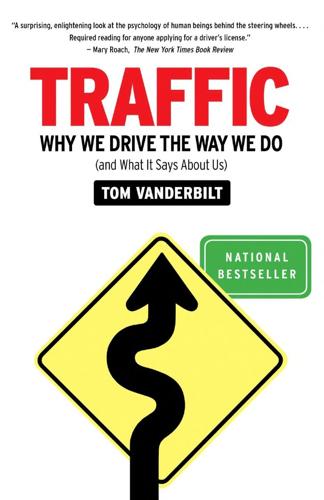
Traffic: Why We Drive the Way We Do (And What It Says About Us)
by
Tom Vanderbilt
Published 28 Jul 2008
After all, as Vickrey pointed out in 1963, hotels charge more for in-season rooms, railways and airlines charge more for peak travel periods, and telephone companies charge more during the times when more people are likely to call—why should roads not cost more when more people want to use them? (Vickrey was a bit ahead of his time: Told in the early 1960s that there was no way to track where people drove, or how much they drove, Vickrey, the story goes, built a cheap radio transmitter and installed it in his car, displaying the results to friends.) Congestion charging, in cities like London and Stockholm, has been shown to work because it forces people to make a decision about—and gives them a precise benchmark against which to measure—whether a given trip is “worth it.” We may have been paying before, in time—which hardly helps fund the roads—but the human mind handles time differently than money.
…
Alfredo Hernández García, executive director of traffic control and engineering at the Secretaría de Seguridad Pública of the Gobierno del Distrito Federal, opened up the city’s Traffic Management Center in the Colonia Obrera. Thanks also to Claudia Adeath at Muévete por tu Ciudad, which deserves kudos for trying to calm Mexico City’s often hostile traffic. In England, thanks to Malcolm Murray-Clark, Director of Congestion Charging in London, and Phil Davis, at Transport for London’s London Traffic Control Centre. Peter Weeden of the Royal Kensington Borough Council graciously offered his time and expertise. John Adams, professor emeritus at University College London, offered his always trenchant thoughts on risk. At the Transport Research Laboratory in Wokingham, Janet Kennedy shared her expertise and the lab’s driving simulator.
…
W12312 (June 2006). Retrieved at http://ssrn.com/abstract=910844. the city of London: Retrieved from Channel Four News Online, http://www.channel4.com/news/articles/society/environment/diplomatic+ccharge+bill+ tops+45m/569892. pays the charge: Nicola Woolcock, “Nations Unite to Join a Boycott of Congestion Charge,” Times (London), February 21, 2007. norms regarding them: This is why we can often see compliance with traffic laws differing even within a country. In Italy, corruption is more endemic in the south than the north, for reasons, as mentioned in an earlier note, having to do with varying degrees of civic culture.
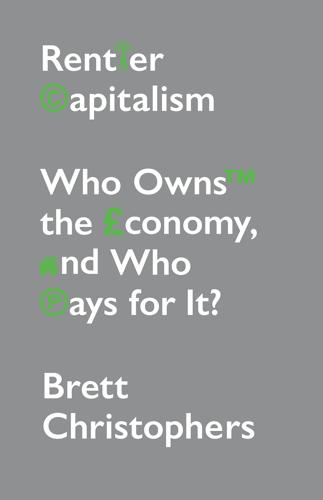
Rentier Capitalism: Who Owns the Economy, and Who Pays for It?
by
Brett Christophers
Published 17 Nov 2020
The generalists are two companies we have previously encountered: Serco and Capita, the latter gloriously described by Joel Benjamin as ‘the Vampire Squid of business process outsourcing, its money grabbing tentacles extending through every layer of Government, from pensions to council finance, from parking and congestion charges to NHS GP primary care support, funeral services, and even the privatised food safety agency’.50 I have already identified some of Serco’s main contracts. Notable contracts held by Capita – which claims to be the largest provider of services to UK local government, including the famous ‘commissioning council’ of Barnet – alongside its MoD recruitment contract include administration of the Congestion Charge and Low Emissions Zone for Transport for London, primary-care support services for the NHS, and electronic monitoring of offenders for the Home Office.
…
See also monopolistic competition; monopoly power; monopsony power Competition and Markets Authority (CMA), 208, 387–388, 413 Competition Commission, 291, 305, 314, 361 competition policy. See competition, regulation of competitive advantage, 8, 17–18, 50, 138, 143 compulsory competitive tendering (CCT), 237, 269–270 concessionary arrangement (natural resource extraction), 99, 108–109, 115 Congestion Charge, 250 Conservative Party, 24, 118–119, 126, 201, 259, 280–281, 354, 411–412, 418, 457n38 construction, 8, 15–16, 237, 244–247, 252, 259–260 contract rents, 15–16, 227–275; across multiple economic sectors, 15–16, 20, 241; history of, 19, 230–231; main customers of, 231–238, 243–244; market size, 240–242.
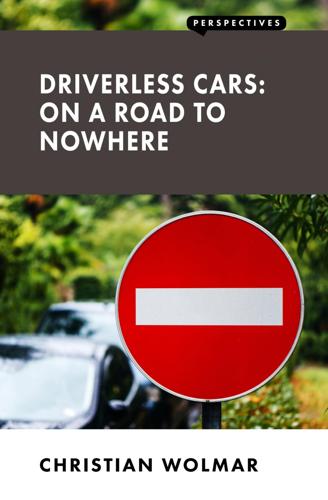
Driverless Cars: On a Road to Nowhere
by
Christian Wolmar
Published 18 Jan 2018
Indeed, they could be introduced tomorrow if politicians were brave enough. Some cities are already travelling in the right direction. As I write xii Preface this preface, Oxford has announced that it is seeking to be the first British city to ban all petrol and diesel cars and vans from its city centre by 2020. London’s congestion charge, introduced more than a decade ago, has reduced the numbers of cars going into the centre, and could easily be extended. Further afield, many European cities, such as Hamburg and Helsinki, have strategies to cut car use, and Paris recently announced that it will ban all non-electric cars by 2030.
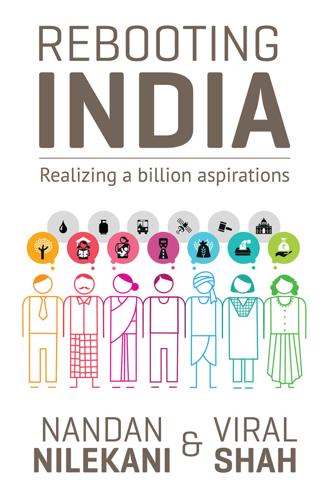
Rebooting India: Realizing a Billion Aspirations
by
Nandan Nilekani
Published 4 Feb 2016
‘ICICI Bank, Axis Bank tie up for electronic toll collection programme’. The Hindu Business Line. http://www.thehindubusinessline.com/industry-and-economy/logistics/icici-bank-axis-bank-tie-up-for-electronic-toll-collection-programme/article6552213.ece 14. ‘Congestion Charge’. Transport for London. http://www.tfl.gov.uk/modes/driving/congestion-charge ‘Electronic Road Pricing’. Land Transport Authority, Singapore government. http://www.lta.gov.sg/content/ltaweb/en/roads-and-motoring/managing-traffic-and-congestion/electronic-road-pricing-erp.html 15. 1 November 2005. ‘Road Transport Service Efficiency Study’.

Ghost Road: Beyond the Driverless Car
by
Anthony M. Townsend
Published 15 Jun 2020
Its cars suffer as much from slow traffic as everyone else—measurably so, even, as lower speeds generate fewer revenue-miles. In the short run, Uber will have to eat the cost of congestion tolls. Here’s the kicker, though—so will everyone else. The fees will speed the burn rate for Lyft, too, hastening its inevitable demise. Soon enough, Uber could pull a switcheroo, and start passing on congestion charges directly to you and me. Meanwhile, Uber would also gain an upper hand on local government. In the downtowns where its fleet has grown the most, the company already has the power to pile on traffic at will. As its market domination became complete, it would achieve near-total control over not only the prevailing level of congestion but how much revenue cities earned as a result.
…
Small and Jose Gomez-Ibanez, “Road Pricing for Congestion Management: The Transition from Theory to Policy,” in Road Pricing, Traffic Congestion, and the Environment, ed. Kenneth J. Button and Eric T. Verhoef (Cheltenham, UK: Edward Elgar, 1998), 216. 167London (in 2003): Transport for London, Congestion Charging Central London Impacts Monitoring Second Annual Report (London, UK: Transport for London, April 2004), 1–6; Stockholm (in 2006): Tri-State Transportation Campaign, Road Pricing in London, Stockholm, and Singapore (New York: Tri-State Transportation Campaign, 2018), 14–17. 168least likely to own cars: Transit Center, Subsidizing Congestion: The Multibillion-Dollar Tax Subsidy That’s Making Your Commute Worse (New York: Transit Center and Frontier Group, 2018), 2–5; they gain the most: “Congestion Pricing Would Save Riders of Most Queens and Brooklyn Express Buses One to Two Hours per Week,” Riders Alliance (blog), Medium, October 30, 2018, https://medium.com/@RidersNY/congestion-pricing-would-save-queens-brooklyn-express-bus-riders-1-to-2-hours-per-week-ed967dfbfdc0. 168a whopping 73 percent of the increased traffic: San Francisco County Transportation Authority, TNCs and Congestion Draft Report (San Francisco, CA: SFCTA, October 2018), 28. 169the cisia: “The Odometer by Vitruvius and Heron,” YourForum, May 3, 2009, http://yourforum.gr/InvisionBoard/The-Oedoemeter-By-Vitrueviues-Aend-Heroen-t174792.html. 169a parts budget of only three dollars: Ronald Harstad, “William S.
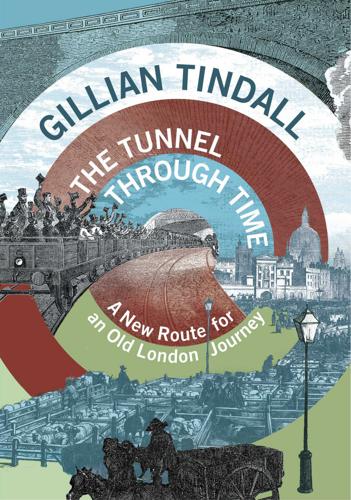
The Tunnel Through Time: A New Route for an Old London Journey
by
Gillian Tindall
Published 14 Sep 2016
Still today, the sheer busyness of the road, with an urban motorway leading in at one end and a daunting 1970s underpass at the junction with Tottenham Court Road, creates a perceptible step-change between what we look on as central London and the beginning of the vast rest-of-London. It is, logically, where today’s Congestion Charge area begins and ends. In our own time, a main road as a divider of one district from another, a roaring river of noise and ceaselessly moving vehicles, has become so common that we do not usually realise the nature of the townscape that has been destroyed. Many of inner London’s older streets, which were for hundreds of years places of meeting, markets, public forums onto which houses happily faced, have become dividers, perilous and discouraging to cross.
…
W., 223–224 Grey, Lady Jane, 150, 151 Grosvenor Estate, 24, 203, 239 Gunpowder Plot, 117–118 Habeas Corpus Act, 135 Hackney, 21, 35, 36, 88–89, 97, 137, 138, 179, 258 Hamilton, Patrick: The Plains of Cement, 262–263; Twopence Coloured, 262 Hampstead Junction Railway, 35 Hardy, Thomas, 144 Harrington, Alexander, 114 Harrington, John I, 114–116 Harrington, John II, 116–117 Harrison, Michael, 48–49 Hatton Garden, 12, 163, 167 Hawksmoor, Nicholas, 96, 168 Heathcote, Ebenezer, 160 Heathrow airport, 2, 3, 236, 275 Hendrix, Jimi, 164 Henry I, King, 58 Henry II, King, 62 Henry III, King, 84 Henry V, King, 65, 66 Henry VIII, King, 62, 69–70, 105, 109, 126, 149 Herbert, Sir Henry, 113–114 Heywood, William, 156 High Holborn, 11, 72 High Speed Two (HS2), 276 highwaymen, 238 Hogarth, William, 170–171, 217, 220 Holborn Viaduct, 11, 28, 32, 121, 231–232, 234, 260 Hollar, Wenceslaus, 93–94, 162–163, 178–179 Hollingshead, John, 25–27, 29, 30, 123, 184, 230, 234, 277 Homer, Thomas, 20–21 Hooke, Robert, 136, 216 Horwood, Richard, map of London (1790s), 178, 190, 195, 240, 244 House of St Barnabas, 252 Hoyle, Joshua, 191–192 Hudson’s Bay Company, 200 Huguenots, French Protestant, 96, 98, 149, 166, 181, 217 human remains: at Liverpool Street, 14–15, 76, 136–137, 138–139, 146; prevalence of, beneath London, 120–122; at Smithfield, 122–123, 126–127; and grave robbing, 226; at Tyburn, 244 Hyams, Harry, 269–270, 272–273 Hyde Park, 239; pet cemetery, 246–247 Illustrated London News (magazine), 31, 32, 34, 40, 141 Illustrated Times (magazine), 28, 30 Institute for the Advancement of Useful Knowledge, 183 Ireton, Henry, 159, 160, 184 Isle of Dogs, 189–190 Islington, 16, 21, 35, 76, 97, 162, 179, 268 Jack the Ripper, 99, 235 James I, King, 117, 147, 152 James II, King, 164 Jenkes family, 134–135, 139, 145 Jewish cemeteries: Cripplegate, 13–14; Stepney, 193, 207 John, Elton, 164 Jones, Horace, 230 Jones, Samuel, 194, 200 Jones, Susanna, 194, 200, 204 Jubilee line, 273 Jubilee Street, 202 Kensington, 245–246 Kilburn, 6–7, 8, 20, 174, 175, 258 ‘King John’s Palace’ see Worcester House, Stepney King’s Cross station, 9, 12, 24, 25, 31, 40, 236 Kingsley, Charles, 19 Kniveton, Frances, 158 Knox, John, 69 Lake, Sir Thomas, 118, 191 Langland, William, 86 Laud, Archbishop, 192 Leake, Martin, 201 Leicester, Robert Dudley, Earl of, 151–153 leper colony, St Giles-in-the-Fields, 58–59, 62, 149 Lichtenstein, Rachel, Rodinsky’s Room, 99 Lilburne, John, 134 Linacre, Thomas, 109 Lisle, Lord de see Northumberland, John Dudley, 1st Duke of Liverpool Street, 7, 8, 24, 82, 175, 177; excavations at, 14, 76; site of Old Bethlem hospital, 95, 137, 140–141, 145–146, 183 Liverpool Street station: and Crossrail, 13, 74, 274, 277; excavations at, 14, 76; Eastern Counties Railway terminus, 24, 36; building of, 27, 185; Paul Pindar’s house demolished for, 90; site of Old Bethlem hospital, 140; burial grounds beneath, 145–146 ‘Loch Lomond’ song, 73 Lockyer, Robert, 134 Lollards, 66, 109 London: ancient routes in and out, 5; first underground line (1860s), 9, 25–34; building of new roads in, 16–18; Congestion Charge, 17; and canals, 20–21; arrival of the railways, 22–24; transformation in the late 19th century, 28–29, 34; early commuting, 34–36; executions, 62–63, 65–73, 227–228; maps of, 72, 79, 93–95, 136, 137, 162, 167, 178–179, 190, 194, 195, 196, 239, 240, 244; urban development (16th century), 72, 88–93; (19th century), 51–53; Black Death (1348-1350), 84, 85, 127–129; population (13th century), 84; (14th century), 129 (16th century), 91; (19th century), 258; Great Fire (1666), 90, 93–94, 163, 225; Great Plague (1665-66), 130–134, 160–163; cholera outbreak (1830s), 141–142; fog, 258–259; The Blitz, 121, 187, 195, 211, 213, 265; literature of, 258–268; property values, 269–270, 272 see also names of individual districts, buildings and stations London Bridge station, 24 London County Council (LCC), 206, 209, 270–271 London Hospital, The, 202 London Underground see Underground railway, London London Wall, 13, 14, 24, 74, 76, 79, 82, 90, 95, 136, 179, 183, 186, 187 Lysons, Daniel, 113, 194, 203 Machen, Arthur, 266–268 Magna Carta, 84 Maidenhead, 2, 275 Markham, Isabella (later Harrington), 114–116 Marsh, Berrington, 194–195 Mary, Queen, 151 Mary I, Queen, 69 Marylebone, 11, 16, 49, 72, 84, 157, 217, 243, 255 Marylebone Lane, 240, 247 Maud (or Matilda), Queen, 58–59, 62 Mauny, Sir Walter de, 128 Maurois, André, Patapoufs et Filifers, 46–47 Mead, Matthew, 192–194 Mead, Richard, 194 Mead, William, 194 Meeting House, 180, 193–194, 196–197 Mercers’ Company, 106, 108, 109, 110 Merchant Taylors’ Company, 88 Metropolitan Board of Works, 28, 32, 138, 223, 235, 252, 260 Metropolitan Line: ‘cut-and-cover’ method, 2, 12; route, 9, 12, 13, 36, 122–123; and Farringdon Station, 10, 235; development of, 25–28; inaugral trip (1863), 27; demolition of buildings for, 29–31, 123, 226; and the Fleet ‘ditch,’ 31–33; success of, 33–34; and Paddington Station, 246; Hollingshead on, 277; Metropolitan Railway Company, 32 Midland Railway, 143–144 Mile End, 13, 36, 96, 102, 196 Mile End Green, 114, 118, 194, 196, 198, 200, 205 Mile End Road, 13, 96, 101, 118, 119, 188, 193, 200, 201, 203, 205, 207, 209, 212, 213, 214 Millwall Docks, 190 Milton, John, 92 Mithras, Temple of, in Walbrook, London, 74–75 Monmouth Street, 218 Montagu House, St Giles, 165 Monteagle, William Barker, 4th Baron, 117–118 Moorfields: in the Middle Ages, 13, 76–78; and the Walbrook stream, 75–76, 78; in the ‘Copperplate map’ (16th C), 79; and Bethlem Hospital, 94–95, 135–136, 182; in Morgan’s map (1682), 94–95; Roman remains found in, 121; plague pit, 133, 134; and Finsbury Circus, 140; in the 17th century, 178; after the Great Fire (1660), 179–180; in the 18th century, 182; and Dissenters, 183 Moorgate, 13, 14, 28, 36, 78, 79 More, Thomas, 109, 110, 122 Morgan, William, map of London (1682), 94, 167 Morley, Lord, 117–118, 191 Morris, William, 257, 264–265 Morrison, Arthur, A Child of the Jago, 99 ‘Murder Act’ (1752), 226 Museum of London, 3, 50, 121–122, 139, 183 Nash, John, 20 Neale, Thomas, 166–167 Nesbit, E., The Story of the Amulet, 264–265 Neville, Sir John, Baron Latimer, 105, 191 New Learning, 109 New Oxford Street, 51, 53, 62, 148, 220, 221, 222, 223, 265 New Road (now Marylebone and Euston Road), 9, 11, 12, 16–17, 21, 23, 31 Newgate prison, 65, 70, 216, 227–228, 231, 237 Nine Elms, Battersea, 24 Nonconformist movement, 183, 191–194, 196–197, 204 see also Dissenters Noorthouck, John, A New History of London (1773), 202–203 North London line, 97, 137, 139, 185, 235 North London Railway, 35, 137, 139, 196 Northumberland, John Dudley, 1st Duke of, 150, 151 Ogilby and Morgan, map of London (1676), 94 Old Bailey, 65, 101, 227 Old Oak Common, 275, 276 Oldcastle, Sir John, 66–68, 177 omnibus see buses Orczy, Baroness Emma, 39 Orwell, George, 262 Oxford Circus, 25, 239, 253 Oxford Street: ancient route into London, 11; discovery of medieval reservoir beneath, 48–50; and New Oxford Street, 53, 219; 18th century development of, 237–240, 247–249; plan of (c.1750), 242; plan of (today), 242; DeQuincey’s ‘Ann of Oxford Street,’ 250, 252–253, 263; and Charles Dickens, 255 Paddington, 2, 7, 8, 9, 11, 12, 15, 19, 20, 26, 34, 240–241, 244, 246, 258 Paddington Station, 2, 6, 9, 25, 26, 241, 246 Pantheon, Oxford Street, 248–9 Paris: Métro, 38; RER, 274 Parton, John, 62, 65, 148–149, 150 Pearlberg (developers), 270 Pearson, Charles, 24–28, 34, 231, 235, 236, 246, 273 Peasants’ Revolt, 64, 118 Penn, William, 194 Pepys, Samuel, 178, 180 Piccadilly, 217, 237, 240 Pindar, Paul, 89–90, 141, 177, 178, 180, 185, 268 plague: and urban growth, 93; human remains tested for, 122; 14th century (Black Death), 84, 85, 127–130; ‘Great Plague’ (17th century), 122, 130–134, 160–163, 180, 192, 265; burials, 134 plague pits, 127, 129, 133, 166, 180 Pocock, George, 174–175, 244 Pocock, John Thomas, 6–9, 11, 19, 20, 34, 174–176, 215, 262 Pool of London, 20, 98, 133 Poor Law, 181 poorhouses see workhouses Poplar, 102, 132, 192, 199, 209, 210, 266 Portman Square, 244 Praed Street, 246 Priestly, J.
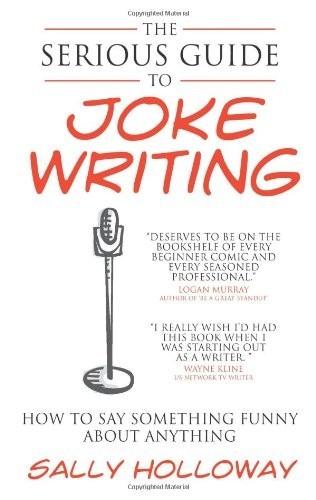
The Serious Guide to Joke Writing: How to Say Something Funny About Anything
by
Sally Holloway
Published 2 Nov 2010
Then go down another level and start thinking of other things to do with traffic jams and see if they apply to kids playing with toy cars. My kid has got so many cars that his bedroom looks like the M25 during rush hour. He’s six. He’s already got road rage. Mind you I did dock his pocket money to pay the congestion charge. As you can see, this is a much more fruitful way of using joke-webs. Question: Why do I find it hard to make joke-webs work when I’m on my own? Answer: That might be because when you do a group joke-web, you talk each stage through, which makes you think each stage through. If you do a joke-web on your own and just glance at the result you could miss loads of jokes.
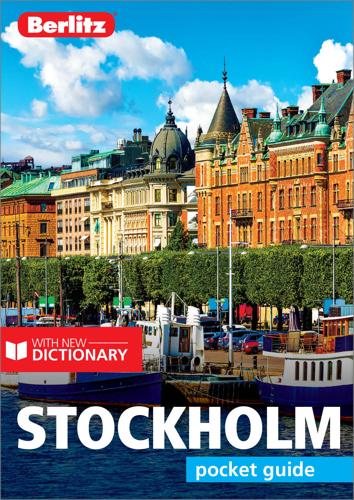
Berlitz Pocket Guide Stockholm
by
Berlitz
Published 19 Dec 2017
The public transport system is superb and the numerous boats that ply the waters of the archipelago and Lake Mälaren are an attraction in their own right. Besides that, car hire, like petrol, is not inexpensive, with an average minimum overnight rate of 1,000kr, and the penalties for speeding and other restrictions are severe. There is also a congestion charge for entering the city centre reaching SEK35 at peak hours. However, notwithstanding that, if you are planning to tour around the country, or just feel you want a car, then hiring a car before you go can avoid any uncertainties. There are Avis, Rent a Car, Europcar, Budget and Hertz car hire offices at Arlanda Airport.
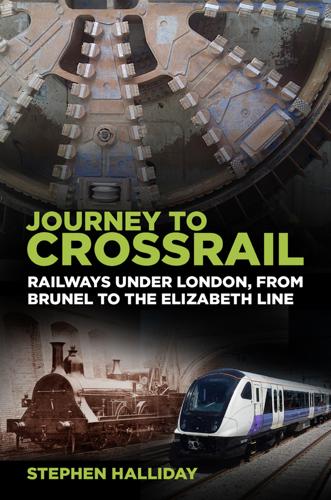
Journey to Crossrail
by
Stephen Halliday
The line will be operated by MTR Corporation (Crossrail) Ltd on behalf of Transport for London, which is also responsible, under the Mayor of London, for the London Underground, the London bus services, taxis, river transport, the Docklands Light Railway and the suburban rail routes into the capital known as London Overground. It also administers the congestion charge and the so-called Boris Bikes (actually the brainchild of Ken Livingstone, Boris Johnson’s predecessor as Mayor), which are now sponsored by Santander. Services will begin from the central area in December 2018 and the entire system, from Reading and Heathrow to Shenfield and the rebuilt Abbey Wood station, is expected to be in operation by December 2019.
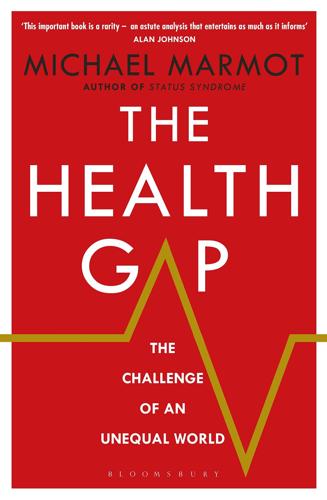
The Health Gap: The Challenge of an Unequal World
by
Michael Marmot
Published 9 Sep 2015
The planet-shaped hole is the book that needs to be written on bringing the environmental and social determinants of health agendas together. Sustainable development has taught us the importance of equity between generations as well as within. And I would argue that discussions on preserving the planet must take equity within this generation into account – within and between countries. For example, congestion charging – charging you if you drive your car into the central city – is a good ‘green’ tax. But like all consumption taxes it tends to be regressive, in that it takes a higher proportion of a poor person’s income than of a rich person’s. I have raised this in environmental circles and been told: don’t spoil a perfectly good tax by worrying about equity.
…
A., here Colombia, here, here Commission for Architecture and the Built Environment, here Commission on Global Governance for Health, here, here Commission on Macroeconomics and Health (CMH), here Commission on Social Determinants of Health (CSDH), here, here, here, here, here, here, here, here, here, here, here, here, here, here see also Closing the Gap; European Review of Social Determinants and the Health Divide; Fair Society, Healthy Lives communism, and health outcomes, here congestion charging, here contraception, here, here cooking stoves, here Copenhagen, here cortisol, here, here Costa Rica, here, here life expectancy, here, here, here, here, here, here pre-school education, here cotton farmers, here, here Coubertin, Baron Pierre de, here crèches, here crime, here, here, here, here, here, here, here, here, here, here, here, here, here, here fear of, here, here, here see also delinquency; gangs Cuba, here life expectancy, here, here, here, here, here, here pre-school education, here, here cultural sensitivity, here Czech Republic, here, here, here Daily Mail, here Daily Telegraph, here Deaton, Angus, here debt repayments, here, here delinquency, here, here, here, here dementia, here democracy, and freedom, here Democratic Republic of Congo, here Denmark, here, here, here social mobility, here, here depression, here, here, here deprivation, European measure of, here, here development states, here diabetes, here, here, here, here and adverse childhood experience, here, here in Australian aboriginals, here Dickens, Charles, here, here, here, here, here, here diet and disease, here Mediterranean, here ‘difference principle’, here disability, and life expectancy, here disempowerment, here, here, here, here Dominican Republic, here, here, here Dostoevsky, Fyodor, here Drèze, Jean, here, here, here, here drug regimens, adherence to, here drug use, here, here, here, here, here, here and adverse childhood experience, here Duflo, Esther, here, here, here Dylan, Bob, here Easterly, William, here Ebola, here economic growth, here, here economic inequality, see income inequalities Economist, here, here, here education and cash-transfer schemes, here and fertility rates, here Finnish system,, here, here, here, here gender equity in, here and intimate partner violence, here and life expectancy, here, here and material deprivation, here and measures of ill-health, here pre-school, here, here, here, here social gradient in, here university education, here, here, here, here, here, here, here women and secondary education, here women and tertiary education, here Egypt, obesity levels, here, here, here, here Eisenhower, Dwight D., here employment conditions, here see also unemployment empowerment, here, here, here, here, here, here, here, here, here, here, here, here, here, here, here, here and education, here and health behaviours, here political, here and social participation, here England, see United Kingdom English Longitudinal Study of Ageing (ELSA), here, here English Review, see Fair Society, Healthy Lives epigenetics, here equality of opportunity, here, here, here Estonia, here, here Ethiopia, here, here European Central Bank, here, here, here European Review of Social Determinants and the Health Divide, here, here, here, here, here, here Evans, Robert, here Evelyn, John, here Everington, Sam, here exercise, see physical activity Experience Corps, here Fair Society, Healthy Lives, here, here, here, here, here, here, here, here, here, here fairness (definition), here fecklessness, here, here, here, here fertility rates, here Financial Times, here Finland, here, here, here, here education system, here, here, here, here gender equity in education, here fire fighters, here, here, here Fitzgerald, F.

World Cities and Nation States
by
Greg Clark
and
Tim Moonen
Published 19 Dec 2016
The Greater London Authority Act that set up the new mayoral system left many opportunities for central government to intervene in city government activity (for example, to impose a minimum budget for police or for transport). Central government also gave only modest funding to the London Development Agency (now closed down) and the surrounding Regional Development Agencies. But it did also create legislation allowing the city to introduce a Congestion Charge scheme and agree a ten‐year transport investment plan to pay for major rail and bus improvements. In the past decade the UK government has decided to manage the stresses of London’s world city growth path rather than intervene to change the formula for success. It has focused on promoting London as an international city and sought to manage the growth it brings by improving public service delivery, high‐capacity transport, social inclusion and quality of life.
…
The post‐2000 citywide government system has fostered an increase in innovation in the way major projects are financed. Although the new transport authority (TfL) has received central government grants, it has also been authorised to borrow without the consent of central government (but within ‘prudential’, official rules), and has been able to use the city’s Congestion Charge to generate net revenue of over £1 billion. A new funding structure was agreed for the £15 billion cost of Crossrail – one‐third central government grant, 30% from London business rates and an infrastructure levy, and almost all the rest from the city government (GLA) and TfL. Even the £9 billion public sector funding for the London Olympics was only two-thirds provided by central government, with the city government and National Lottery paying the rest.
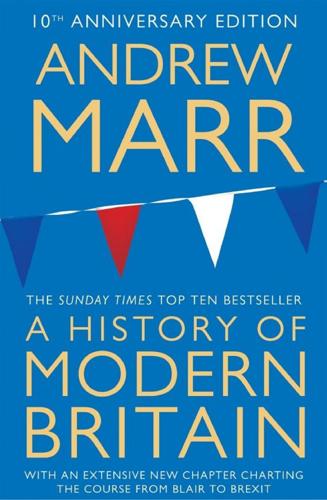
A History of Modern Britain
by
Andrew Marr
Published 2 Jul 2009
By 1970 there were 12 million and by the end of the century, more than 24 million, ten times as many in half a century. This only gives part of the picture, because these cars are also used much more, going further and for longer. In the last fifteen years of the century, car journeys increased by nearly 30 per cent. Year by year, despite propaganda for a healthier lifestyle, high fuel taxes, congestion charging and widespread worry about global warming, the British drive more and walk, cycle or use buses less. In the days of Marples it was believed that such an increase would also mean vastly more Britons being killed and maimed on the roads. This is one gloomy prediction that has been robustly disproved.
…
They are now in almost every sizeable store, looking down at key points in most big streets, in railway and underground stations, buses, housing estates and even from the fronts of private homes. Londoners are said to be picked up on CCTV cameras on average 300 times a day; their cars are filmed and tracked by the cameras set up for the capital’s congestion charge. The Home Office has spent three-quarters of its crime prevention budget on CCTV cameras and the face-recognition and ‘smart’ technology that goes with them. The number of mobile phones is now equivalent to the number of people in Britain; with global satellite positioning chips, they can show where their users are, and the same of course goes for GPS systems in cars (by 2007 Britons were losing the art of map-reading).
…
Meanwhile, to enjoy the consumer economy, the British were borrowing: the average adult had credit card, finance-deal and unsecured personal loans amounting to more than £4,500. Apart from generous planning laws, the shopping boom required the ‘great car economy’ lauded by Margaret Thatcher, which was now restrained only by rising petrol prices and congestion. London had deployed its own congestion charge and a national debate had begun about road pricing. Car use was huge by historic standards. At the beginning of the sixties when supermarkets first took off, there were 9 million vehicles on the roads; by the mid-2000s, there were 30 million. It was not all shopping, of course. Commuting by car had become mundane and the number of journeys to school by car had doubled in ten years.
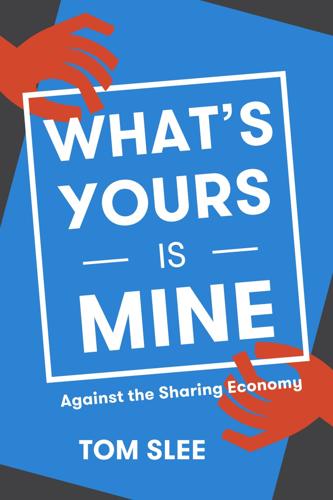
What's Yours Is Mine: Against the Sharing Economy
by
Tom Slee
Published 18 Nov 2015
The taxi service is just one part of a larger traffic management problem that cities continually struggle with, and municipal governance allows it to be balanced with other parts of the urban transit landscape such as bus services and subway services, and to fit in with other management techniques such as congestion charging. The sheer number of cities around the world also means that transit innovations can be and are imitated from city to city, such as the municipal car-sharing and bike-sharing programs that have blossomed in cities around the world over the last decade. From balancing consumer and driver interests, to providing predictable pricing, to ensuring individual cars are safe and that the system as a whole fits into the puzzle that is urban traffic, there is more to transit than a simple market exchange.

The Rough Guide to Sweden (Travel Guide eBook)
by
Rough Guides
Published 1 Nov 2019
The main company operating buses into Stockholm is Flygbussarna, which runs all-day services to Stockholm’s long-distance bus station, Cityterminalen, every 10–15min (40min; 99kr single; flygbussarna.se). Taxis from the airport into town (30–40min) cost around 550kr. If you pick up a rental car and drive into central Stockholm you will be subject to a congestion charge; cameras register vehicles automatically and your credit card will be debited accordingly. Bromma airport Some domestic flights and all flights with Brussels Airlines arrive at the more central Bromma airport, which is connected to Cityterminalen by Flygbussarna – buses run two to three times per hour (20min; 75kr single).
…
It’s not unheard of for drivers to rip off tourists – try to agree a fixed price wherever possible and be prepared to walk away if the rate seems too high. A short trip across the city centre should cost around 200kr. By car Be extremely careful when parking:. For car rental, and be aware of the congestion charge in central Stockholm. INFORMATION Tourist office Stockholm’s main tourist office (turistbyrå) is on Sergels torg, right next to the Kulturhuset Stadsteatern (Mon–Fri 9am–6pm, Sat 9am–4pm, Sun 10am–4pm; May to Aug Mon–Fri 9am–7pm, Sat 9am–4pm (July–19 Aug 9am–6pm) Sun 10am–4pm; 08 508 285 08, visitstockholm.com), which hands out fistfuls of free brochures.
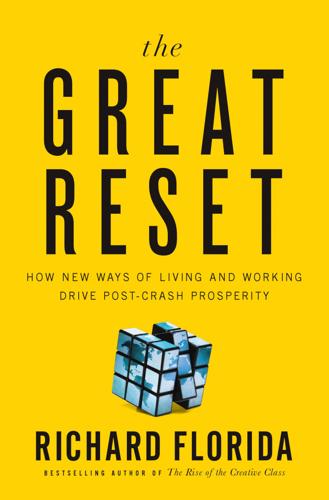
The Great Reset: How the Post-Crash Economy Will Change the Way We Live and Work
by
Richard Florida
Published 22 Apr 2010
“If we could shift all the cities in the Midwest closer to each other,” writes Avent, “and then pick them up and move them nearer to the northeastern corridor, we would go a long way toward restoring the economic viability of many Midwestern cities.” And here is the role of high-speed rail. “We can’t literally do that,” he adds, “but we can effectively accomplish something similar by improving physical links within the Midwest and between it and other regions. We could decongest highways and airports with congestion charges, for instance, and plow the proceeds into high-speed passenger and freight rail connections among Midwestern cities and between the Midwest and the northeastern corridor as well as healthy Canadian metropoles.” High-speed rail offers a mechanism for breathing life back into great industrial cities.

The Economic Singularity: Artificial Intelligence and the Death of Capitalism
by
Calum Chace
Published 17 Jul 2016
And traffic will still have to halt at intersections every now and then if pedestrians are ever going to be able to cross the road. Not every pedestrian crossing can have a bridge or an underpass. Nevertheless, machine-driven cars will be more efficient consumers of road space than human drivers. Traffic conditions are not fixed fates which once imposed can never improve. A congestion charge has significantly reduced traffic flows in London, and the switch to almost-silent hybrid taxis has made walking the streets of Manhattan an even better experience than it used to be.[cxcix] In any case, more efficient road use is not required to justify the introduction of self-driving cars.

Cogs and Monsters: What Economics Is, and What It Should Be
by
Diane Coyle
Published 11 Oct 2021
Transport economics has had many policy applications. Daniel McFadden was co-recipient of the 2000 Nobel memorial prize for his development of econometric methods for predicting passenger demand, as applied in a now-classic example to San Francisco’s BART authority (McFadden 1974). Economists have developed road pricing mechanisms and congestion charges. In many places, before the days of ride-sharing services, there were shortages of taxis, sustained by barriers to entry in the form of licences. A taxi licence or medallion was a valuable piece of property, and incumbents ardently resisted the issue of new ones no matter how acute the taxi shortage.
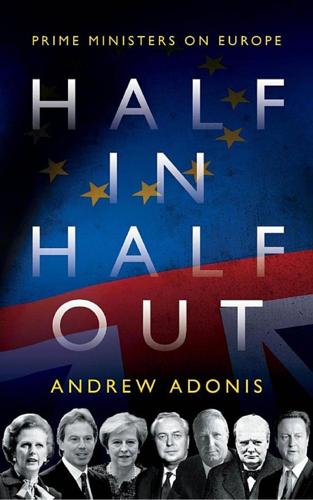
Half In, Half Out: Prime Ministers on Europe
by
Andrew Adonis
Published 20 Jun 2018
Faced with the not particularly controversial question of giving the proposed Scottish Parliament modest tax-raising powers, Tony imposed a second question in the Scottish devolution referendum in order to avoid an argument with the Tories and the right-wing media on higher taxes north of the border. Later there were referendums on the London mayoralty and a regional assembly for the north-east – essentially matters of local government reorganisation – and even on a proposal for a congestion charge in Manchester. After all this referendumitis, it was going to be hard to avoid an in/out referendum on Europe at some point, particularly with the 1975 precedent, the regular referendums in the rest of the EU, and the rise of UKIP, a party which grew out of the Referendum Party, whose sole policy was an in/out referendum on the EU.

Age of the City: Why Our Future Will Be Won or Lost Together
by
Ian Goldin
and
Tom Lee-Devlin
Published 21 Jun 2023
Constructing terraced houses and even mid-rise developments near to these precincts could help to provide a critical mass of customers within easy walking or cycling distance. Bringing public transport systems into the twenty-first century is central to this transformation. Networks needs to be electrified, based on renewable sources, and extended into suburban and exurban areas. That can be paid for at least in part by introducing or increasing congestion charges for cars. That would have the added benefit of nudging people to rely more on public transport, which in turn would improve its viability. Reliance on public transport could also be increased by shifting its revenue base away from ticket sales and towards general taxation, making it cheaper for users.
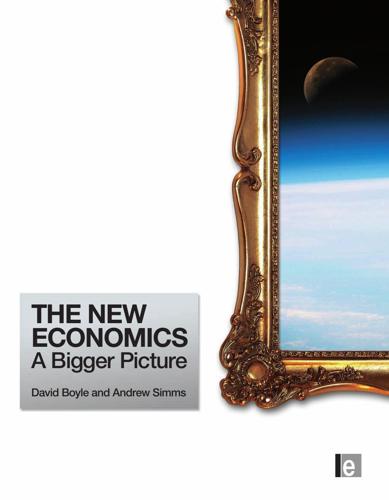
The New Economics: A Bigger Picture
by
David Boyle
and
Andrew Simms
Published 14 Jun 2009
Just over a century later, research across all the European capitals into traffic speed put London at the bottom of the league. The average traffic speed, door to door, was 11.8mph.2 The extraordinary aspect of this loss of 0.2mph in a century is that it comes, not just after billions spent on traffic management and urban motorways – on the North and South Circular roads and the M25 – but after the congestion charge introduced by Mayor Ken Livingstone in 2003. Traffic speeds in cities are one of the jokes of the modern age. There is hardly a city in the world where traffic has not choked people’s road space and lungs. But the amazing consistency of London traffic speed implies that, despite all that spending, some other factor is at work here – some other hidden hand.
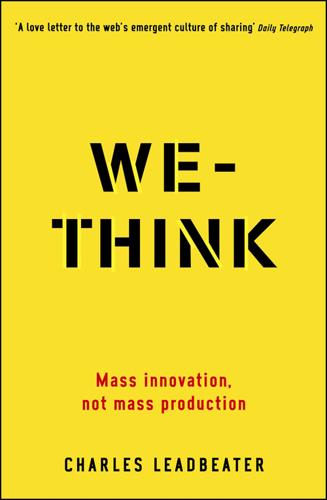
We-Think: Mass Innovation, Not Mass Production
by
Charles Leadbeater
Published 9 Dec 2010
Another scheme, GoLoco, aims to use the power of social networking to revive the flagging culture of sharing cars for commuting. At the moment we have just either very public forms of mass transit – buses and trains – or private cars and cycles. Zipcar and GoLoco’s approach, allowing people to make flexible use of shared transport resources, will become more attractive as more US cities introduce congestion charges to reduce car usage. In the Netherlands, a police inspector in Utrecht has created a system for citizens to help the police in solving crimes, not unlike the approach Rob McKewan took at Goldcorp, and a social-networking site has been created to help people look after one another’s ageing parents: you can sign up to look up someone’s parents in Rotterdam and someone else in the network will reciprocate by looking in on yours in Maastricht.
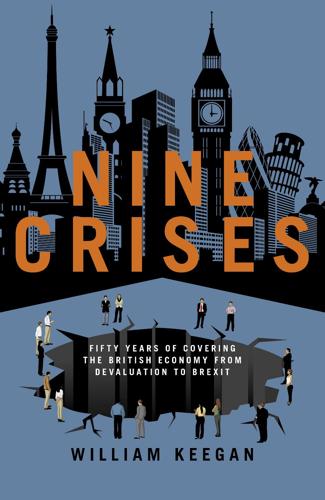
Nine Crises: Fifty Years of Covering the British Economy From Devaluation to Brexit
by
William Keegan
Published 24 Jan 2019
However, I began to feel I needed a contrast to the daily round of economic statistics, and developed the habit of disappearing from the FT at lunchtime, driving home for a quick lunch to nearby Islington, and spending half an hour or so in my study writing what I hoped would be a bestselling comic novel. In those days there was no congestion charge and parking near the office was cheap and easy. At lunchtime there was very little traffic, and I could be home within ten minutes, and back at the office by 3 p.m. What a leisurely existence it now sounds! At the FT in those days one did not have to show one’s face until 11 a.m., and could disappear after the editor’s morning conference.

New Dark Age: Technology and the End of the Future
by
James Bridle
Published 18 Jun 2018
Thus, a kind of dérive for the network: a process of psychogeography intended to discover not some reflection of my own pathology, but that of a globalised, digital collective. As part of a project called ‘The Nor’, I undertook several journeys to map these digital networks,2 starting with the system of surveillance devices that surround the centre of London: sensors and cameras monitoring the Congestion Charge and Low Emission Zones – which track every vehicle entering the city – as well as those scattered more widely by Transport for London and the Metropolitan Police, and the flocks of private cameras installed by businesses and other authorities. In two day-long walks I photographed more than a thousand cameras, enduring a citizen’s arrest and a police caution for my troubles.3 We will return to this theme of surveillance, and the strange atmosphere it generates, later in this book.
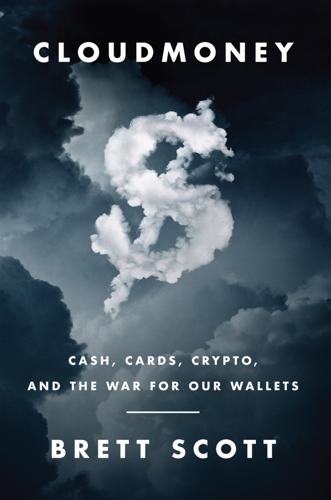
Cloudmoney: Cash, Cards, Crypto, and the War for Our Wallets
by
Brett Scott
Published 4 Jul 2022
Because this industry is seeking to win power for one mode, they behave like old automotive lobbyists scaremongering about the dangers of alternatives while ignoring the scores of motorcar accidents. Indeed, the automotive industry – starting with the Winton Motor Carriage Company – only advertised the narrow, individual and short-term benefits of cars (‘Save time and expense’) and left it to governments to deal with the longer-term collective social fall-out via road rules, congestion charges and fuel standards (and bike lanes). A similar dynamic exists with digital payment: just as car adverts are set in open countryside roads, rather than in polluted traffic jams or cordoned off crash sites, so adverts for digital payments don’t say, ‘Enjoy the speed, convenience, surveillance, cyber-hacking and critical infrastructure weaknesses that our platform brings.’

Restarting the Future: How to Fix the Intangible Economy
by
Jonathan Haskel
and
Stian Westlake
Published 4 Apr 2022
And if residents do not believe that transport capacity will increase with population, they are more likely to resist new development. Technocrats have their own solutions to offer. The most straightforward is to borrow to build new public transport and pay for it over time with the tax revenues from the increased economic activity in the now-more-bustling city. More ambitiously, city leaders can introduce congestion charging or charge for parking where it is currently free. In both cases, motorists pay for a shared resource that they could previously consume ad libitum, and provide a source of revenues that can be spent on improving roads and public transport. Edward Glaeser’s recent article, “Urbanization and Its Discontents,” makes the general point that city institutions (from transport and traffic management, to policing, to schools) are lagging behind the challenges that cities face and causing ever-larger economic problems.25 In the United Kingdom, some surprising voices have supported road-user charging in recent years, including the RAC Foundation,26 a motoring charity, and at least one right-leaning think tank.27 The challenge here is not just choosing the optimal policy but rather—as with NIMBYism—overcoming politics and special interests.

Pauline Frommer's London: Spend Less, See More
by
Jason Cochran
Published 5 Feb 2007
Taxis are often called “black cabs,” although in fact 12 colors are registered for them, including “thistle blue” and “nightfire red.” If you need to call a cab, One Number (% 087/1871-8710) pools all the companies, with a surcharge of £2. RENTING A CAR Don’t. Rare is the local who drives in central London, where there’s a mandatory daily “congestion charge” of £8 (don’t believe me? See www.cclondon.com), and where daily parking fees are several times that. Streets, many of which were cramped even back in medieval times, aren’t much improved today, and are dogged with one-way rules. You’ll go crazy and broke, so why do it? LONDON’S NEIGHBORHOODS The beauty of so many of London’s neighborhoods is that they were laid out and named during a period of wagon and foot traffic, when districts were defined in narrower terms than we define them today; indeed, for centuries people often 06_308691-ch02.qxp 12/23/08 9:53 PM Page 17 London’s Neighborhoods 17 lived complete lives without ever seeing the other side of town.
…
Cars with automatic transmissions are inevitably much more expensive than manuals. Driving on the left is easy after a few minutes of pulse-racing acclimation. But if you insist upon wheels to get out of the city, there are rental garages everywhere, although reserving ahead from home yields the best prices. Try to return your car outside the congestion-charge zone to avoid charges and aggravation. You will find similar rates among Nova Car Hire (www.novacarhire.com), Auto Europe (www.autoeurope.com), Europe By Car (www.ebctravel.com), Europcar (www.europcar.com), and Holiday Autos (www.holidayautos.com). Also check the major names like Avis, Hertz, and Budget, in case they can do better.
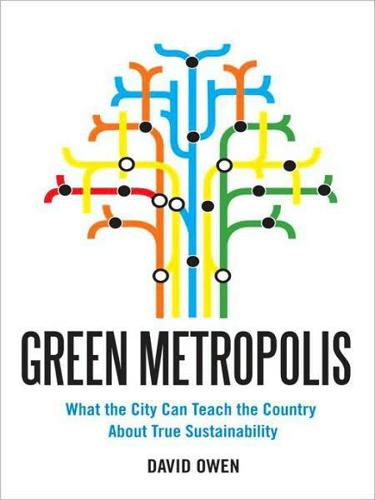
Green Metropolis: Why Living Smaller, Living Closer, and Driving Less Are Thekeys to Sustainability
by
David Owen
Published 16 Sep 2009
In 1999, Newman and Kenworthy, citing a 1995 study published in the International Journal of Urban and Regional Research, concluded that “there is no guarantee that congestion pricing will simultaneously improve congestion and sustainability.” They mentioned several ways in which congestion pricing can defy the expectations of its supporters, among them by causing motorists to “drive exactly as they always have if the congestion charge is covered by their firms (e.g., a majority of London’s peak-hour commuters have company cars and perks)” and by causing them to “drive more as they shift to ‘rat-running’ through suburban streets to avoid congestion-priced streets.”46 Advocates of congestion pricing usually argue that traffic jams waste gasoline, since cars stalled in traffic burn fuel when they’re not moving.j That’s true, but the energy waste and carbon output attributable to idling cars is vastly smaller than the energy waste and carbon output attributable to the overall transportation network, which generates waste both directly (by encouraging unnecessary driving) and indirectly (by encouraging forms of development that can be sustained only through huge new energy inputs and an ever-expanding web of energy-hungry infrastructure).
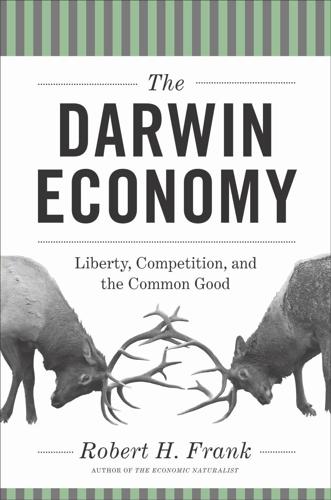
The Darwin Economy: Liberty, Competition, and the Common Good
by
Robert H. Frank
Published 3 Sep 2011
Jacoby, “Probabilistic Forecast for 21st Century Climate Based on Uncertainties in Emissions (without Policy) and Climate Parameters,” MIT Joint Program on the Science and Policy of Global Change, Report 169, January 2009. 5. “Climate Change Policy and CO2 Emissions from Passenger Vehicles,” Congressional Budget Office, October 6, 2008, http://www.cbo.gov/ftpdocs/98xx/doc9830/1006-ClimateChange_Brief.pdf. 6. http://inhofe.senate.gov/. 7. Jonathan Leape, “The London Congestion Charge,” Journal of Economic Perspectives 20(4), Fall 2006: 157–176. 8. Henry Goldman, “New York City Council Approves Manhattan Traffic Fees,” Bloomberg.com, April 1, 2008, http://www.bloomberg.com/apps/news?sid=at9mizGXi 7y4&pid=newsarchive. 9. Keith Bradsher, High and Mighty, New York: Public Affairs, 2002. 10.

The Second Machine Age: Work, Progress, and Prosperity in a Time of Brilliant Technologies
by
Erik Brynjolfsson
and
Andrew McAfee
Published 20 Jan 2014
Kintinuous Kiva Klapper, Leora Kline, Patrick Knack Kochan, Tom Kopecky, Karen Kremer, Michael Krieger, Mike Krueger, Alan Krugman, Paul Kurzweil, Ray Kuznets, Simon labor: capital replacement of churn in crowdsourcing of demand elasticity and digital partnerships with digitization and; see also “winner-take-all” markets incentives for input limits on non-digitized recessions and skill matrix for see also employment; productivity; wages labor, skilled: benefits of technology for contribution of immigration to creation of labor, unskilled: declining wages of technology’s replacement of Laeven, Luc Lakhani, Karim land taxes Leiserson, William Leonard, John Leontief, Wassily Levine, Uri Levy, Frank Lickel, Charles LIDAR Liebling, A. J. Lindbergh, Charles LinkedIn Lionbridge living standards, calculation of Lohr, Steve London, congestion charging in Longitude Prize Loria, Roberto Luca, Michael Ludd, Ned Luddite Fallacy Lusardi, Annamaria Lyft machine-to-machine (M2M) communication Macintosh Madigan, Kathleen Mandel, Michael Mankiw, Greg manufacturing: automation in importance of infrastructure to inelastic demand in organizational coinventions in U.S. employment in wages in maps, digital Marberry, Mike Marbles, Jenna Mariel boatlift Marshall, Alfred Marx, Karl massive online open courses (MOOCs) McAfee, Andrew McCarthy, John McDevitt, Ryan McFadden, Daniel McKinsey Mechanical Turk medicine: AI use in automation in diagnostic Memorial Sloan-Kettering Cancer Center “meta-ideas,” Michel, Jean-Baptiste Microsoft Milgrom, Paul military, U.S., robot use by Minsky, Marvin MIT, Computer Science and Artificial Intelligence Lab at Mitchell, Tom Mitra, Sugata MITx Monster.com Montessori, Maria Monthly Labor Review Moore, Gordon Moore’s Law in business in computing persistence of spread of Moravec, Hans Moravec’s paradox Morris, Ian mortgages Mullis, Kary multidimensional poverty index Munster, Gene Murnane, Richard Murray, Charles music, digitization of Nader, Ralph Narrative Science NASA National Academy of Sciences National Association of Realtors National Bureau of Economic Research National Review Nature of Technology, The (Arthur) Neiman, Brent New Digital Age, The (Schmidt and Cohen) New Division of Labor, The (Levy and Murnane) Newell, Al new growth theory New York Times Next Convergence, The (Spence) Nike Nixon, Richard Nordhaus, William numbers: development of large Occupy movement oDesk Oh, Joo Hee Olshansky, S.

Street Smart: The Rise of Cities and the Fall of Cars
by
Samuel I. Schwartz
Published 17 Aug 2015
It was unfair, unworkable, and likely would hurt business. I countered and parried and thought I gained some ground but it was hard to tell. His first term came and went with nary a mention of congestion pricing. In 2003, however, things changed. Mayor Ken Livingstone turned London into the first Western city to implement congestion charging, as they called it.f I was jealous, of course. Congestion pricing was invented in New York decades before by a professor at Columbia but London beat us to it. Competition is a powerful thing, especially to a man like Mike Bloomberg. After London beat New York in the competition for hosting the 2012 Olympics, the mayor got, shall we say, motivated.

When the Money Runs Out: The End of Western Affluence
by
Stephen D. King
Published 17 Jun 2013
The most obvious way to offer a social contract is to commit to a period of budget deficit reduction associated with the ring-fencing of expenditure that might benefit younger generations: that means continued support for education, infrastructure and children's health but a serious reduction in public spending elsewhere, including a substantial reduction in, say, defence spending or social benefits. That won't be easy: either services will shrink or, instead, they will have to be paid for privately (indeed, with the spread of new technologies, services that hitherto have been provided out of the public purse could easily be charged for: London's Congestion Charge could not possibly have worked without the technologies that automatically read number plates and charge (and fine) drivers according to their trips into central London). Ultimately, however, it's a choice between benefits today – which will damage our long-term prospects – or investment for tomorrow.
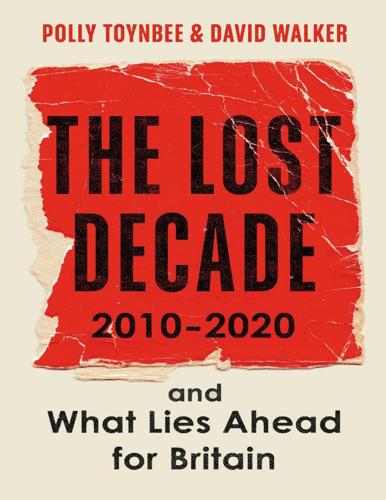
The Lost Decade: 2010–2020, and What Lies Ahead for Britain
by
Polly Toynbee
and
David Walker
Published 3 Mar 2020
Manchester, Leeds and Sheffield forged post-industrial identities, some enthusiastically led by newly elected mayors. Croydon, hurt by the 2011 disturbances, regrouped. In the midst of austerity, some councils took courageous steps: Birmingham expanded pedestrian zones in the centre; Edinburgh announced monthly car-free days; Nottingham put a levy on workplace parking; Bath and Bristol moved towards congestion charging, Oxford towards a central-area car ban. Raising the Take Civic renewal has a long way to go. So much depends on reforming another legacy of the 2010s: the rickety financial underpinnings of councils. Tory policy forced them to rely entirely on what they could raise through council tax and their shaky business rates.
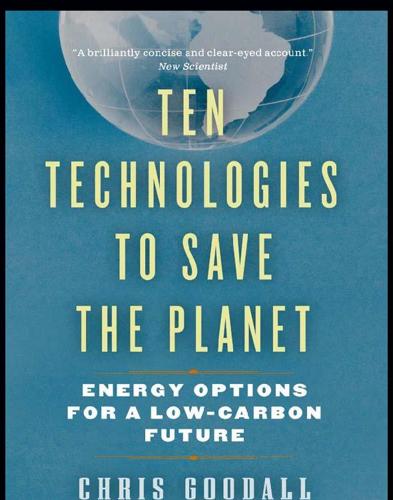
Ten Technologies to Save the Planet: Energy Options for a Low-Carbon Future
by
Chris Goodall
Published 1 Jan 2010
The second major market for electric cars is in England. Fuel taxation is high by international standards, so electric propulsion looks like particularly good value. Car owners also have to pay a yearly tax on their vehicle, but low-carbon cars pay little or nothing. Perhaps most importantly, the “congestion charge” imposed on vehicles entering and leaving central London exempts electric cars. Unsurprisingly, then, the world’s small band of electric car manufacturers has made the city a focus for their sales efforts. The Indian manufacturer of the G-Wiz has sold over a thousand of its spectacularly ugly electric cars to London’s commuters.
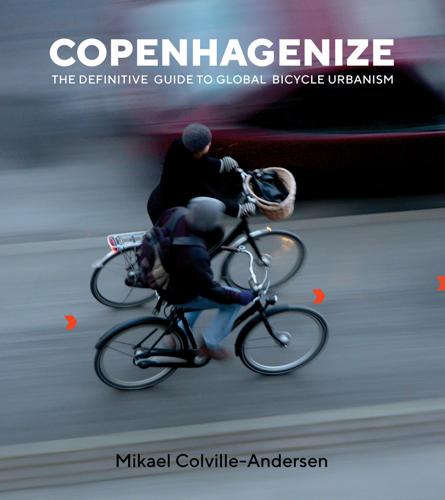
Copenhagenize: The Definitive Guide to Global Bicycle Urbanism
by
Mikael Colville-Andersen
Published 28 Mar 2018
CURB THE PARASITES In prioritizing cycling, we have to identify where, how but also who. When I was working in Ferrara, Italy, I was studying a map with a colleague who works for the City. He was filling me in about the various bicycle-friendly initiatives in place. For example, Ferrara doesn’t have a congestion charge for its historic center—it has a congestion ban. Nonresidents are not allowed to enter by car, and trucks transporting goods must pay a fee. Eight cameras are installed around the city to photograph number plates. If you’re caught in the city without a permit, you are fined €100. Ah, simplicity.
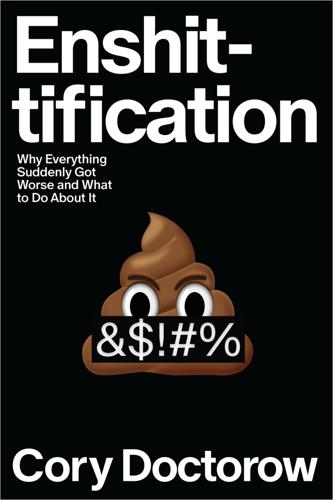
Enshittification: Why Everything Suddenly Got Worse and What to Do About It
by
Cory Doctorow
Published 6 Oct 2025
Even so, the idea of establishing right-to-repair laws spread to other states. In New York State, an electronics right-to-repair law passed in 2024, only to be neutered by Governor Kathy Hochul in a signing statement that ripped the guts out of it. (Note to New York transit activists who are still salty about Hochul unilaterally diminishing NYC’s hard-fought congestion charge from $15 to $9 at the last minute: we feel your pain, and your enemy is our enemy.) But repair advocates are tenacious, and their tenacity is paying off. In 2024, Colorado passed the nation’s first powered wheelchair right-to-repair law, which is notable for three reasons: First, it actually passed, without being assassinated as it crossed the finish line.

The Rough Guide to England
by
Rough Guides
Published 29 Mar 2018
Otherwise, it’s £2 for each additional 30min. For more details see tfl.gov.uk. Bike rental London Bicycle Tour Company, 1a Gabriel Wharf on the South Bank (020 7923 6838, londonbicycle.com), has bikes for rent (£3.50–4/hr; £20–24/day). The congestion charge All vehicles entering central London on weekdays between 7am and 6pm are liable to a congestion charge of £11.50 per vehicle (£10.50 if you sign up online to pay automatically each time you travel in the zone; vehicles that don’t meet certain emission standards have to pay an additional £10/day emissions surcharge). Pay the charge online or over the phone (lines open Mon–Fri 8am–10pm, Sat 9am–3pm; 0343 222 2222, tfl.gov.uk), before midnight; paying the following day costs £14; 24 hours later, you’ll be liable for a £130 Penalty Charge Notice (reduced to £65 if you pay within fourteen days).
…
Snow, ice, fog and wind can cause havoc – and there has been major flooding in the past few years – and driving conditions, on motorways as much as in rural areas, can deteriorate quickly. Local radio stations feature regularly updated traffic bulletins, as does the Highways Agency (highways.gov.uk or trafficengland.com). England just has one Toll Road, the M6 in the Midlands, as well as tolls on the Dartford crossing and various bridges, but congestion charges apply in London. Fuel is pricey – unleaded petrol (gasoline) and diesel in particular. Out-of-town supermarkets usually have the lowest prices, while the highest prices are charged by motorway service stations. Parking in towns, cities and popular tourist spots can be a nightmare and often costs a small fortune.

Future Files: A Brief History of the Next 50 Years
by
Richard Watson
Published 1 Jan 2008
Norwich Union is already conducting trials of a similar idea in the UK, whereby risks are calculated in real time and payment is made monthly in arrears bundled up with other services such as route planning and emergency roadside assistance. Another idea already taking off is the pay-as-you-go car. The notion that everyone needs their own vehicle is beginning to sound faintly ridiculous, especially in cities, where lack of parking spaces and congestion charging are making other forms of public or group transport more logical. A number of companies are springing up offering car-sharing services of one type or another. In the US companies like Zipcar are growing at breakneck speed, partly because small organizations and businesses are trying to cut costs, and car 168 FUTURE FILES sharing makes more sense than traditional auto rental or taxis.
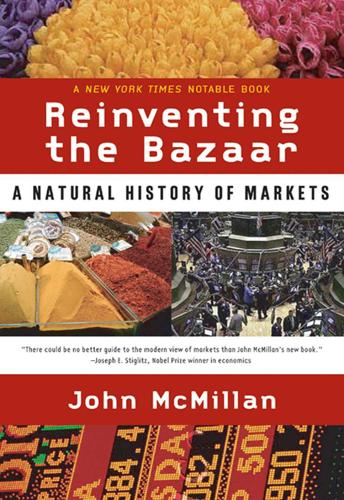
Reinventing the Bazaar: A Natural History of Markets
by
John McMillan
Published 1 Jan 2002
Even congestion can be taxed. In 1963, William Vickrey, who later won the Nobel Prize in economics for his work on auctions, proposed a plan for pricing urban car travel in Washington, D.C. Roadside receptors would scan each car that passed, sending the data to a central computer, which would calculate the congestion charge and bill the driver.3 The fee would be larger when the congestion was greater, and zero when there was none. Futuristic as the proposal seemed at the time, technology has caught up with Vickrey’s imagination. Singapore has put Vickrey’s idea into practice, charging drivers for the use of certain roads at peak times.
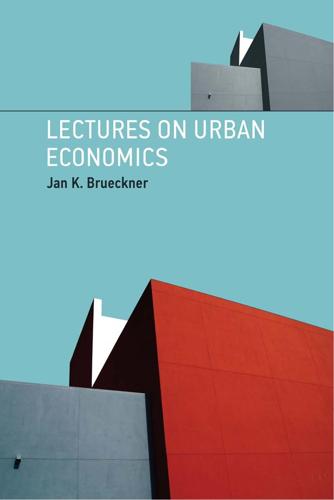
Lectures on Urban Economics
by
Jan K. Brueckner
Published 14 May 2011
Katz. 2007. Experimental Analysis of Neighborhood Effects. Econometrica 75: 83–119. Krol, Robert, and Shirley Svorny. 2005. The effect of rent control on commute times. Journal of Urban Economics 58: 421–436. Krugman, Paul. 1992. Geography and Trade. MIT Press. Leape, Jonathan. 2006. The London Congestion Charge. Journal of Economic Perspectives 20: 157–176. Lee, Kangoh, and Santiago Pinto. 2009. Crime in a Multi-Jurisdictional Model with Public and Private Crime Prevention. Journal of Regional Science 49: 977–996. LeRoy, Stephen F., and Jon Sonstelie. 1983. Paradise Lost and Regained: Transportation Innovation, Income, and Residential Location.

A New History of the Future in 100 Objects: A Fiction
by
Adrian Hon
Published 5 Oct 2020
With the package safely registered inside, the courier begins trundling away, navigating to its destination at a top speed of eighty kilometer hour using a combination of laser rangefinders, satellite positioning, and video cameras. If we were back in 2023 when millions of people were using UCS every day, then this courier might have picked up other items and made deliveries along the way, or perhaps stopped to recharge its batteries before arriving at Dr. Whittaker’s. Its route was determined by traffic levels, congestion charges, fee levels, customer location, electricity costs, and so on. Since we’re the only two people on its list, I can see that this bot is heading off straight toward Dr. Whittaker, who’s waiting on the opposite side of the museum. You might not think that such a simple robot would be so influential (it can’t even make anything or talk to anyone, after all), but it turns out that moving things from A to B was an extraordinarily expensive and cumbersome business before UCS appeared.
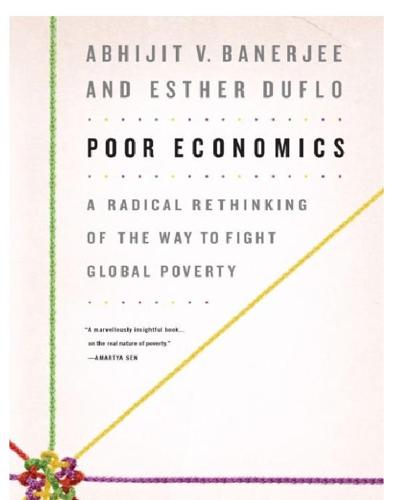
Poor Economics: A Radical Rethinking of the Way to Fight Global Poverty
by
Abhijit Banerjee
and
Esther Duflo
Published 25 Apr 2011
Inspired by the example of Hong Kong, developed with great success by the British and then handed back to China, he developed the concept of “charter cities.” Countries would hand over an empty strip of territory to a foreign power, who would then take the responsibility for developing a new city with good institutions. Starting from scratch, it is possible to establish a set of good ground rules (his examples range from traffic congestion charges to marginal cost pricing for electricity, and of course include legal protection of property rights). Because no one was forced to move there and all new arrivals are voluntary—the strip was empty to start with—people would not have any reason to complain about the new rules. One minor drawback with this scheme is that it is unclear that leaders in poorly run countries would willingly enter into an agreement of this sort.

Augmented: Life in the Smart Lane
by
Brett King
Published 5 May 2016
The exponential curve of this technology means that there will be close to 100 million self-driving cars on the road just ten years after that. Figure 8.2: Business Intelligence projections on self-driving vehicles (Credit: BI) Within 15 years, we can expect that major cities and local authorities will be giving strong preferences to self-driving cars. Within 20 years, cities like London and New York won’t just have congestion charges, there will also be charges for traditional, human piloted vehicles to enter the city centres, or more probably even banning them from city streets. While there will be some protests against banning “human drivers”, remember that the generations making these governance decisions will be Gen Y and Gen Z, not the likes of the baby boomers who grew up with gas guzzlers, V8 engines and the oil boom.

Fuller Memorandum
by
Stross, Charles
Published 14 Jan 2010
Visualize the scene: a side street not far from Piccadilly Circus in London, an outrageously busy shopping district crammed on both sides with fashion chains and department stores. Even the alleys are lined with bistros and boutiques, tidied up to appeal to the passing trade. Pedestrians throng the pavements and overflow into the street, but vehicle traffic is light--thanks to the congestion charge--and slow--thanks to the speed bumps. Here comes a red-haired woman, smartly dressed in a black skirt, houndstooth-check jacket, medium heels. She's holding a violin case in one hand, her face set in an expression of patient irritation beneath her makeup: a musician heading to a recital, perhaps.

This Will Make You Smarter: 150 New Scientific Concepts to Improve Your Thinking
by
John Brockman
Published 14 Feb 2012
If you weren’t focused on externalities, you might think that the way to reduce traffic congestion was to build more roads. That might work, but another way, and a potentially more efficient way, is to implement policies that force drivers to pay the cost of their negative externalities by charging a fee to use roads, particularly at peak times. Congestion charges, such as those implemented in London and Singapore, are designed to do exactly that. If I have to pay to go into town during rush hour, I may stay home unless my need is pressing. Keeping externalities firmly in mind also reminds us that in complex, integrated systems, simple interventions designed to bring about a particular desirable effect will potentially have many more consequences, both positive and negative.
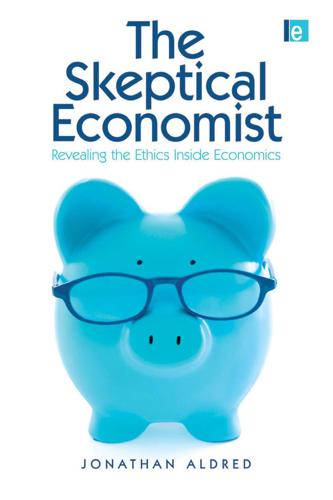
The Skeptical Economist: Revealing the Ethics Inside Economics
by
Jonathan Aldred
Published 1 Jan 2009
On the contrary, when individual choices have external effects, governments regularly intervene to restrict or override consumer sovereignty. Smoking has harmful external effects on non-smokers, so cigarettes are heavily taxed; my decision to drive into central London increases the traffic level others must suffer, so I must pay a ‘congestion charge’ tax. And there is a distinctive type of external effect that is almost unique to the public services. Normally we consume goods or services only up to the point where the perceived benefit outweighs the price. But public services are often free, so there is no incentive for self-restraint. The resulting tendency to overuse free services imposes costs on others.
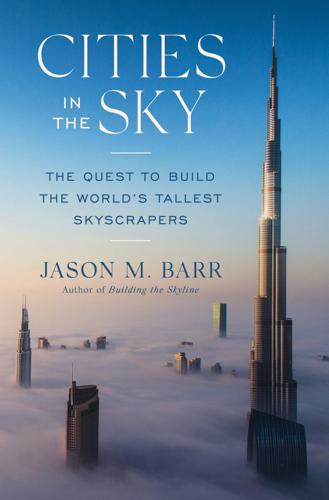
Cities in the Sky: The Quest to Build the World's Tallest Skyscrapers
by
Jason M. Barr
Published 13 May 2024
New York City is on the verge of initiating its own congestion plan for Manhattan south of Central Park. However, implementation is being delayed due to a “border war.” The State of New Jersey is suing to prevent its residents from having to pay twice—first a toll to cross the Hudson River and then the congestion charge. The odds are that there will eventually be a resolution and the plan will move forward. But fear of car-addiction withdrawal is fierce. At the end of the day, however, we must decide what we want—exclusive history museums like inner Paris or affordable future-oriented cities. They both have their benefits, but only one would be available to everyone and the VEAM Principle can make it so.

Discover Great Britain
by
Lonely Planet
Published 22 Aug 2012
Car London was recently rated western Europe’s second-most congested city (congratulations Brussels). Don’t even think about driving within it: traffic is heavy, roadwork continuous, parking is either impossible or expensive, and wheel-clampers keep busy. If you drive into central London from 7am to 6pm on a weekday, you’ll need to pay an £8 per day congestion charge (visit www.tfl.gov.uk for payment options) or face a hefty fine. If you’re hiring a car to continue your trip, take the tube to Heathrow and pick it up from there. London’s Oyster Diet To get the most out of London, you need to be able to jump on and off public transport like a local, not scramble to buy a ticket at hefty rates each time.
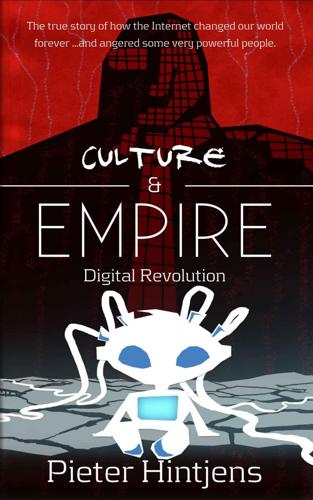
Culture & Empire: Digital Revolution
by
Pieter Hintjens
Published 11 Mar 2013
If you visit busy stations like Kings Cross, you can see dozens of cameras covering the turnstiles and stuck to the roof like colonies of hanging fruit bats. The London "ring of steel" was originally built to defend against IRA attacks on the capital. It has morphed over time from physical measures against car bombers to today's all-seeing blanket of cameras. Part of the infrastructure came together with the congestion charge in 2003, which gave the city the motive and opportunity to track every car's movement. At the time, tracking cars by reading their plates was cutting edge technology. Today it's cheap and widespread. If you drive, you are tracked. On CCTV, Privacy International says: CCTV is a seductive technology.
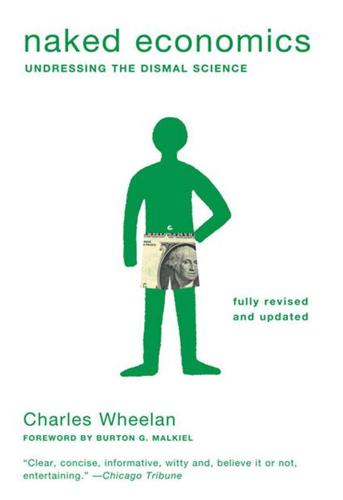
Naked Economics: Undressing the Dismal Science (Fully Revised and Updated)
by
Charles Wheelan
Published 18 Apr 2010
London has dealt with its traffic congestion problems by applying the logic of the market: It raised the cost of driving during the hours of peak demand. Beginning in 2003, the city of London began charging a £5 ($8) congestion fee for all drivers entering an eight-square-mile section of the central city between 7:00 a.m. and 6:30 p.m.8 In 2005, the congestion charge was raised to £8 ($13), and in 2007, the size of the zone for which the fee must be paid was expanded. Drivers are responsible for paying the charge by phone, Internet, or in selected retail shops. Video cameras were installed in some 700 locations to scan license plates and match the data against records of motorists who have paid the charge.

Smart Cities: Big Data, Civic Hackers, and the Quest for a New Utopia
by
Anthony M. Townsend
Published 29 Sep 2013
,” The Guardian Sustainable Business Energy Efficiency Hub, blog, June 1, 2001, http://www.guardian.co.uk/sustainable-business/amsterdam-smart-cities-work. 78Blake Alcott, “Jevons’ Paradox,” Ecological Economics 45, no. 1 (2005): 9-21. 79Robert Cervero, The Transit Metropolis (Washington, DC: Island Press, 1998), 169. 80Michele Dix, “The Central London Congestion Charging Scheme—From Conception to Implementation,” 2002, http://www.imprint-eu.org/public/Papers/imprint_Dix.pdf, 2. 81Robert J. Gordon, “Does the ‘New Economy’ Measure up to the Great Inventions of the Past?” (Cambridge, MA: National Bureau of Economic Research, 2000), http://www.nber.org/papers/w7833.
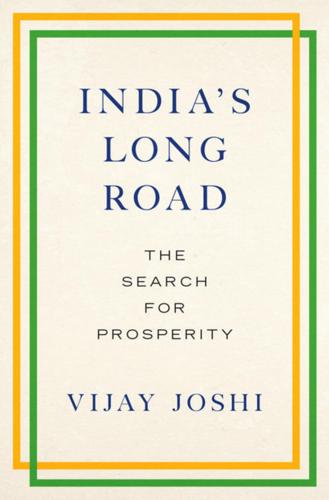
India's Long Road
by
Vijay Joshi
Published 21 Feb 2017
This is because there was much less public agitation for water quality than for air quality (presumably since it is easier for the vocal classes to take private action to purify the water they drink).34 Also, in the case of water, lines of authority were muddled and steady backing O w n e r s h i p, I n f r a s t r u c t u r e , a n d t h e E n v i r o n m e n t [ 125 ] 126 by the Supreme Court was missing. More recently, air quality has again worsened steeply. For example, in Delhi, India’s capital city, the hard- earned gains secured by PILs have been lost due to uncontrolled growth of diesel-guzzling cars, absence of congestion charges, neglect of building bypass roads to siphon off transport trucks from the city centre, and persistent deficiencies in public transport. The lesson is that the environment requires continuous policy focus and enforcement, if reversals are to be avoided. The water situation in India is a dreadful combination of scarcity and pollution, and these two features have to be tackled simultaneously.
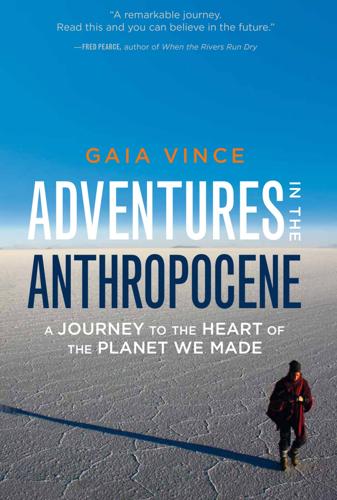
Adventures in the Anthropocene: A Journey to the Heart of the Planet We Made
by
Gaia Vince
Published 19 Oct 2014
While suburbia was built around the automobile, the city of the Anthropocene needs to be built around efficient, low-emitting mass transit. In central areas, it makes sense to ban private cars altogether – something that is gradually being encouraged by the heavy congestion commuters face, expensive parking and by specific taxes for vehicle drivers, such as London’s congestion charge. In Bogotá, for example, cars are banned from the city on Sundays, when the streets fill with pedestrians, cyclists and roller-bladers. Americans, who currently spend an average nine years of their lives sitting in their cars, may have now passed ‘peak car’, with car ownership and driving rates dropping.21 Even in China, the world’s biggest car market (where ownership has risen twentyfold since 2000), ‘peak car’ could come sooner than the two decades estimated to reach saturation: fuel prices are escalating, the cities’ brand new six-lane highways are already clogged with traffic and car fumes, and with more of the population living in dense cities and ‘meeting’ on social networks, car ownership is increasingly becoming an inconvenience.
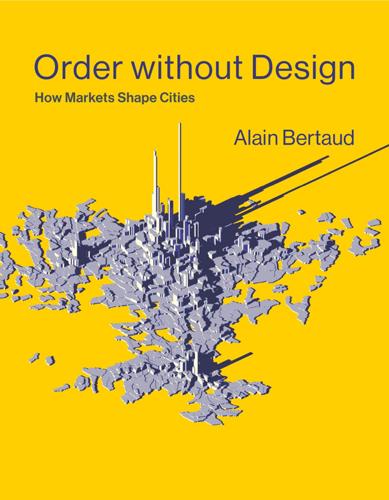
Order Without Design: How Markets Shape Cities
by
Alain Bertaud
Published 9 Nov 2018
Ideally, matching supply and demand perfectly would require that a similar rental system be applied to vehicles using urban roads. The charge, as it is practiced for hotel rooms, should be adjusted to maintain as close to full road occupancy as possible. In the case of urban roads, the objective of the congestion charge is not to maximize a city’s income but to prevent congestion above a set level. A car should therefore be charged for the increased travel time imposed on all other drivers due to its presence on the road. Congestion pricing adjusts demand for roads in two ways: it discourages driving during peak hours for trips that could be done at other hours, and it encourages using vehicles more efficiently, either by increasing occupancy, sharing vehicles, or using less road-intensive means of transport (e.g., motorcycles or public transport).
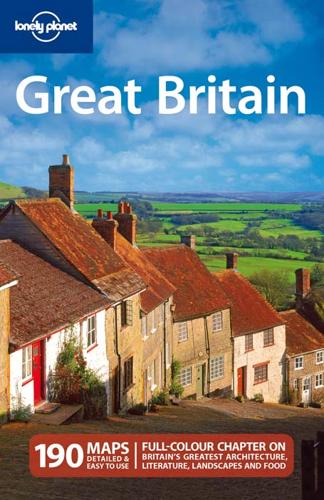
Great Britain
by
David Else
and
Fionn Davenport
Published 2 Jan 2007
Return to beginning of chapter TRAVELLING RESPONSIBLY Britons share their compact and increasingly crowded island with around 33 million cars, vans, buses and lorries – that’s more than one vehicle for every two people. Traffic congestion and carbon emissions are serious problems that are only now beginning to be tackled head-on. In the past, the government’s response to overcrowded roads has been to build more of them; today, politicians have been forced to look at other approaches. While London has its congestion charge, Sustrans (www.sustrans.org.uk) – a group focused on sustainable transport – is busy creating a national network of cycle routes; and Worcester, Peterborough and Darlington have been chosen as showcase sustainable transport towns, with government-funded projects to promote cycling, walking and public transport as realistic alternatives to car use
…
In 2000 the modern metropolis got its first Mayor of London (as opposed to the Lord Mayor of the City of London), an elected role covering the City and all 32 urban boroughs. The position was taken in 2008 by Boris Johnson, a Conservative known for his unruly shock of blond hair, appearances on TV game shows and controversial editorials in Spectator magazine. One thing the bicycle-riding mayor will have to contend with is the city’s traffic snarls. A congestion charge on cars entering the central city had initial success when introduced by his predecessor, but rush-hour congestion has now increased to pre-charge levels. July 2005 was a roller-coaster month for London. Snatching victory from the jaws of Paris (the favourites), the city won its bid to host the 2012 Olympics and celebrated with a frenzy of flag-waving.
…
A black taxi costs around £95 to/from central London, minicabs around £55. Car Don’t even think about it. Driving in London is a nightmare: traffic is heavy, parking is either impossible or expensive and wheel-clampers keep busy. If you drive into central London from 7am to 6pm on a weekday, you’ll need to pay an £8 per day congestion charge (visit www.tfl.gov.uk/roadusers/congestioncharging/to register) or face a hefty fine. If you’re hiring a car to continue your trip, take the tube to Heathrow and pick it up from there. Public Transport Although locals love to complain about it, London’s public transport is excellent, with tubes, trains, buses and boats conspiring to get you anywhere you need to go.

England
by
David Else
Published 14 Oct 2010
In 2000 the modern metropolis got its first Mayor of London (as opposed to the Lord Mayor of the City of London), an elected role covering the City and all 32 urban boroughs. The position was taken in 2008 by Boris Johnson, a Conservative known for his unruly shock of blond hair, appearances on TV game shows and controversial editorials in Spectator magazine. One thing the bicycle-riding mayor will have to contend with is the city’s traffic snarls. A congestion charge on cars entering the central city had initial success when introduced by his predecessor, but rush-hour congestion has now increased to precharge levels. July 2005 was a roller-coaster month for London. Snatching victory from the jaws of Paris (the favourites), the city won its bid to host the 2012 Olympics and celebrated with a frenzy of flag waving.
…
London has some 40 miles of inner-city canals, mostly built in the 19th century. Return to beginning of chapter Car Don’t even think about it. Driving in London is a nightmare: traffic is heavy, parking is either impossible or expensive and wheel-clampers keep busy. If you drive into central London from 7am to 6pm on a weekday, you’ll need to pay an £8 per day congestion charge (visit www.tfl.gov.uk to register) or face a hefty fine. If you’re hiring a car to continue your trip, take the tube to Heathrow and pick it up from there. Return to beginning of chapter Outdoor England * * * WALKING CYCLING OTHER ACTIVITIES * * * A post box welcomes you to Great LangdaleClick here, Lakes District National Park What’s the best way to get off the beaten track as you travel around England?
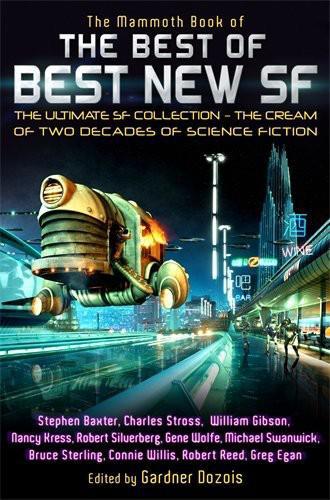
The Best of Best New SF
by
Gardner R. Dozois
Published 1 Jan 2005
“Nathan went through to join Murray last week,” she said sourly. “Nathan? Your brother Nathan?” “Only by DNA, and I’m not even certain of that after this. Little prick. Mary and the kids went with him.” “Why?” “Why do any of them go? War in Iraq, crap public transport, psycho Bush threatening North Korea, the congestion charge, council tax. The real world, in other words, that’s what he’s running away from. He thinks he’s going to be living in some kind of tropical tax haven with fairies doing all the hard work, the dumb shit.” “I’m sorry. What did your mum say? She must be devastated.” Abbey growled, and took another slug.

Frommer's England 2011: With Wales
by
Darwin Porter
and
Danforth Prince
Published 2 Jan 2010
Call the 24-hour hot line (& 020/7222-1234) for bus schedule and fare information. 114 08_615386-ch05.indd 11408_615386-ch05.indd 114 8/24/10 2:07 PM8/24/10 2:07 PM By Taxi By Car Don’t drive in congested London. It’s easy to get around without a car; traffic and parking are nightmares; and, to top it off, you have to drive on the left side of the road. It all adds up to a big headache. Another disincentive is that you will have to pay a Congestion Charge of £8 to drive in most of central London between 7am and 6pm Monday to Friday. Larger gas-guzzling cars are charged £25. By Bicycle Fast Facts: London To avoid heavy and potentially dangerous traffic in central London, bikers should stick to the designated paths along the streets. One of the most popular bike-rental shops is On Your Bike, 52–54 Tooley St., London Bridge, SE1 (& 020/7378-6669; www.onyourbike.com; Tube: London Bridge), open Monday to Friday 7:30am to 7pm, Saturday 10am to 6pm, and Sunday 11am to 5pm.

Italy
by
Damien Simonis
Published 31 Jul 2010
While sulphur dioxide levels have been reduced in recent years, primarily by substituting natural gas for coal, much of the smog and poor air quality can be attributed to the fact that Italy has one of the highest per-capita levels of car ownership in the world. In an attempt to tackle this car-dependency, municipal authorities have introduced a series of initiatives. In January 2008, Milan introduced Italy’s first congestion charge, while several cities including Milan and Rome have initiated bike-sharing schemes. On a national level, in 2009 the Italian government committed itself to building four nuclear power plants in an attempt to reduce dependence on oil and gas and reduce greenhouse gas emissions. * * * The official parks website (www.parks.it) offers comprehensive information on Italy’s national and regional parks, marine reserves and designated wetlands, as well as details of local wildlife and educational initiatives